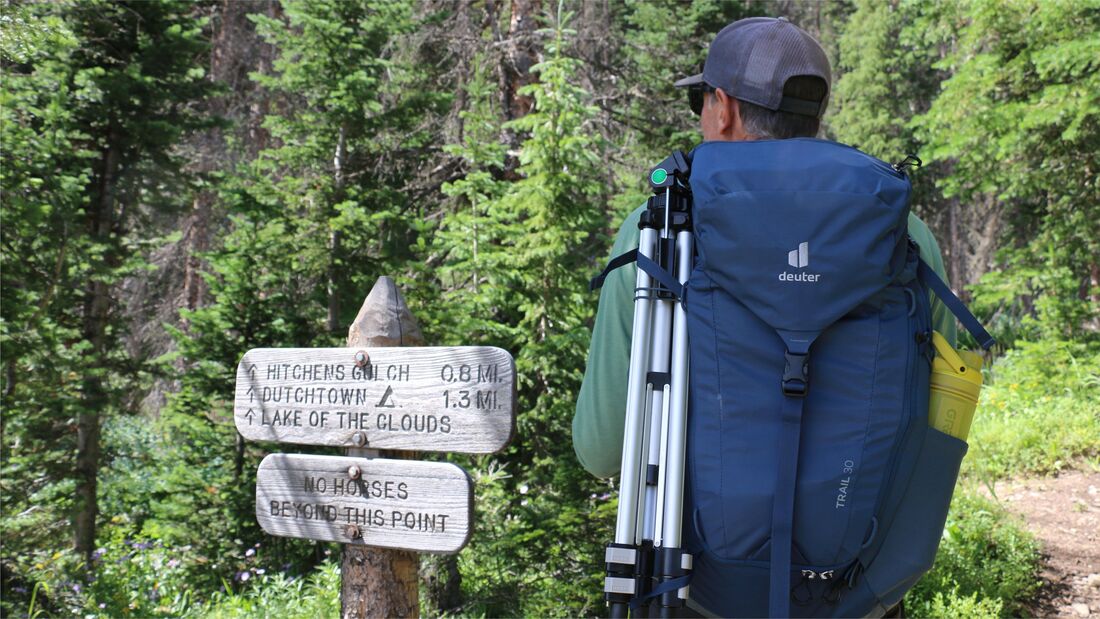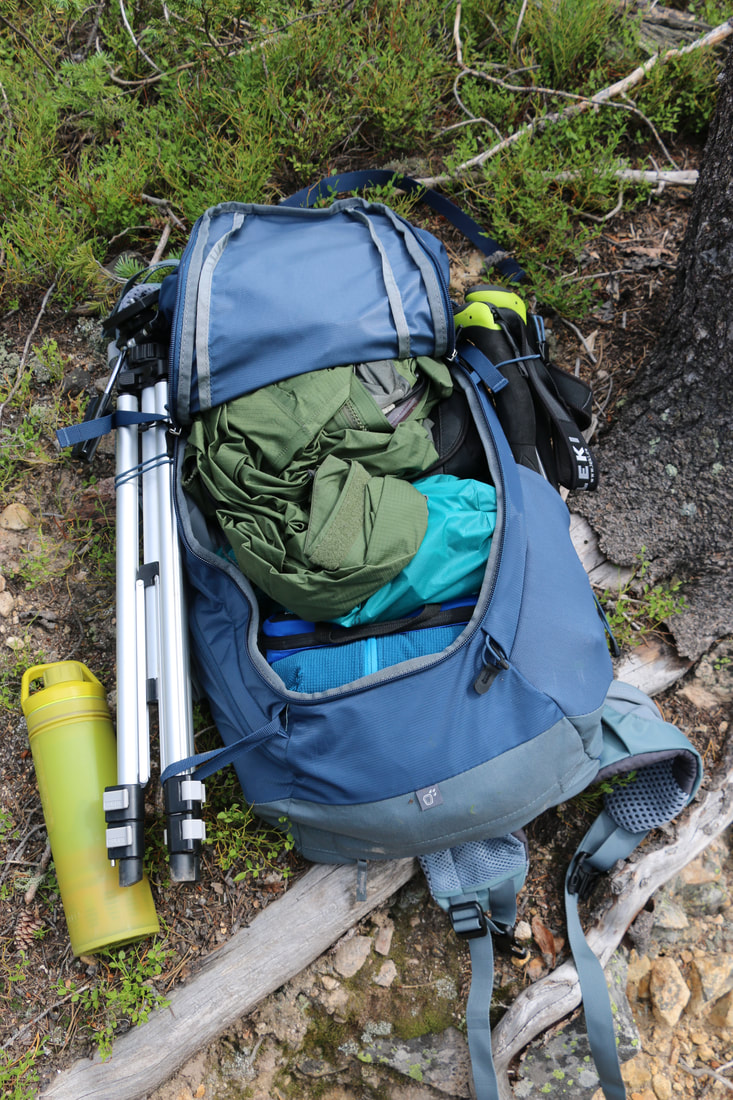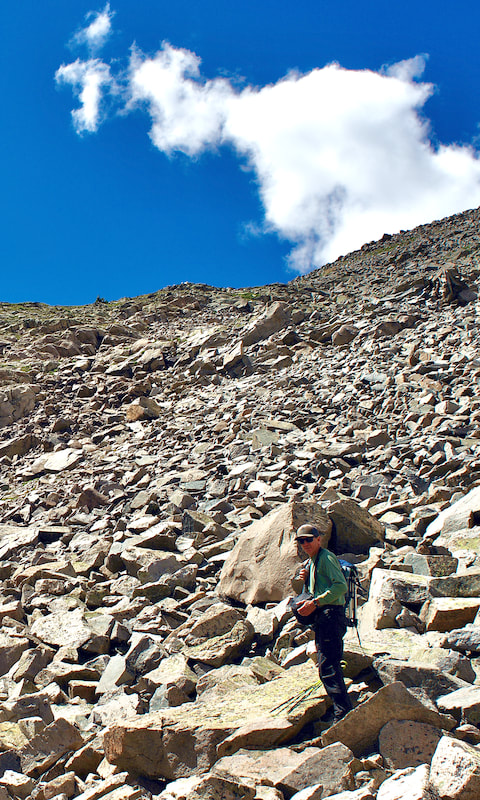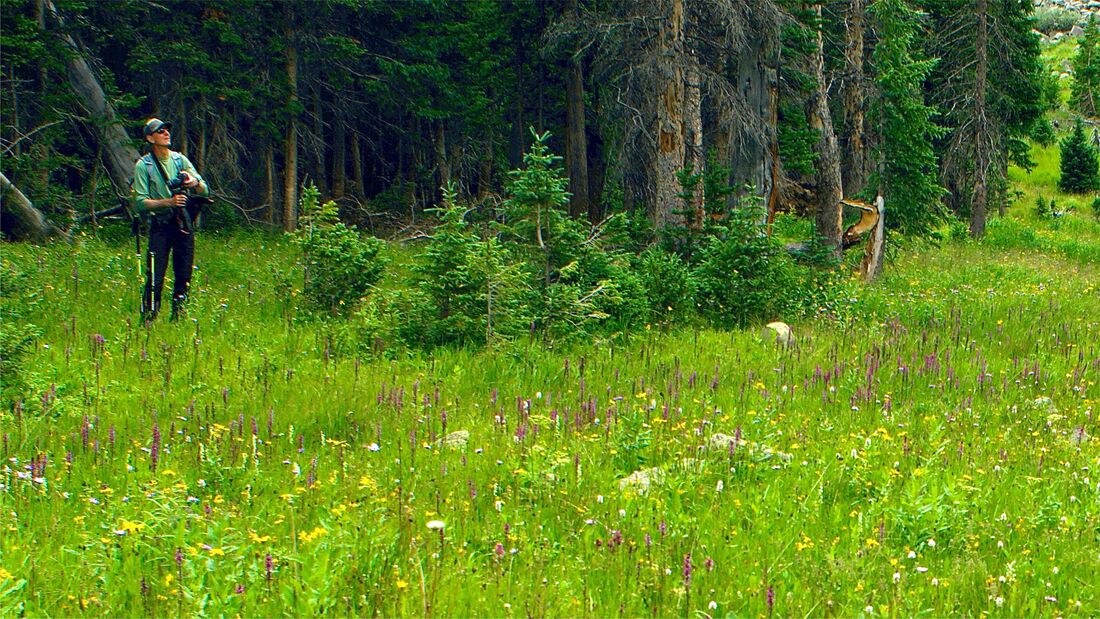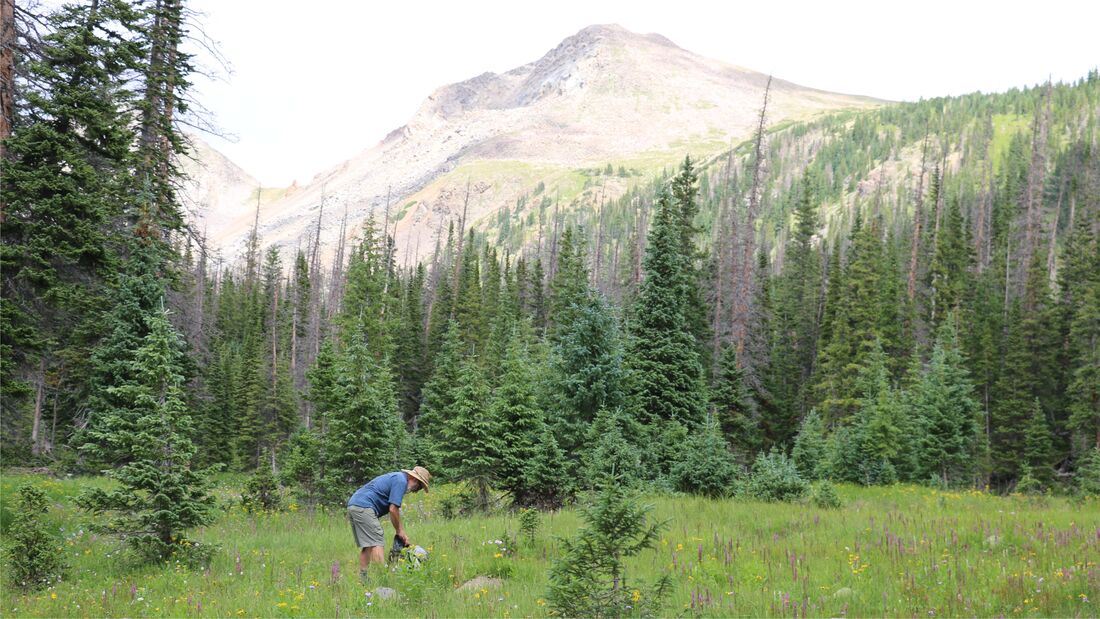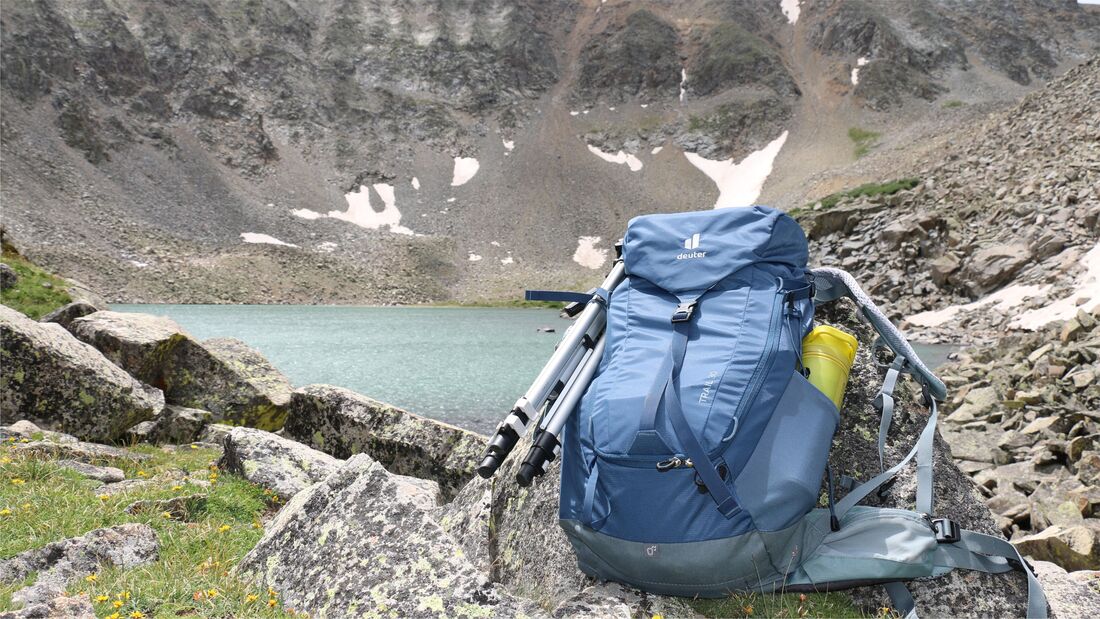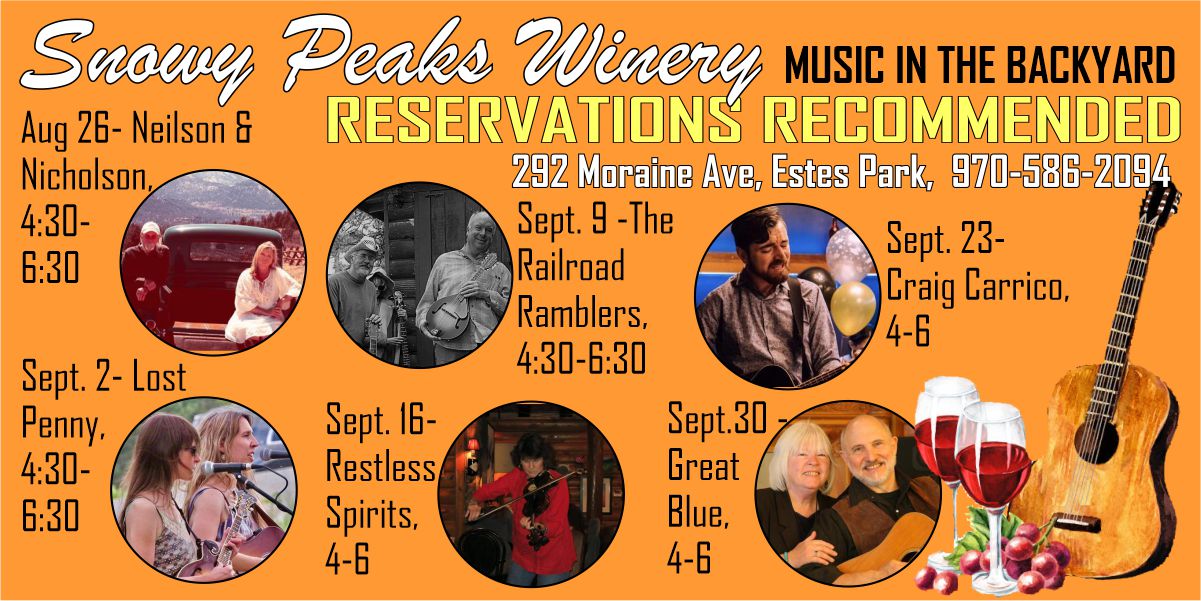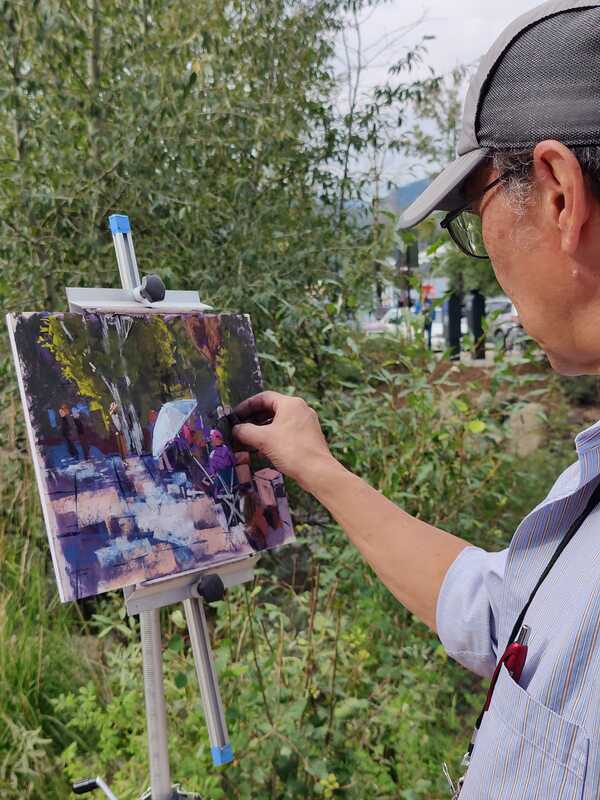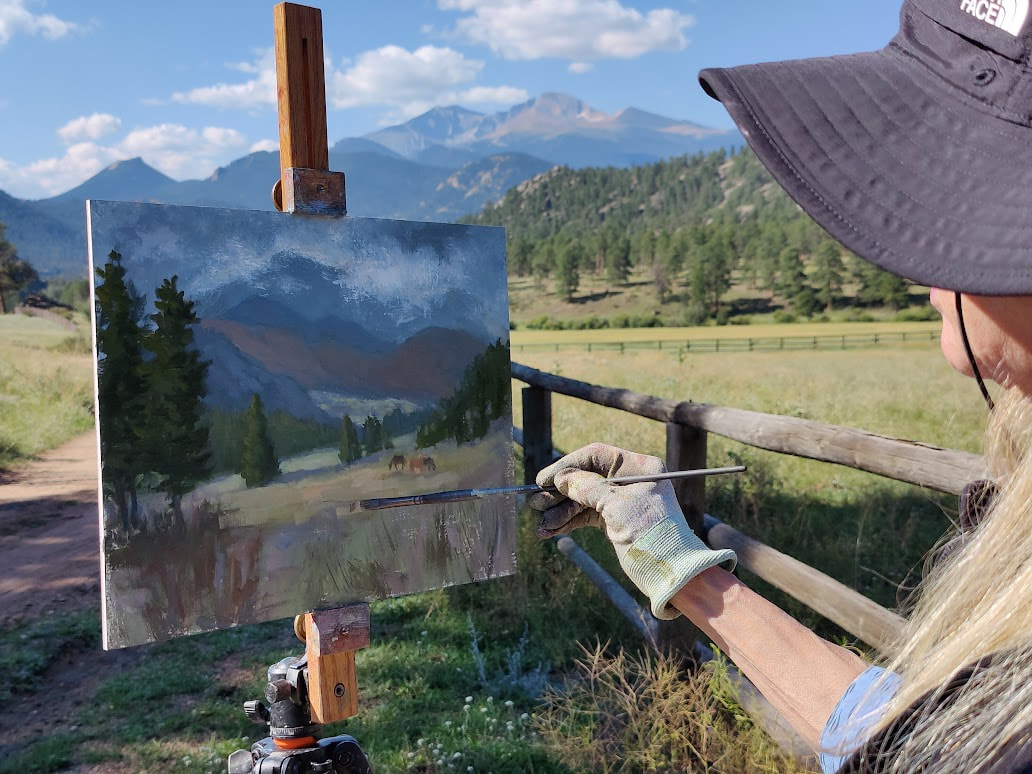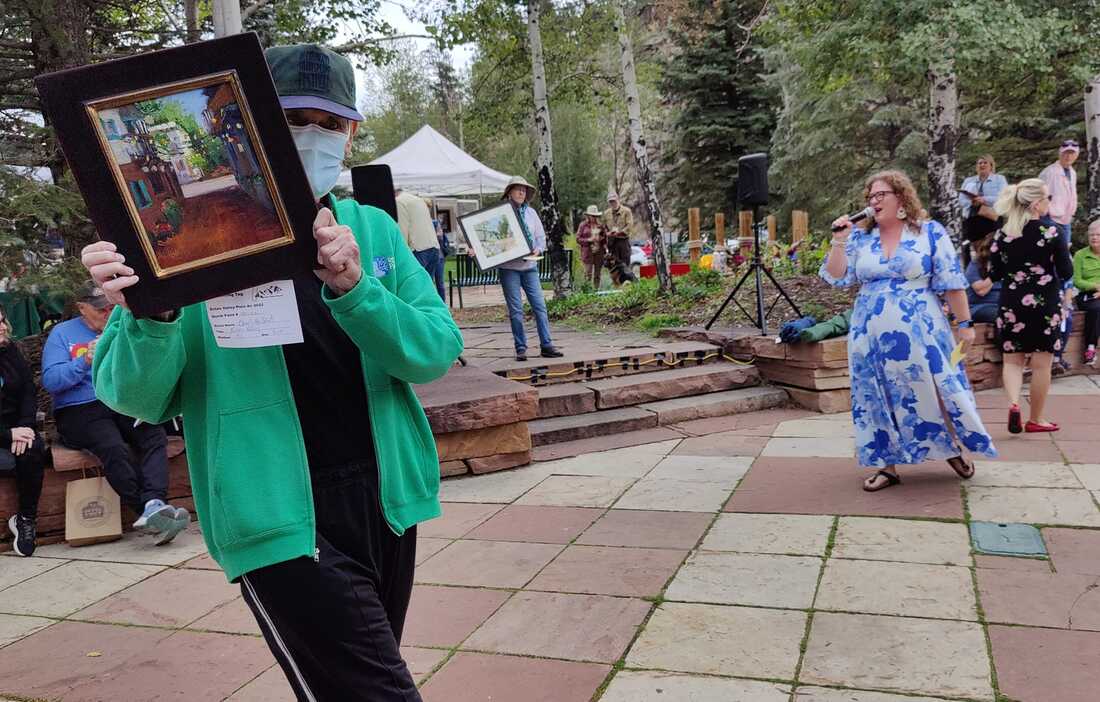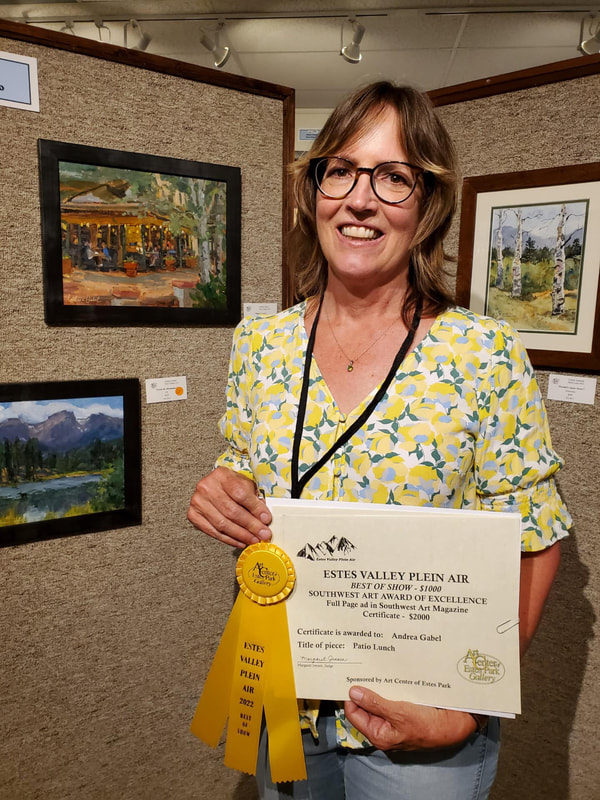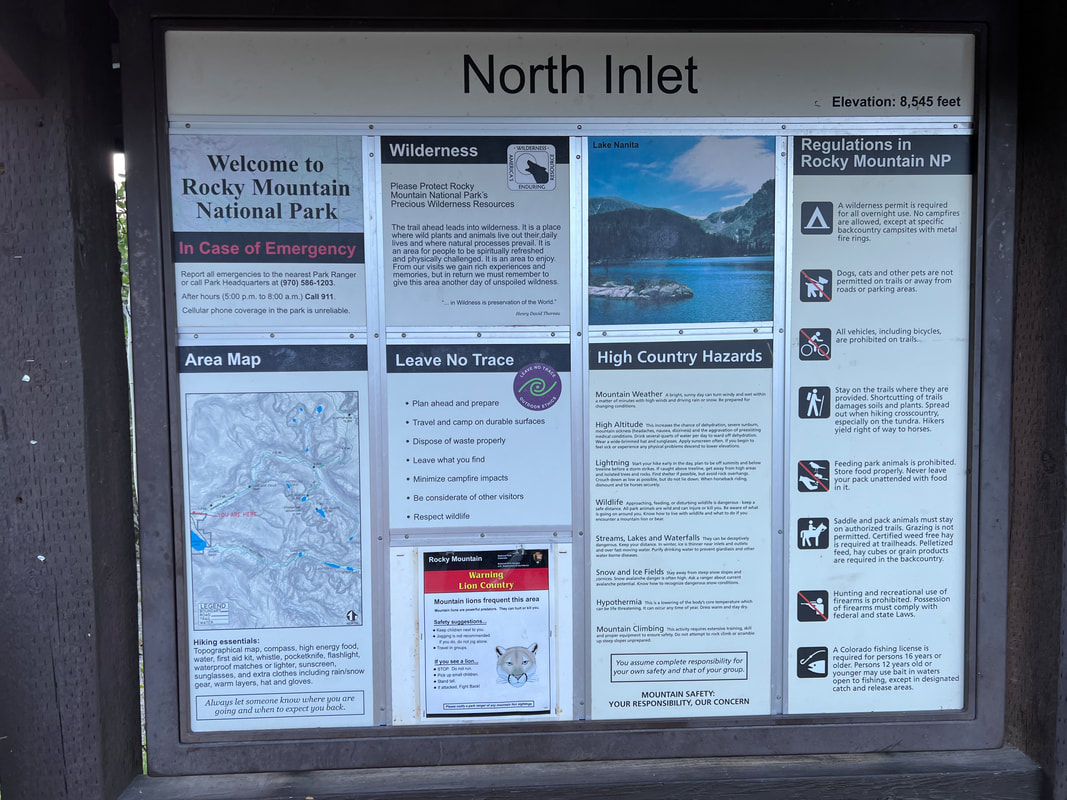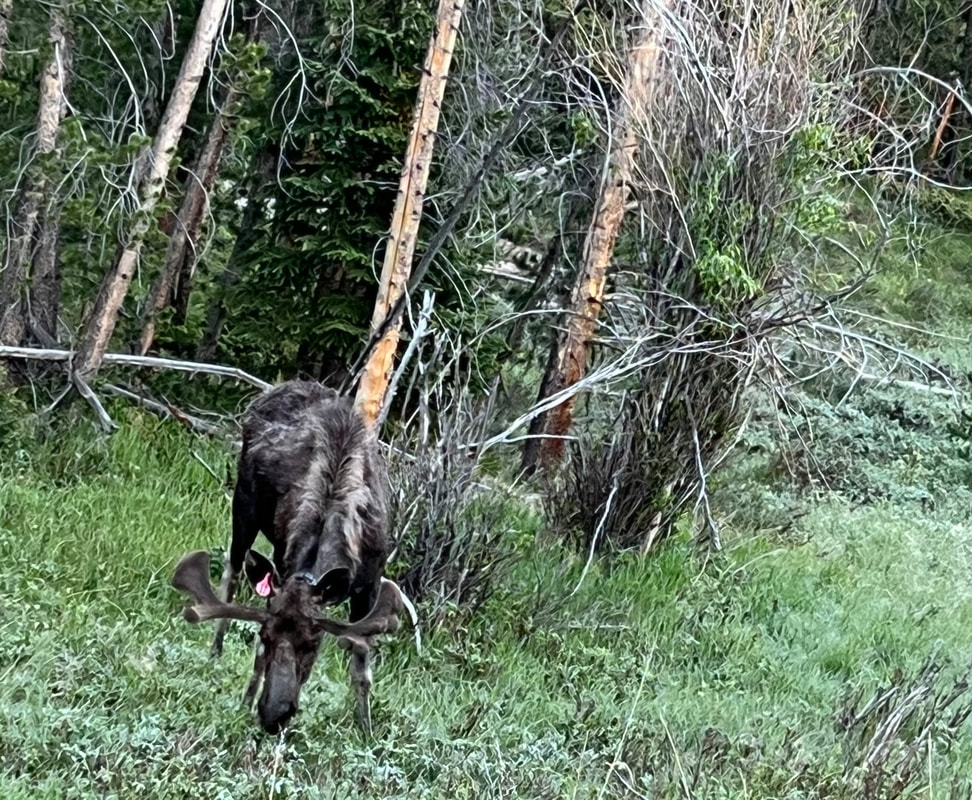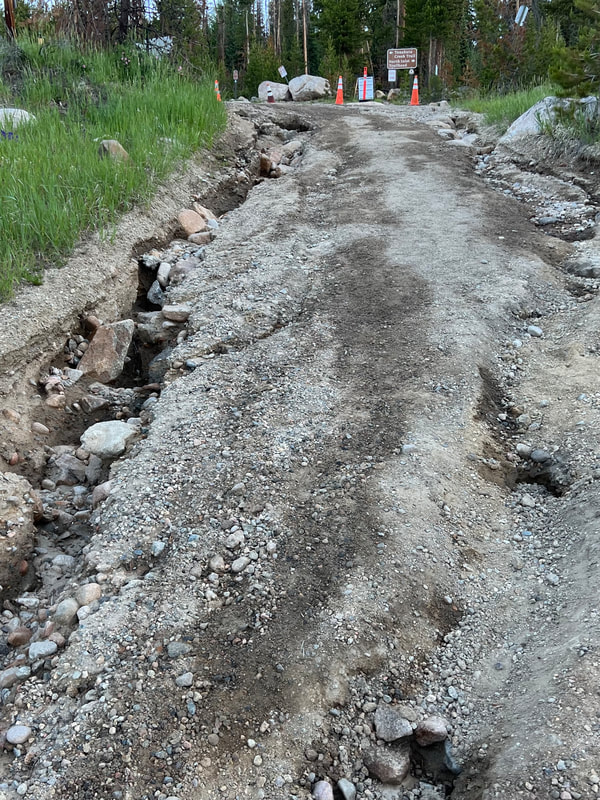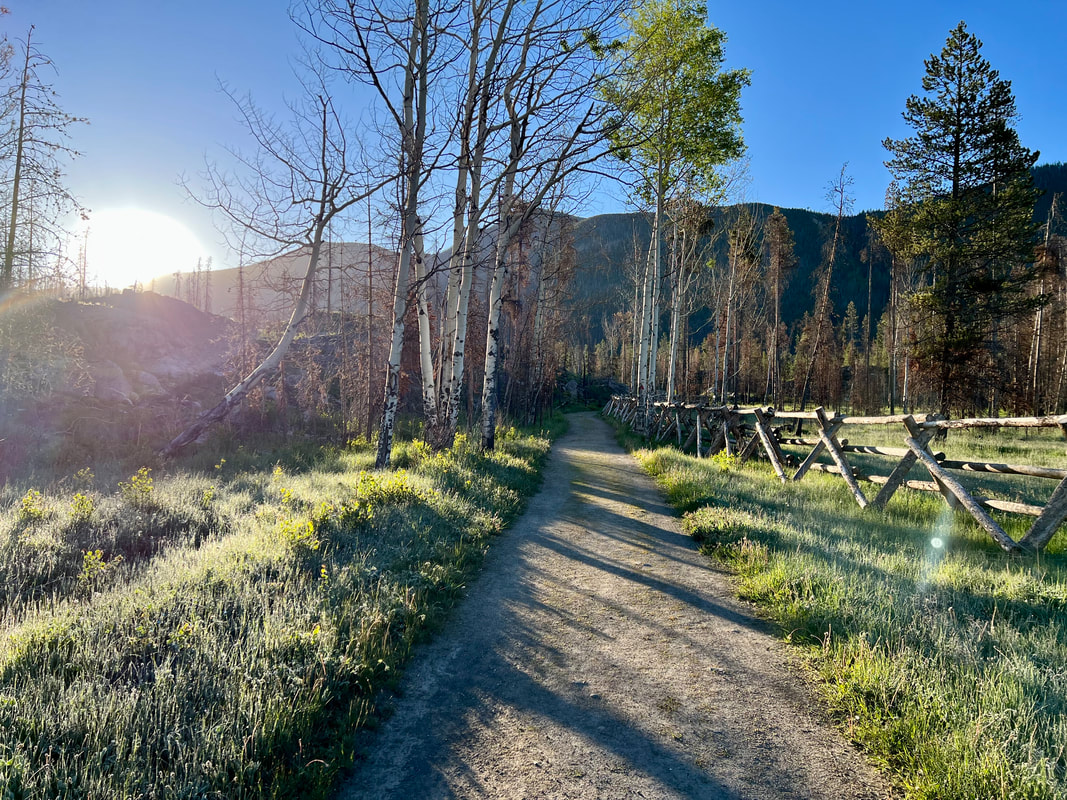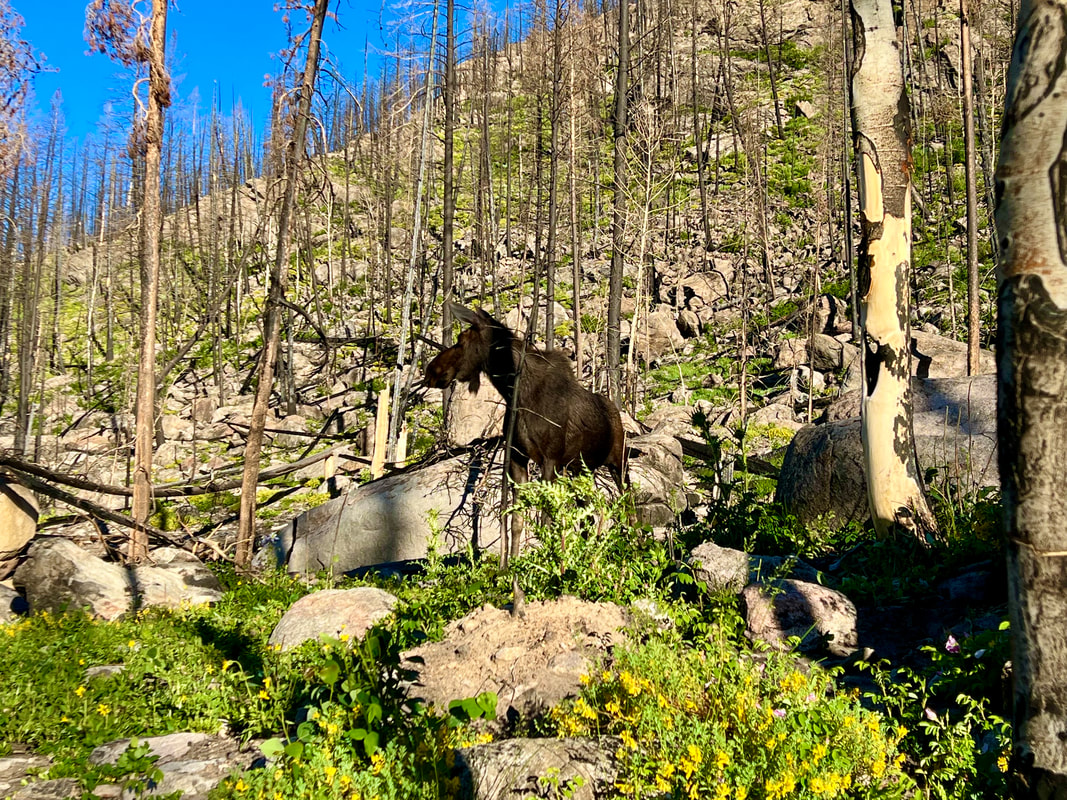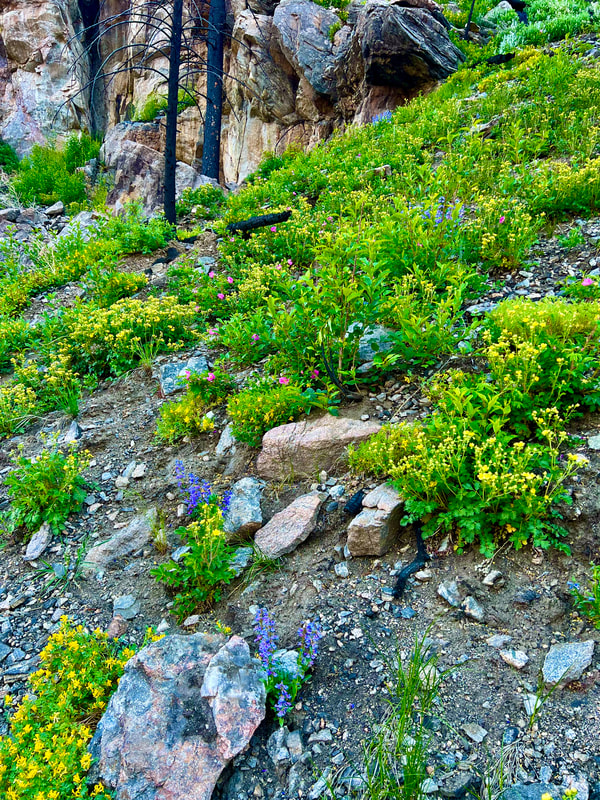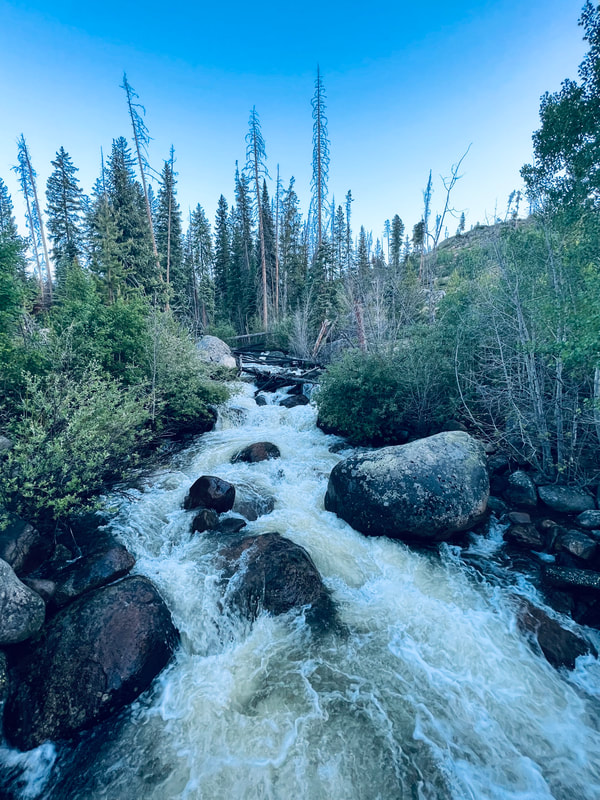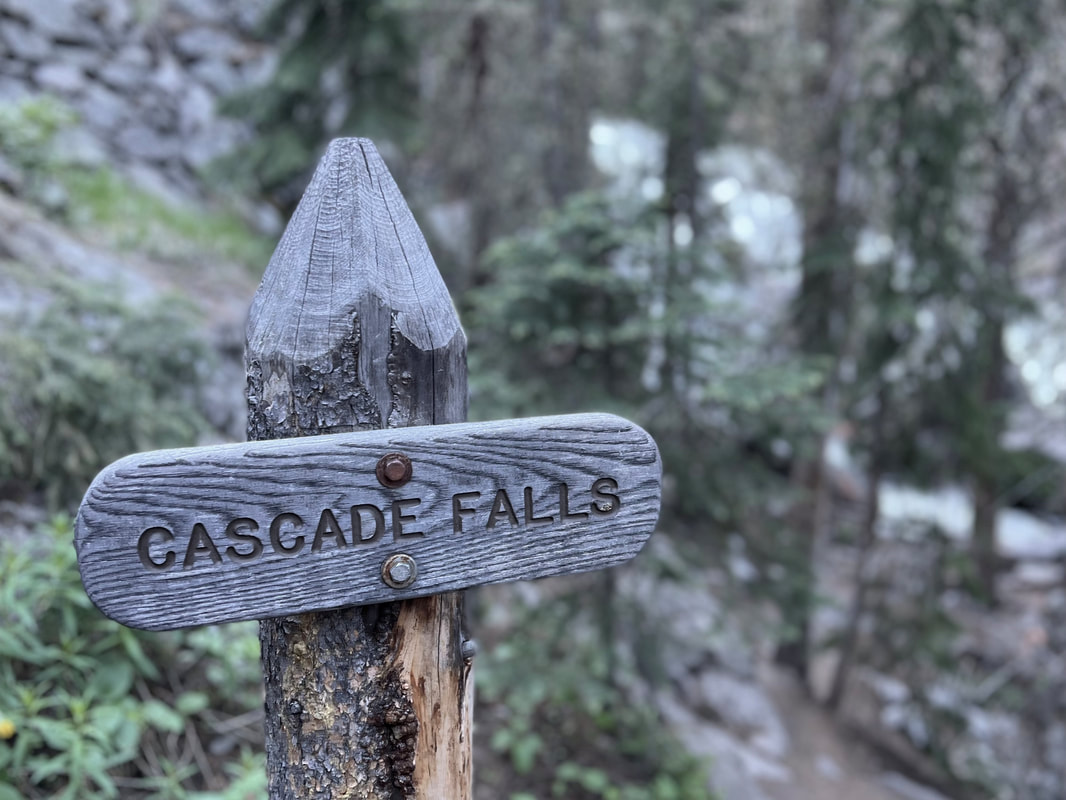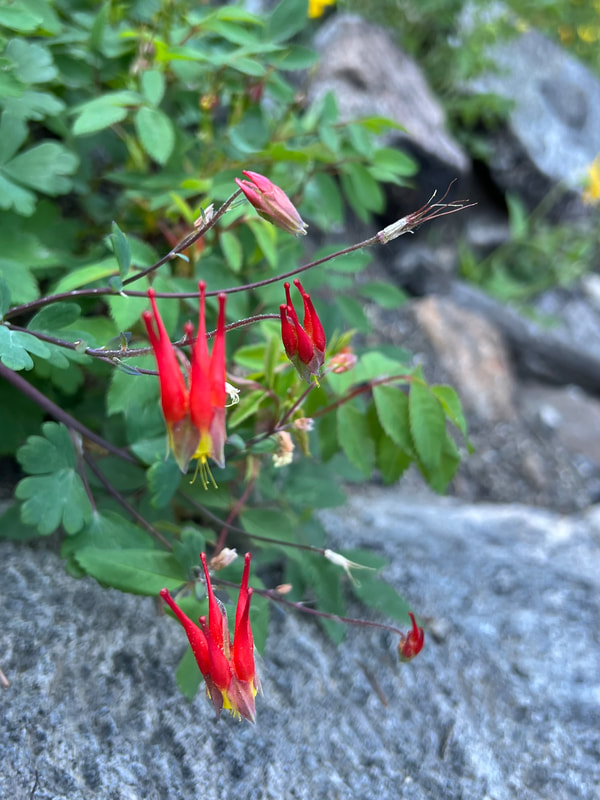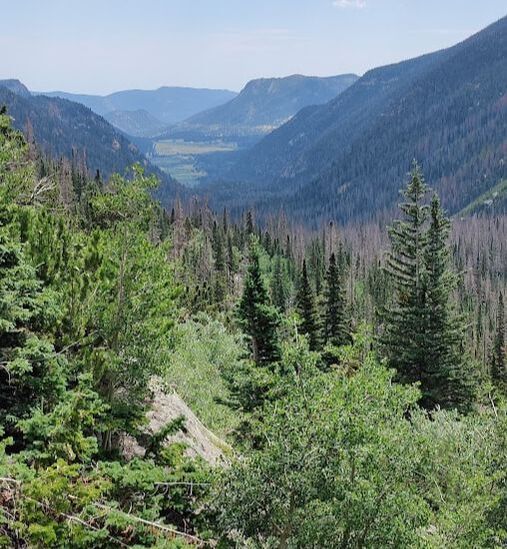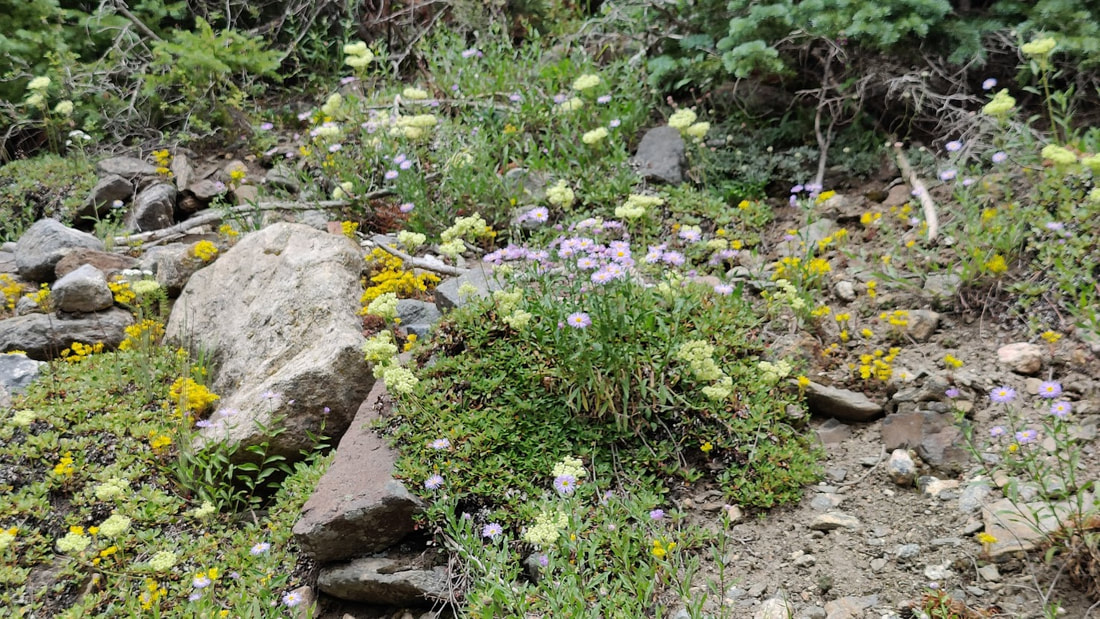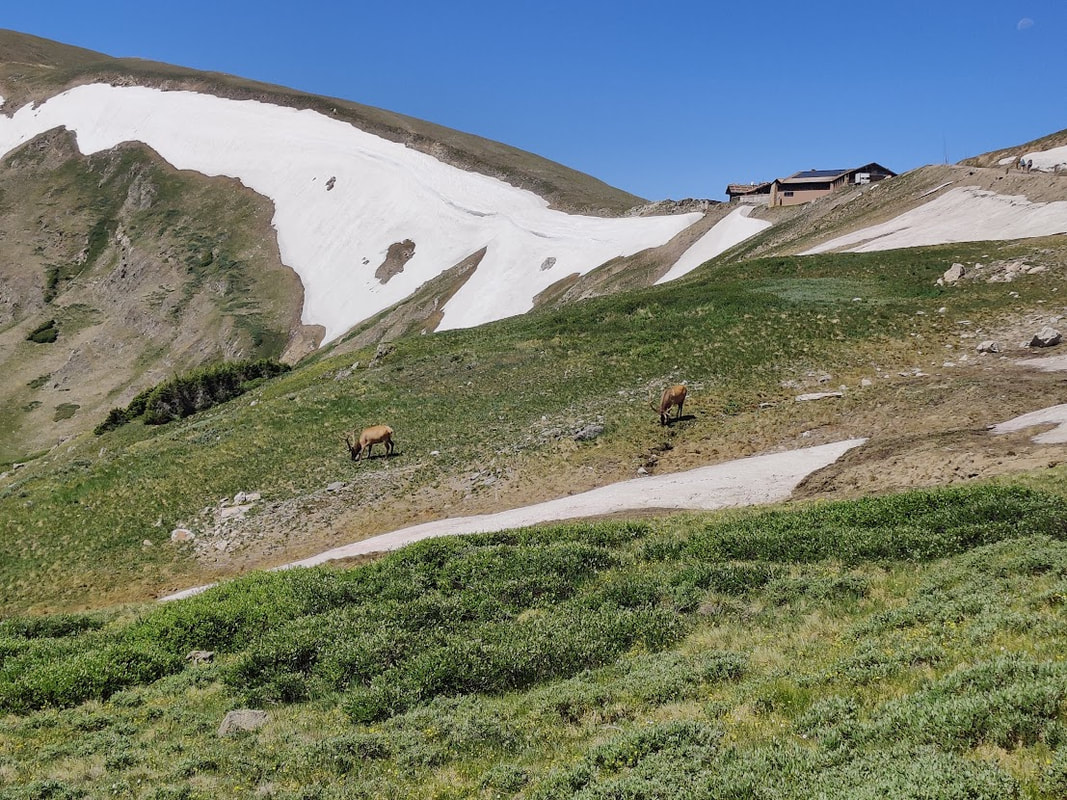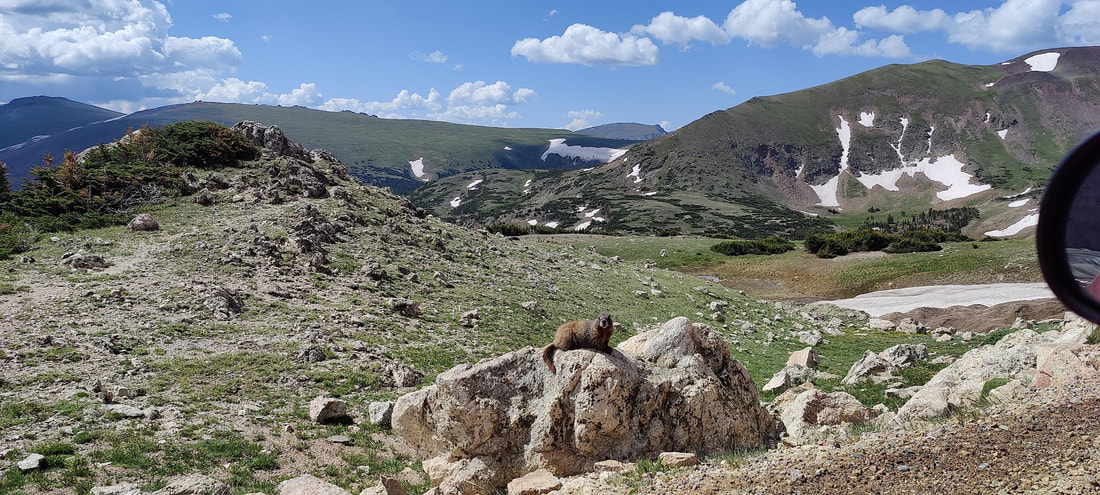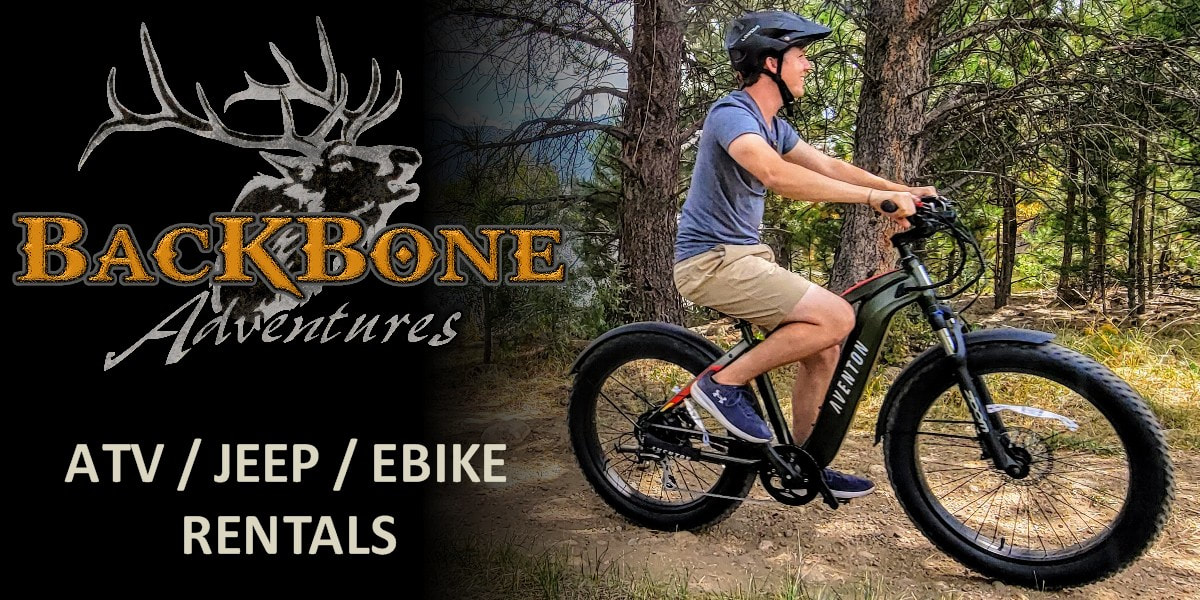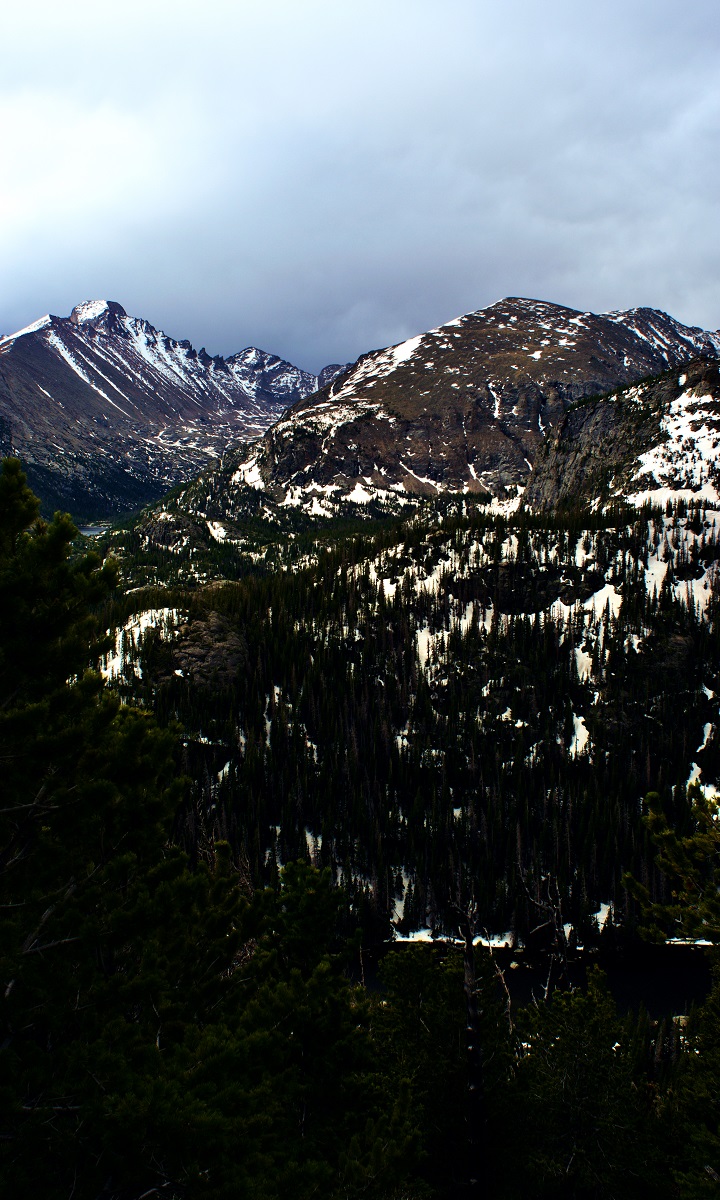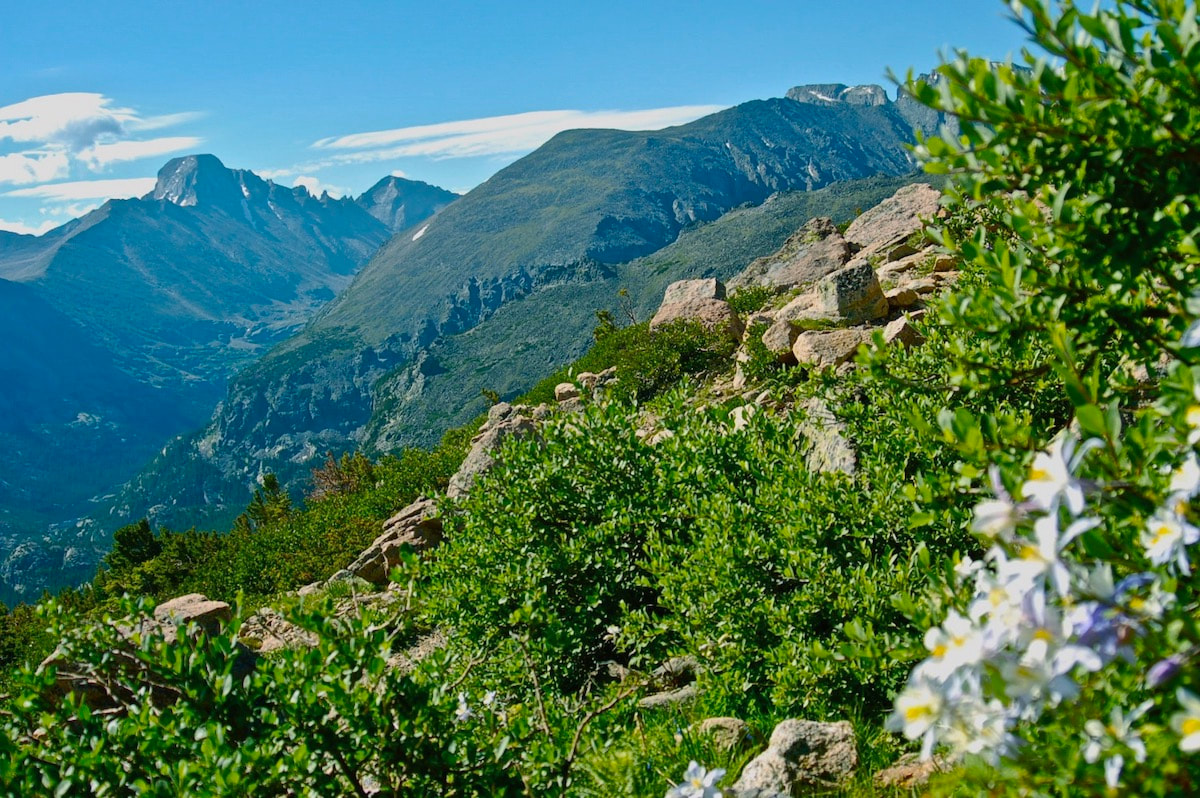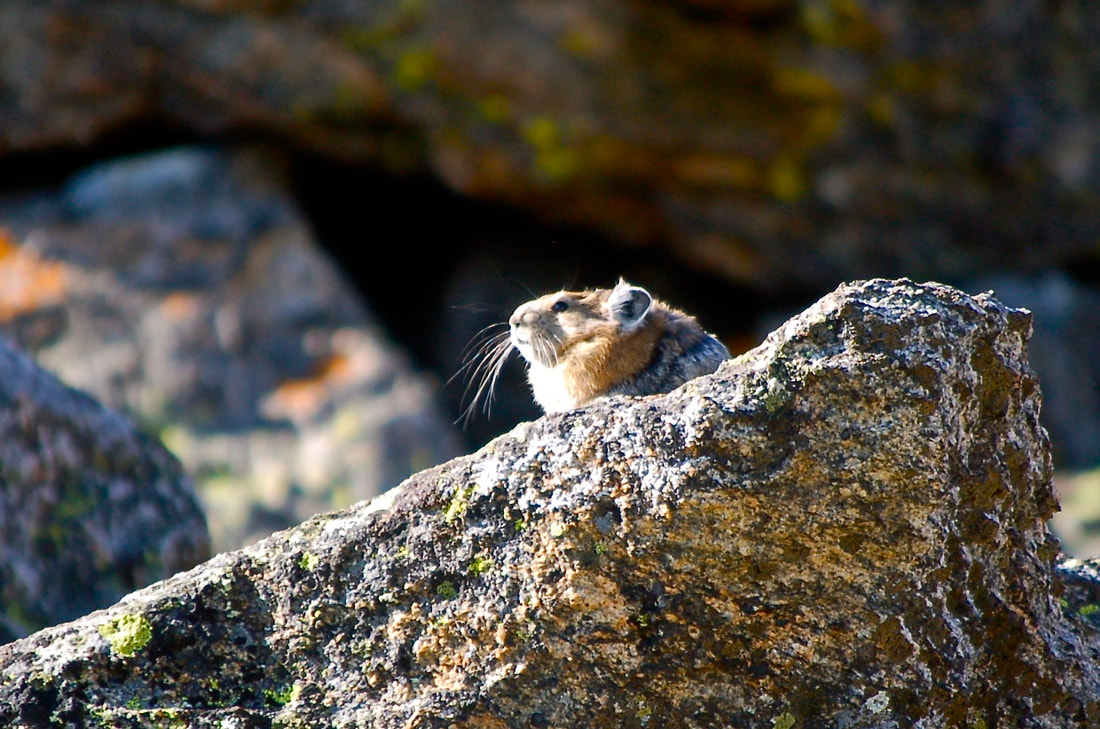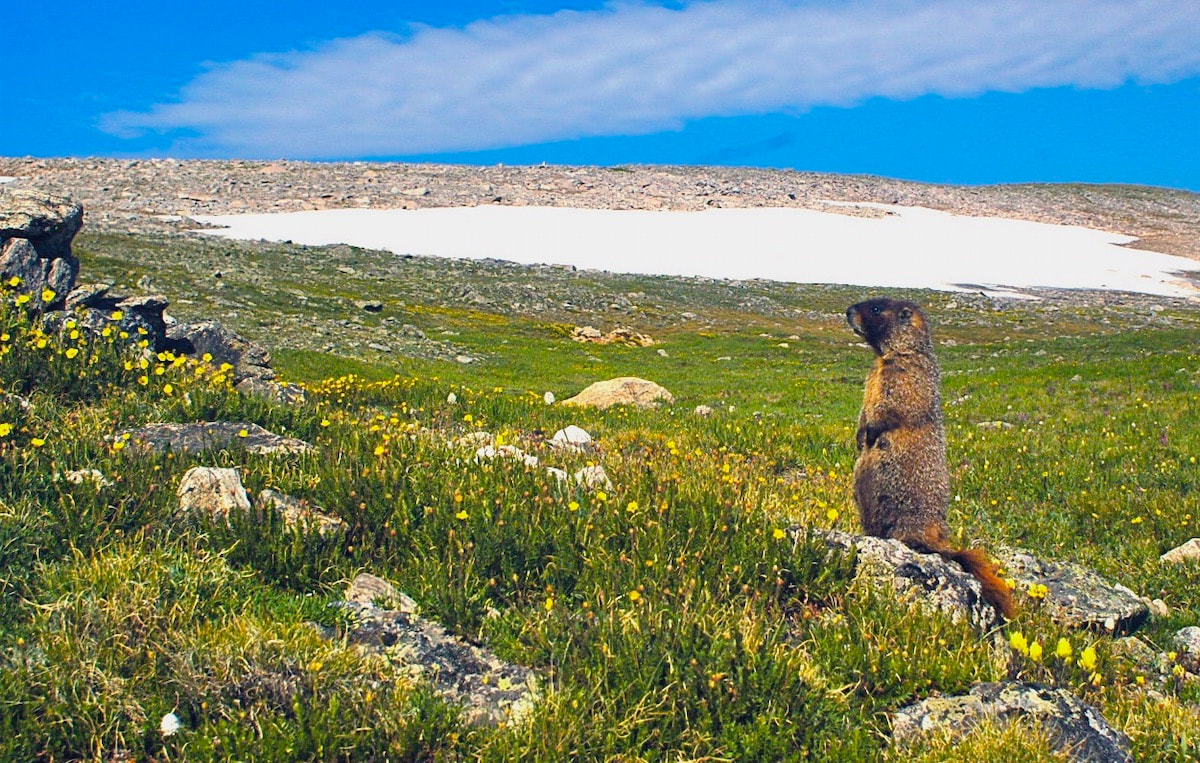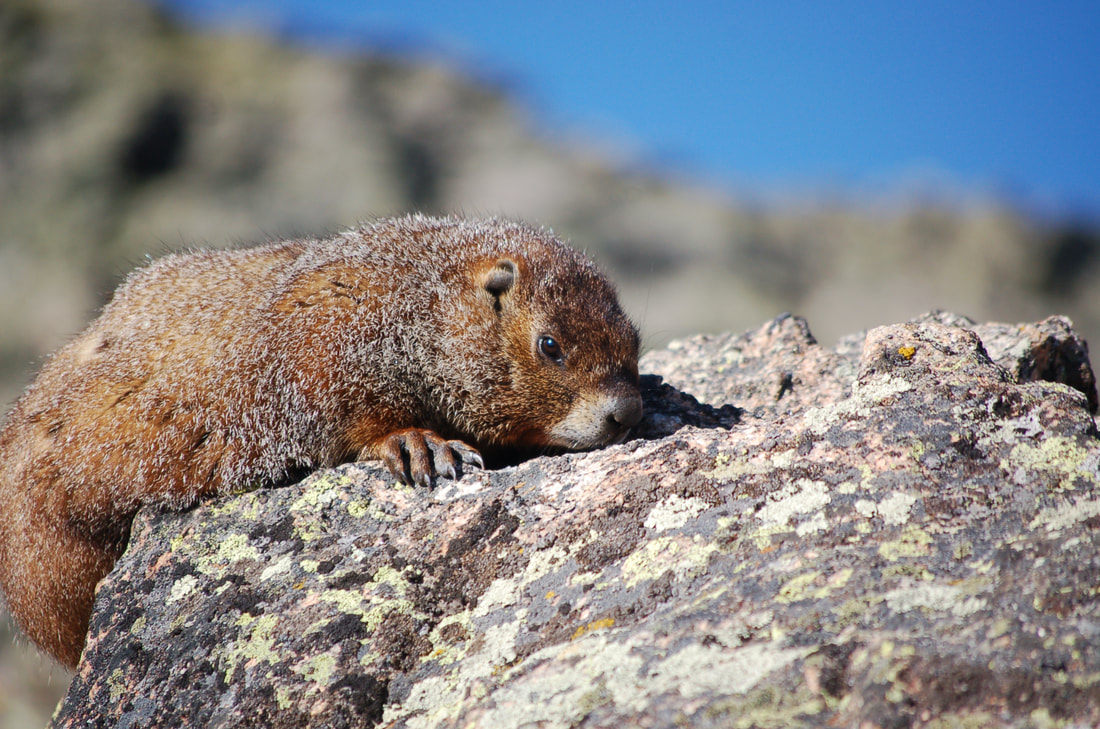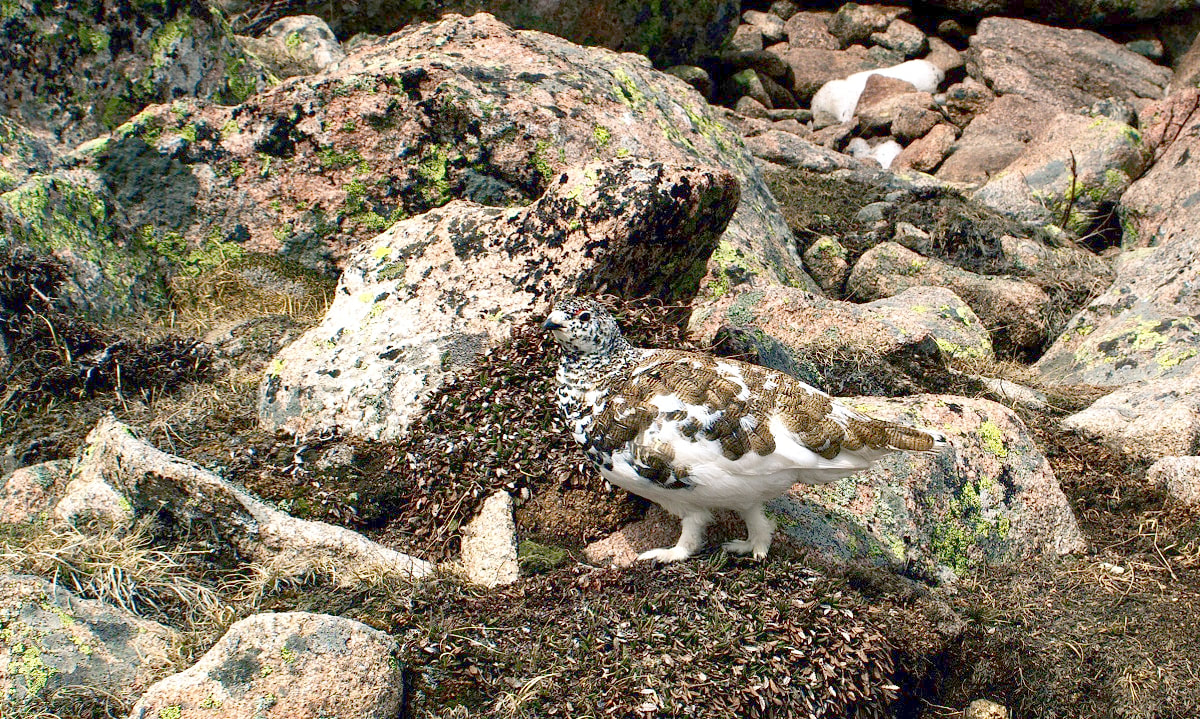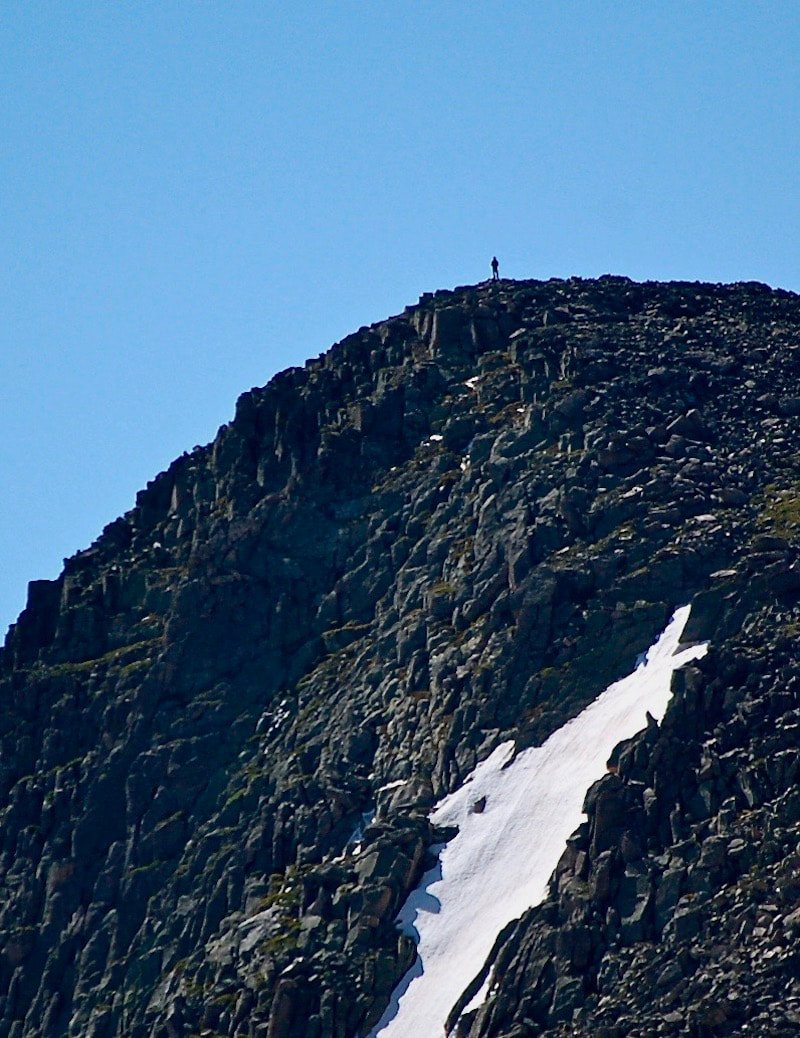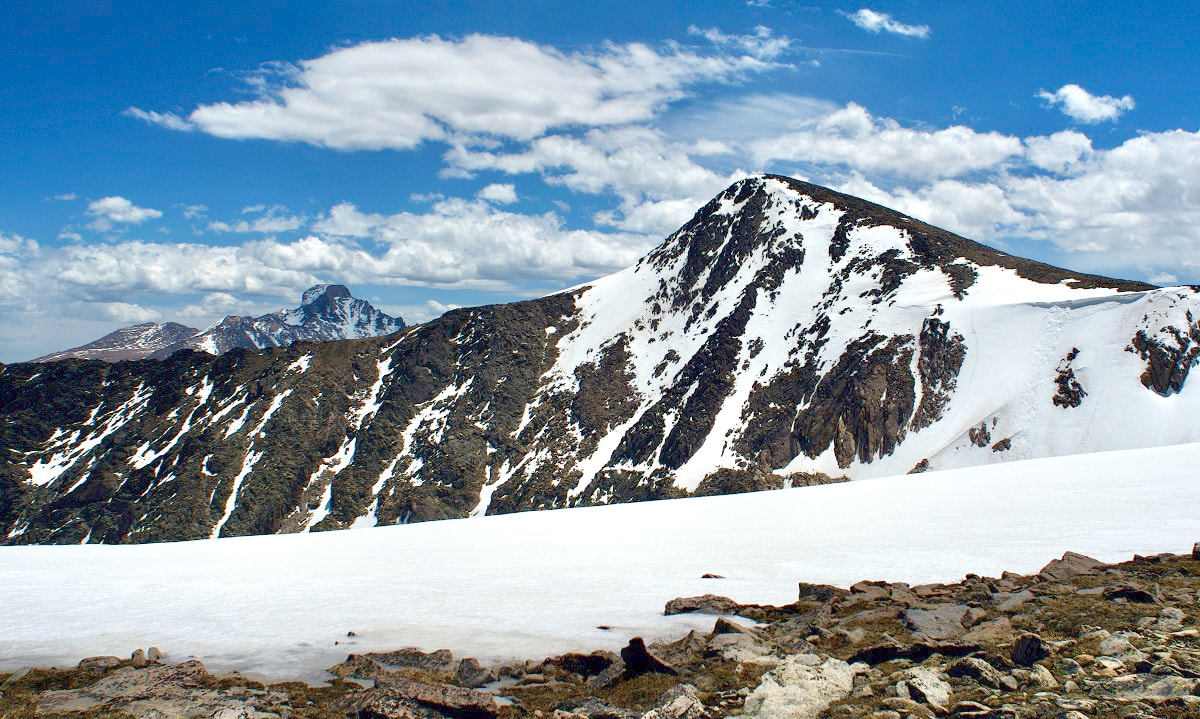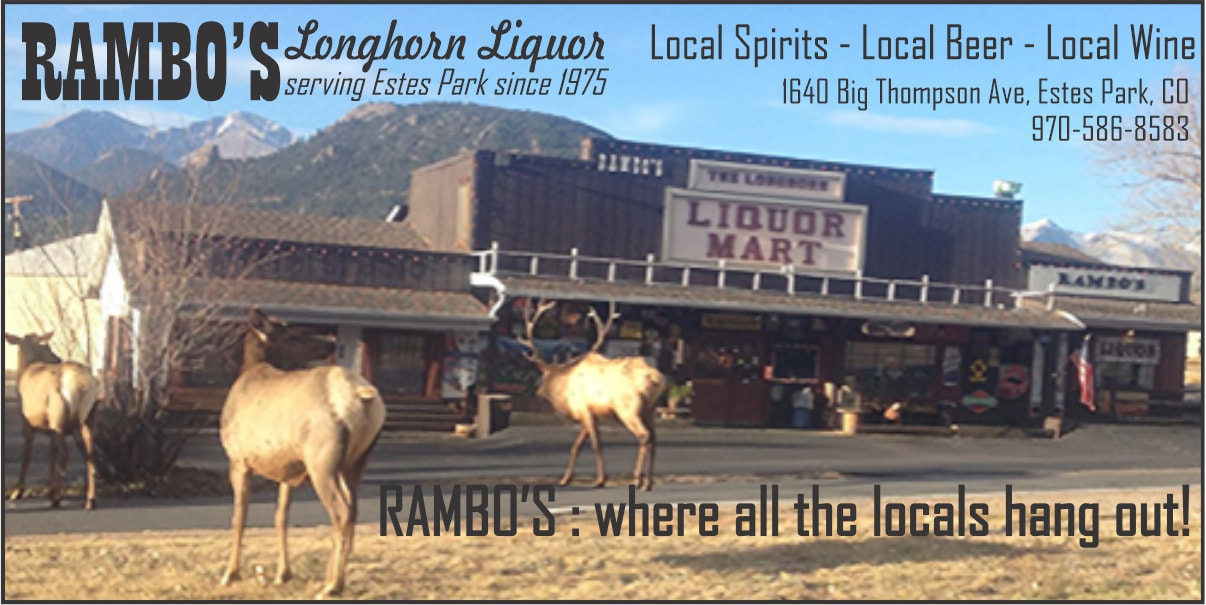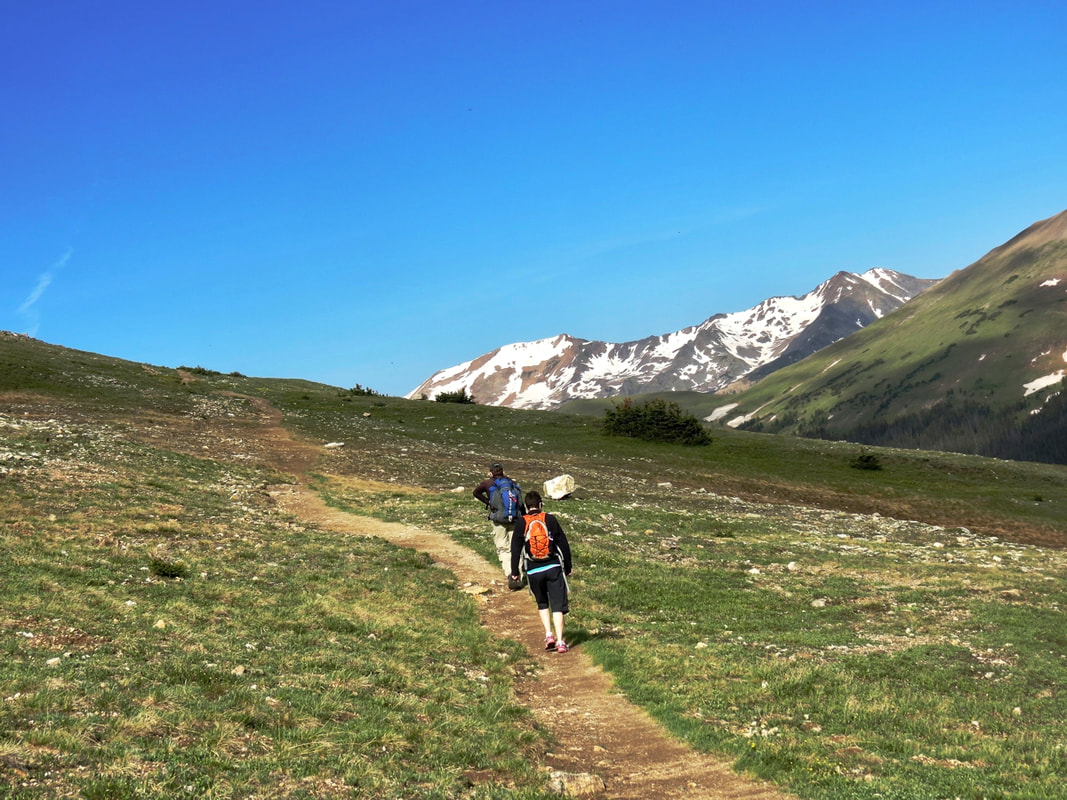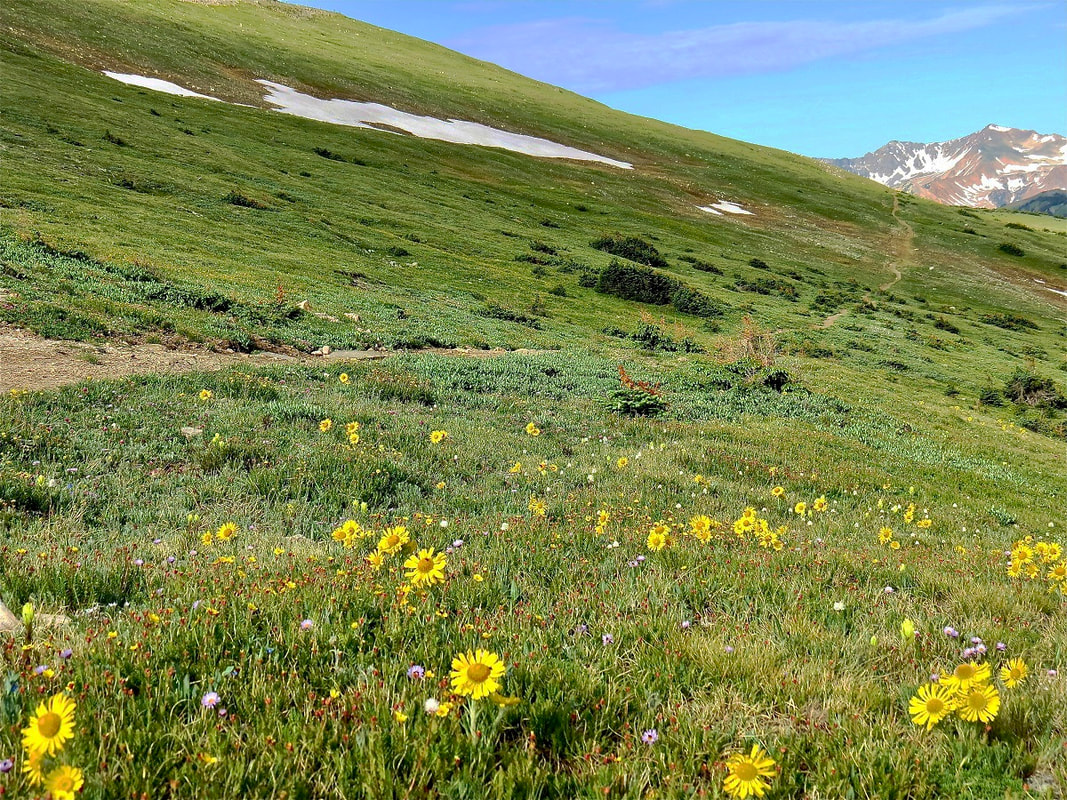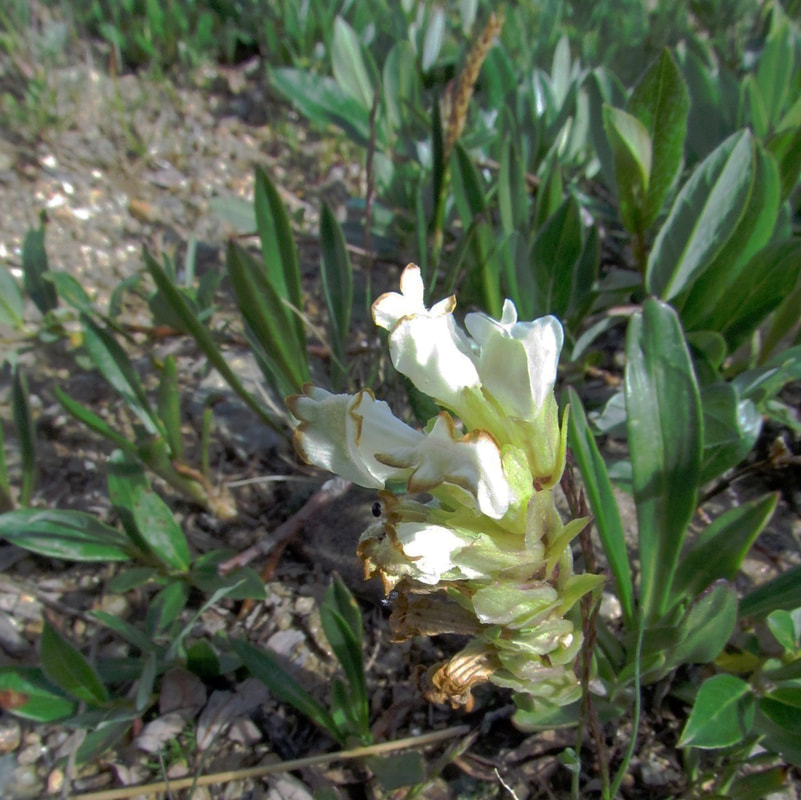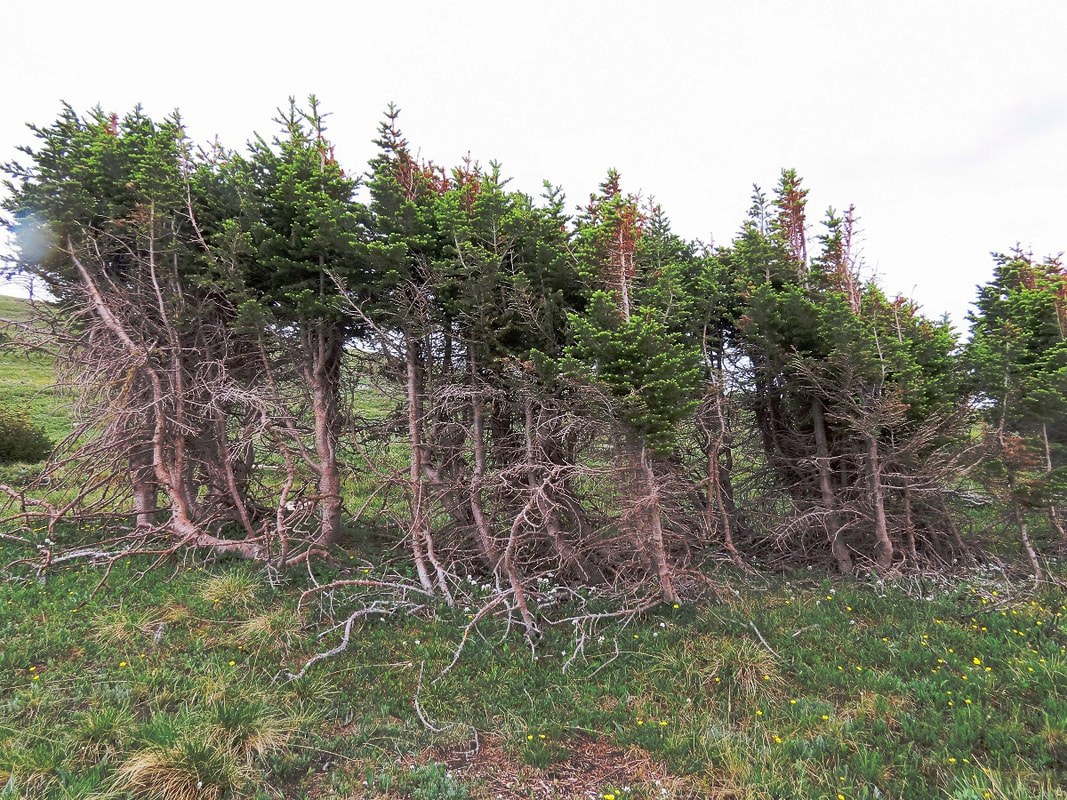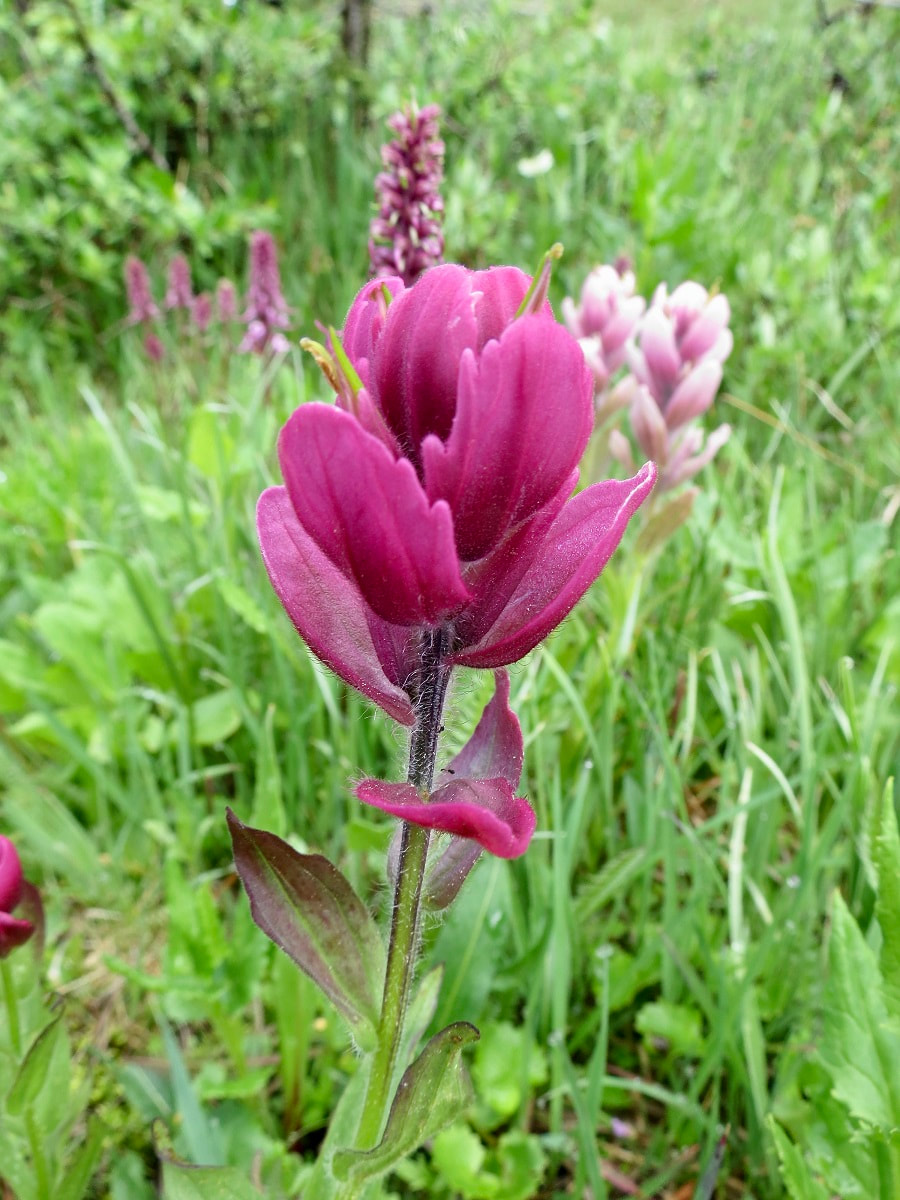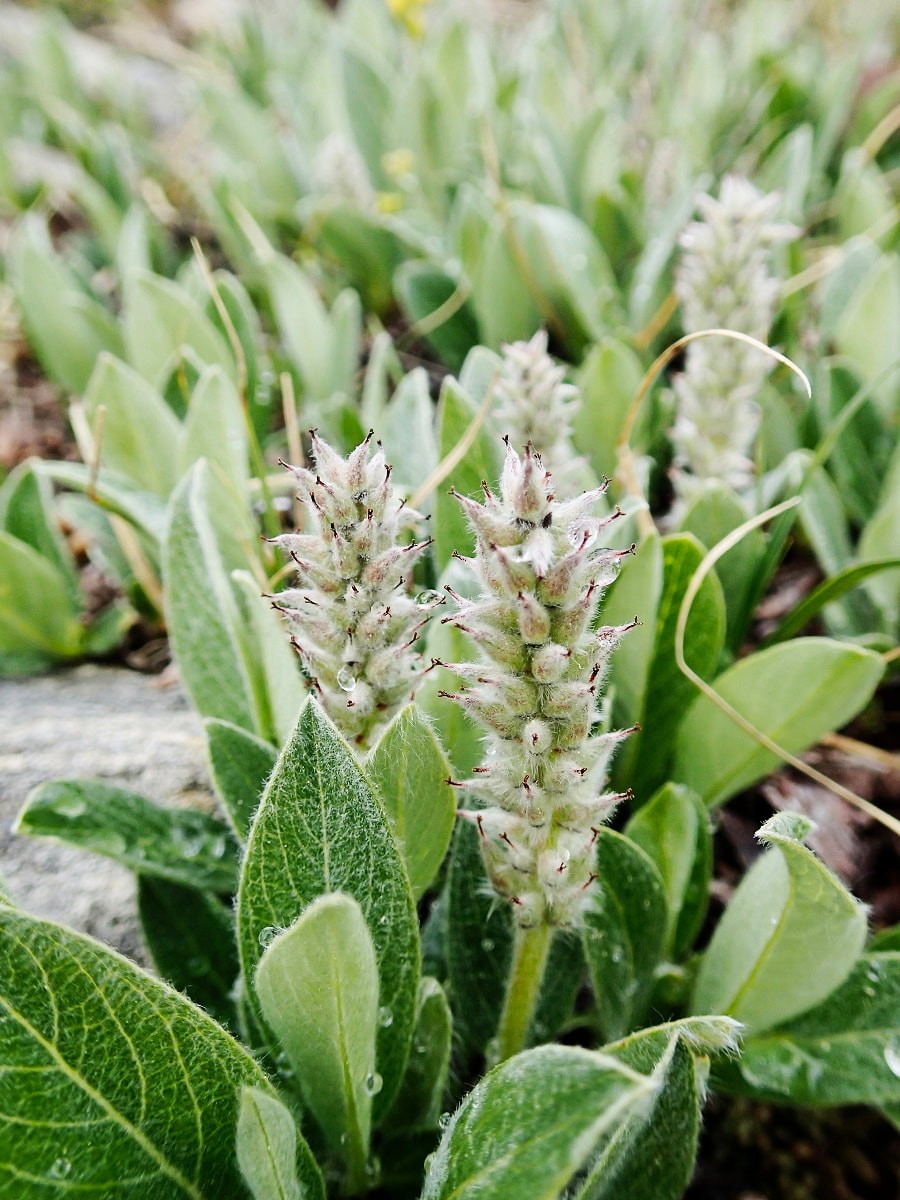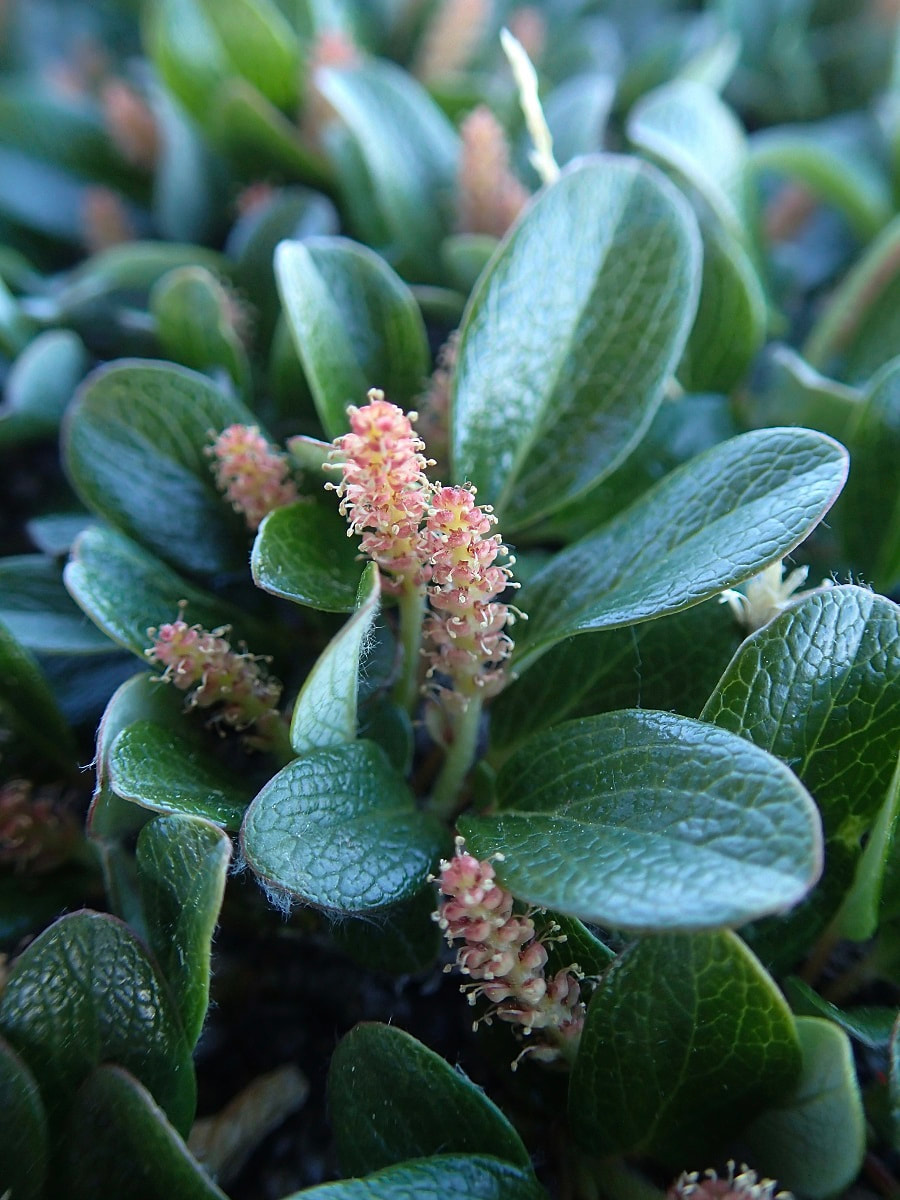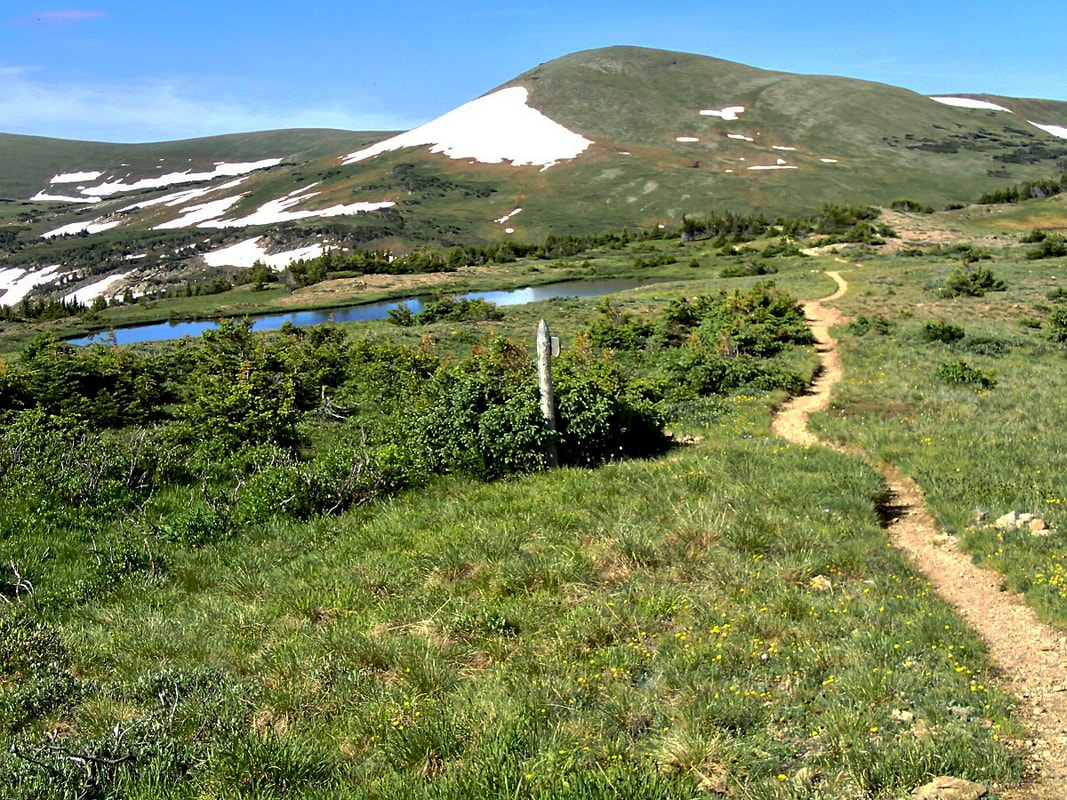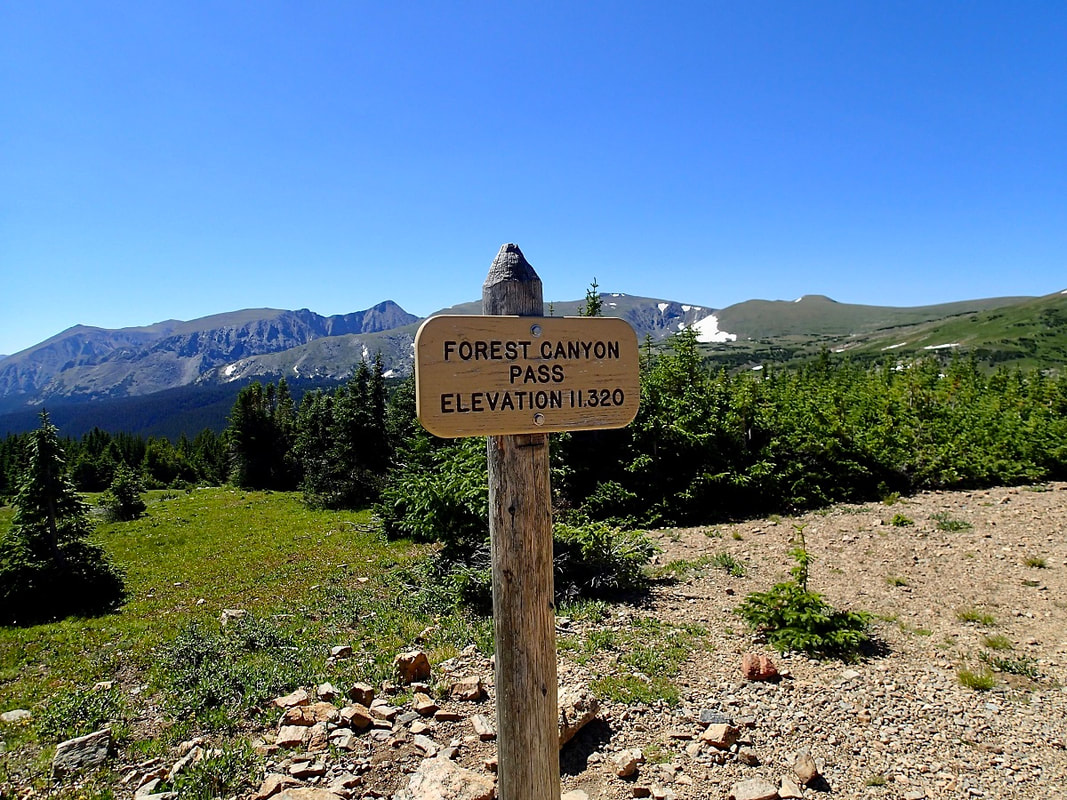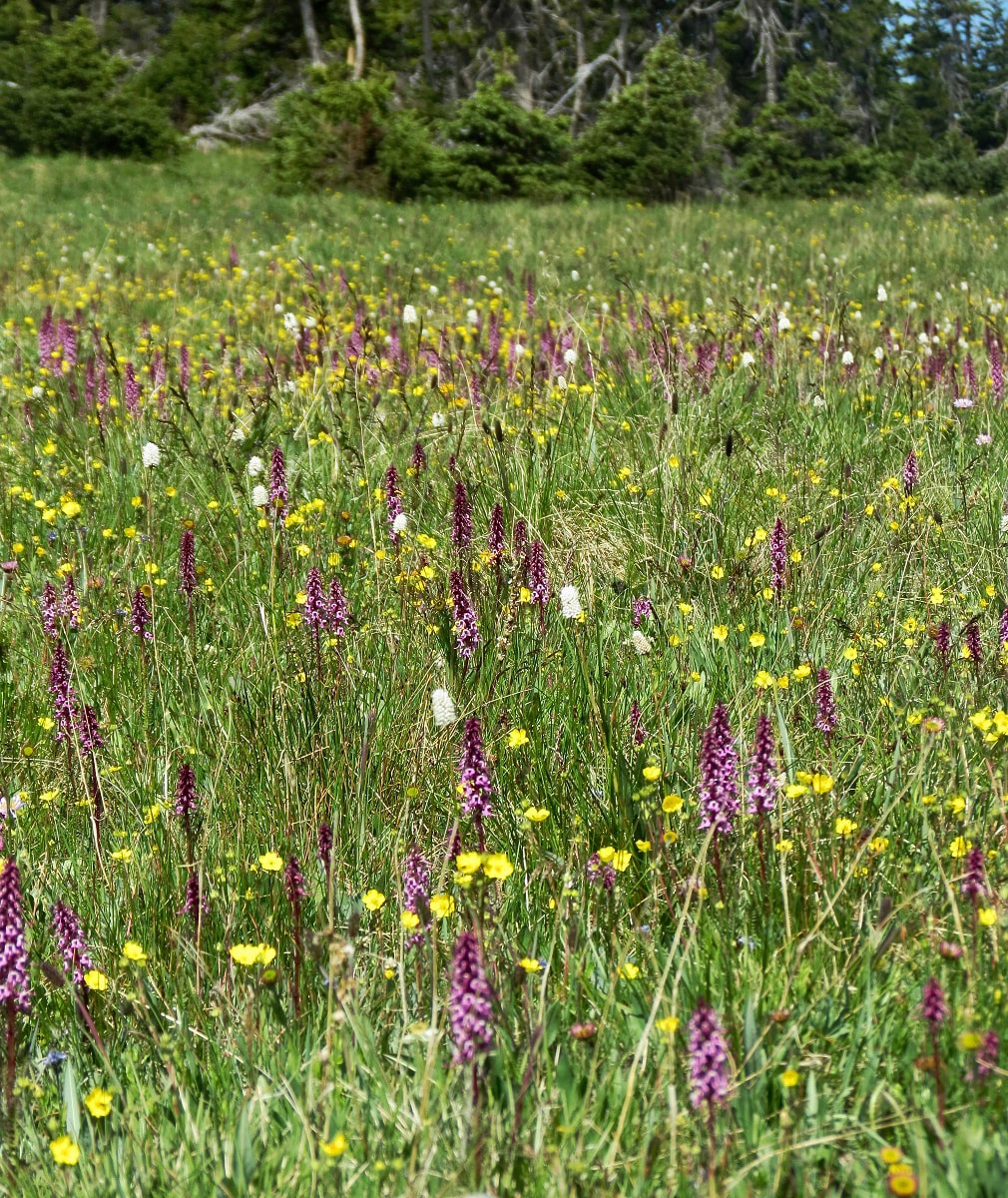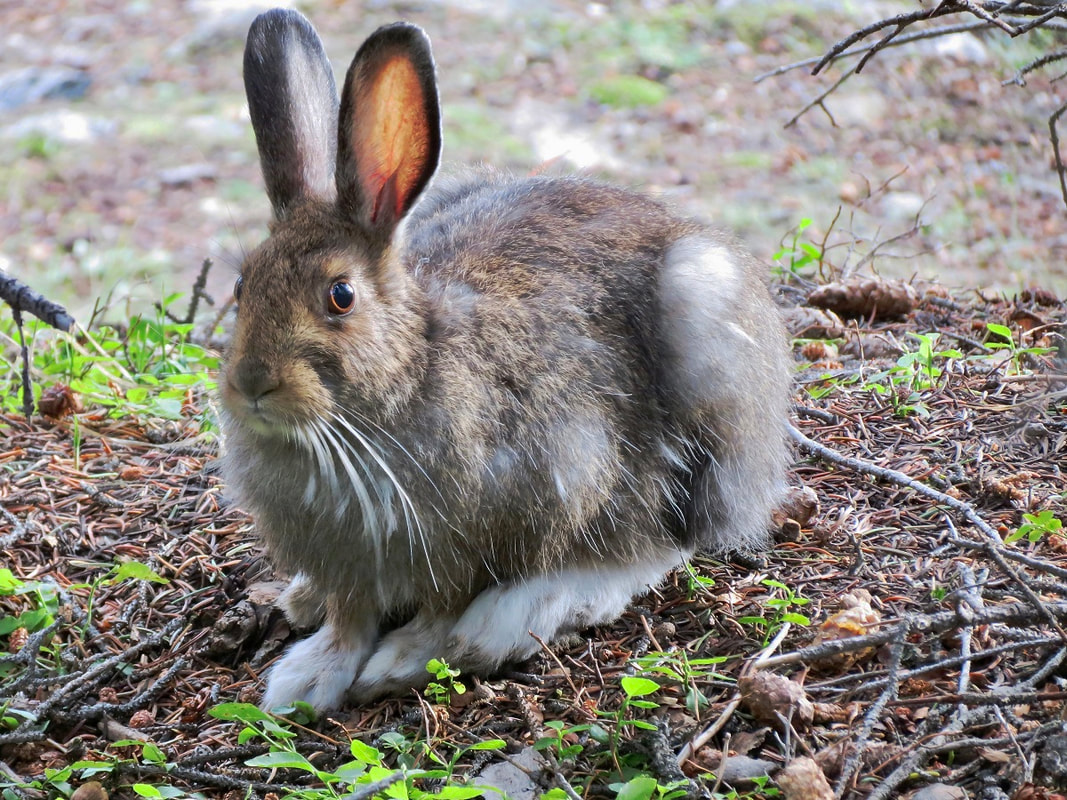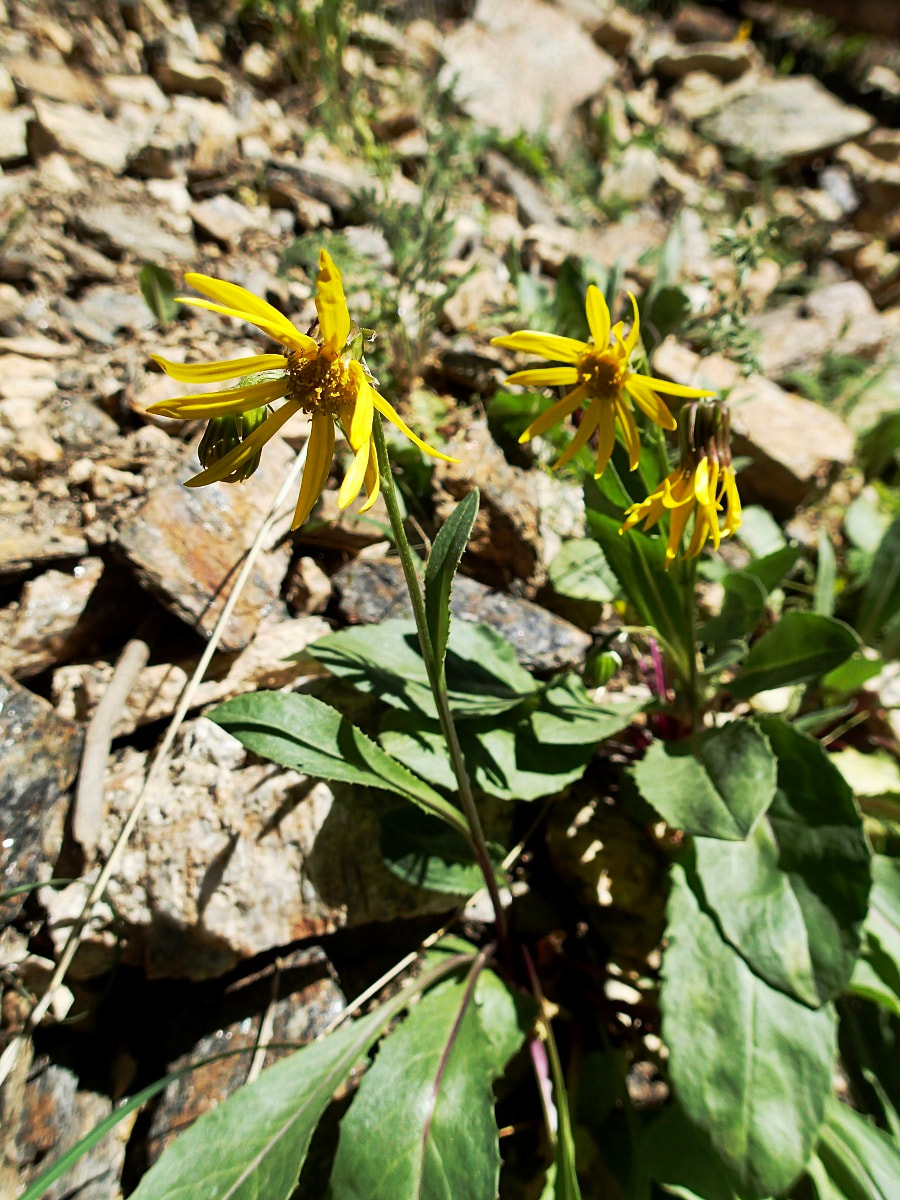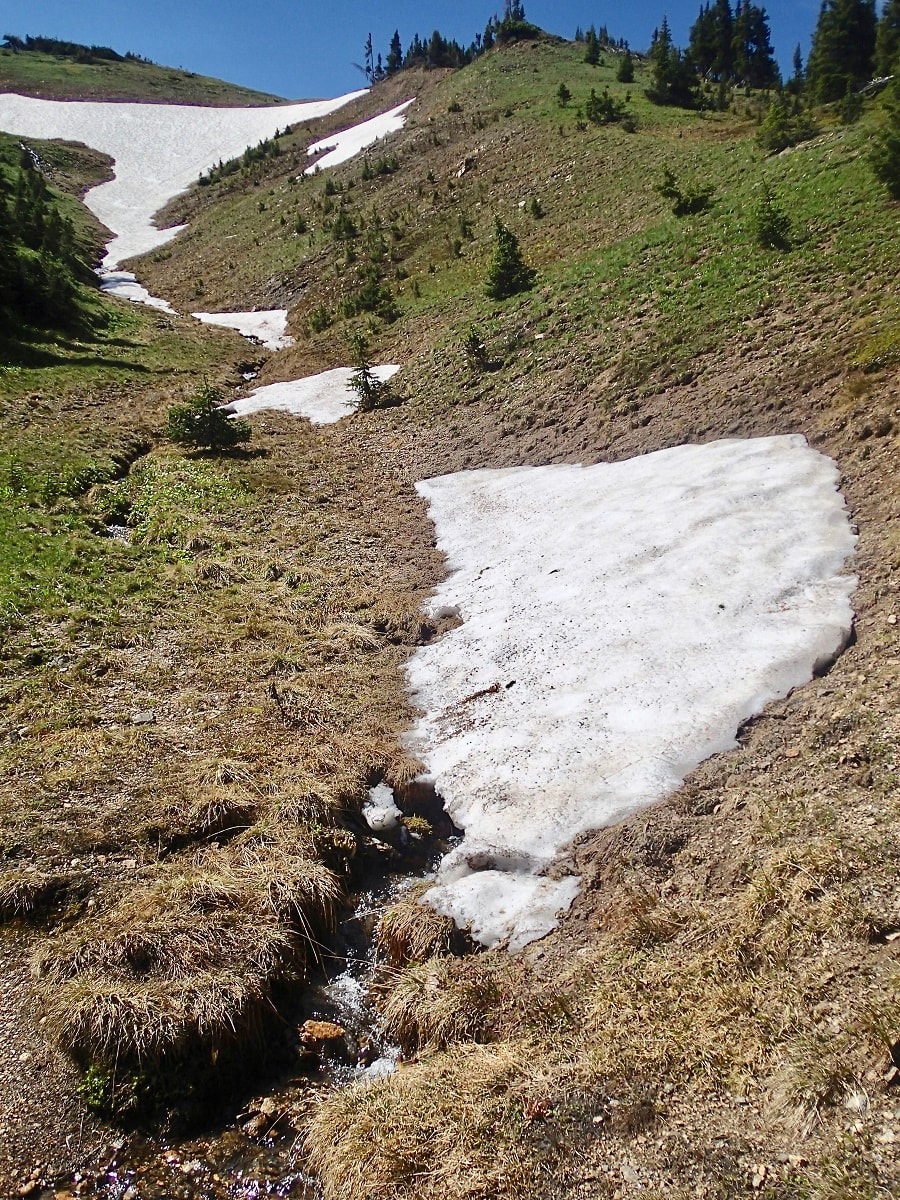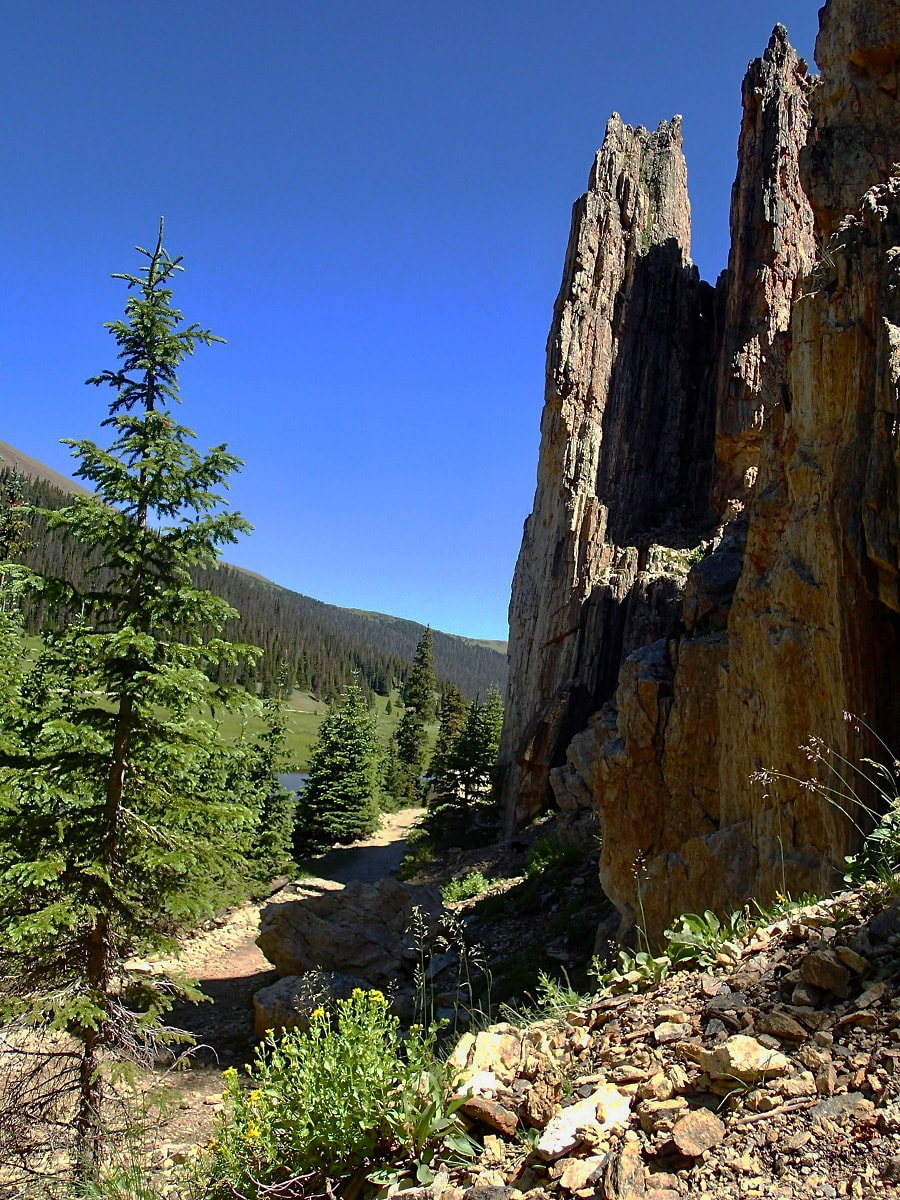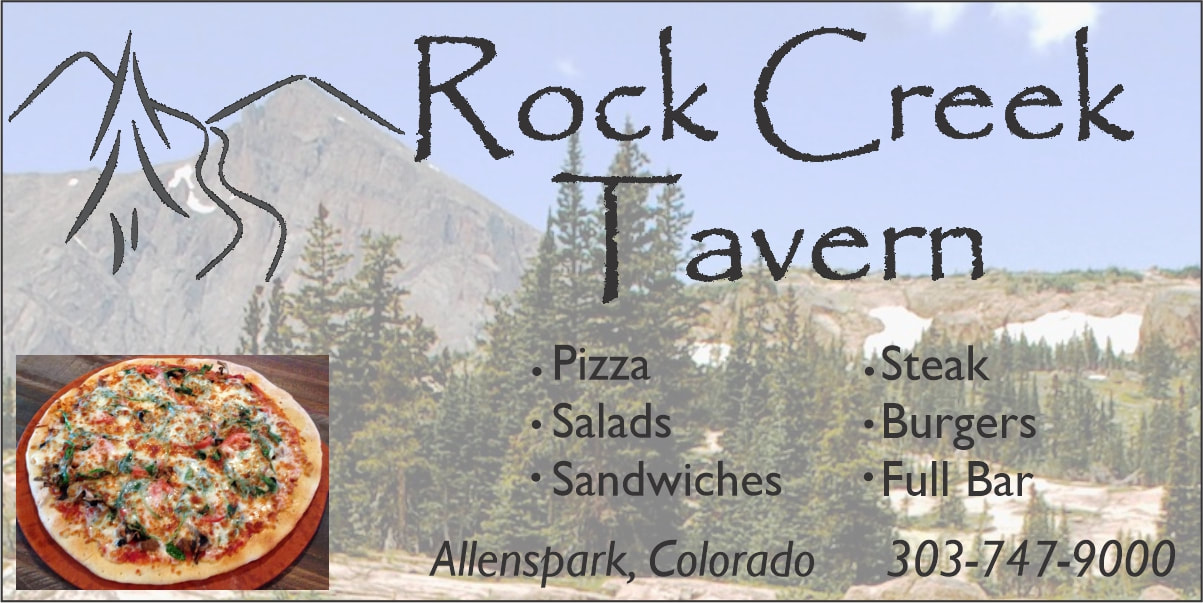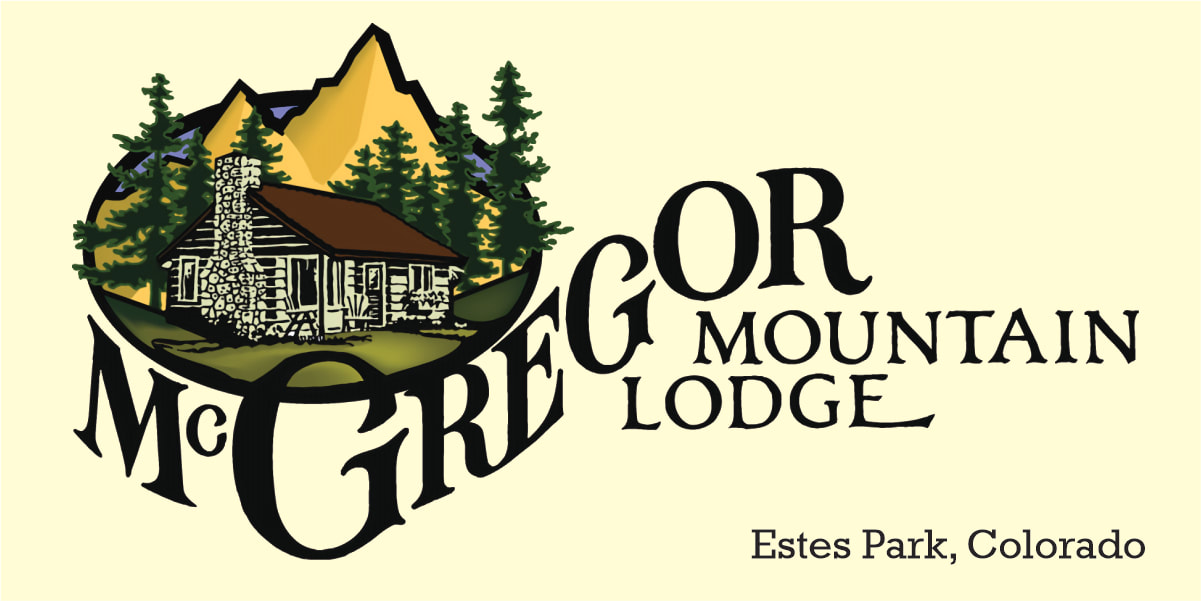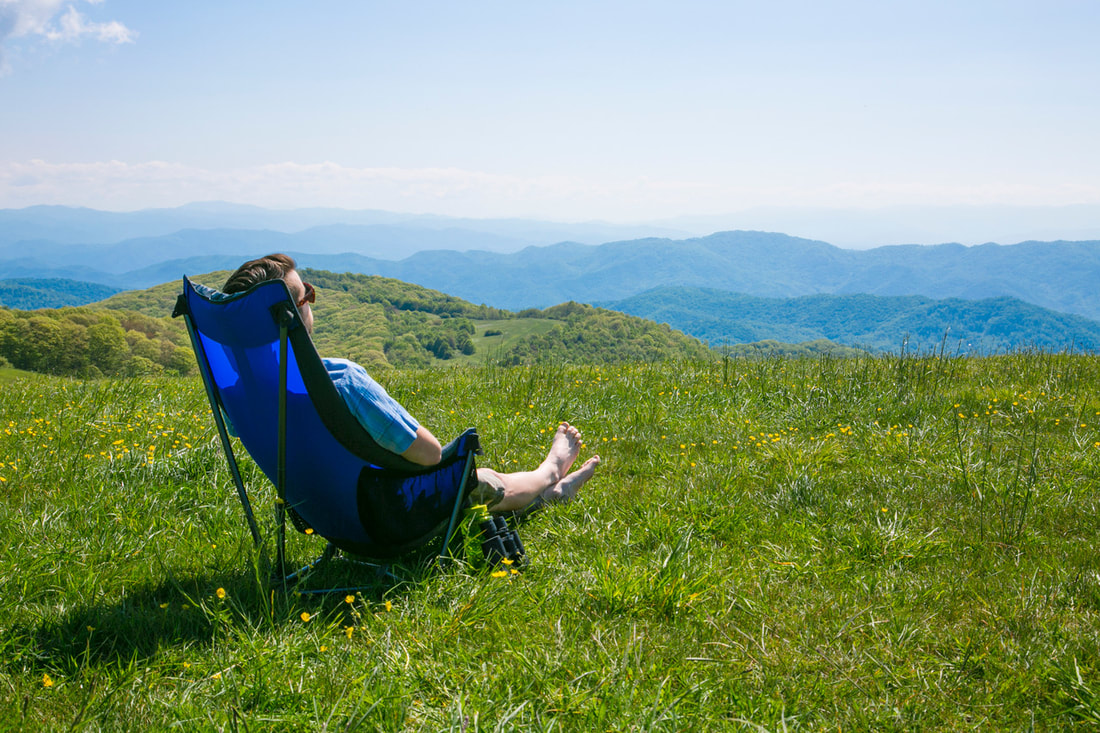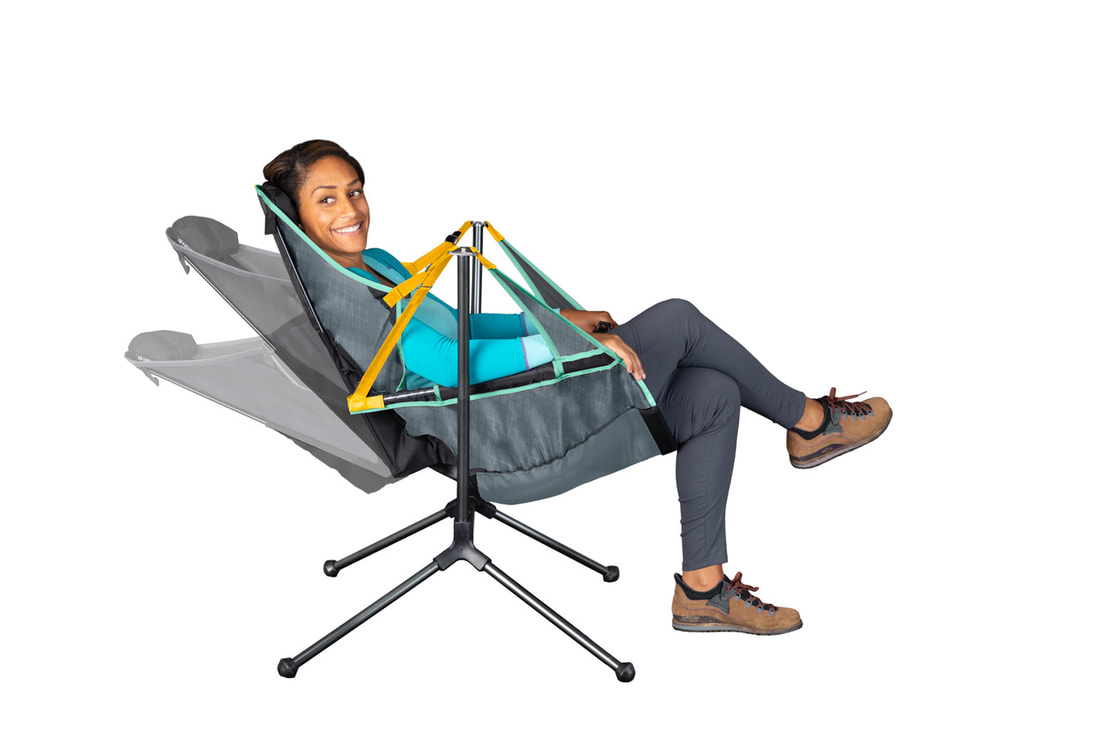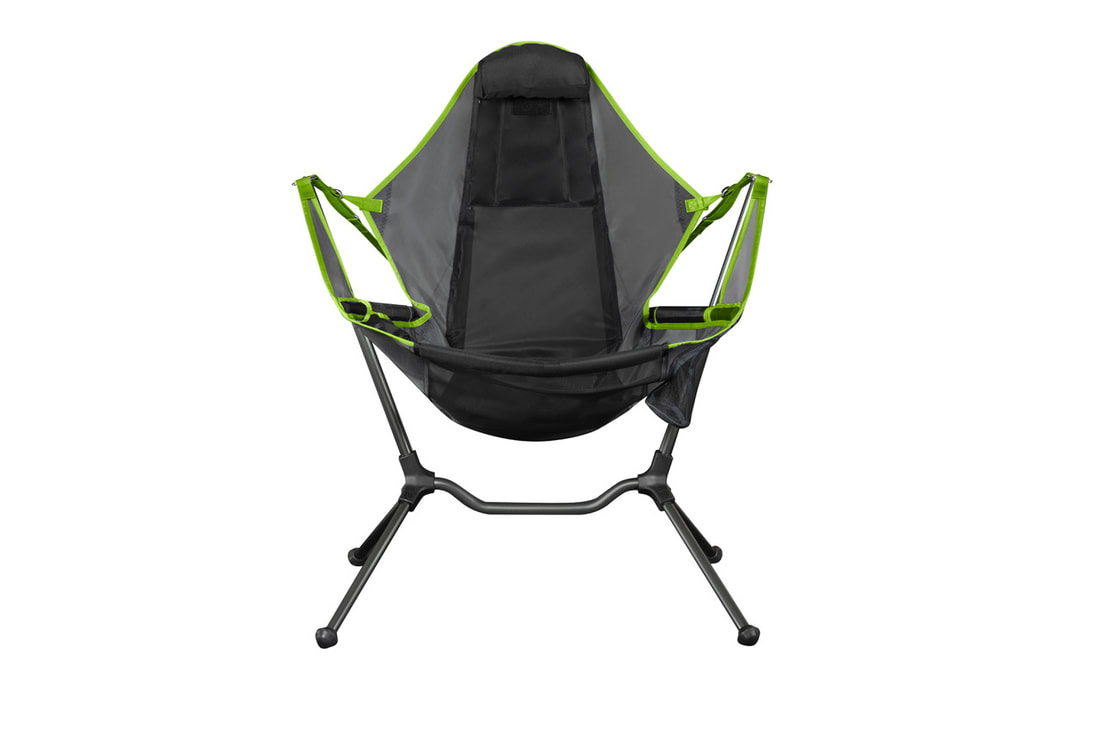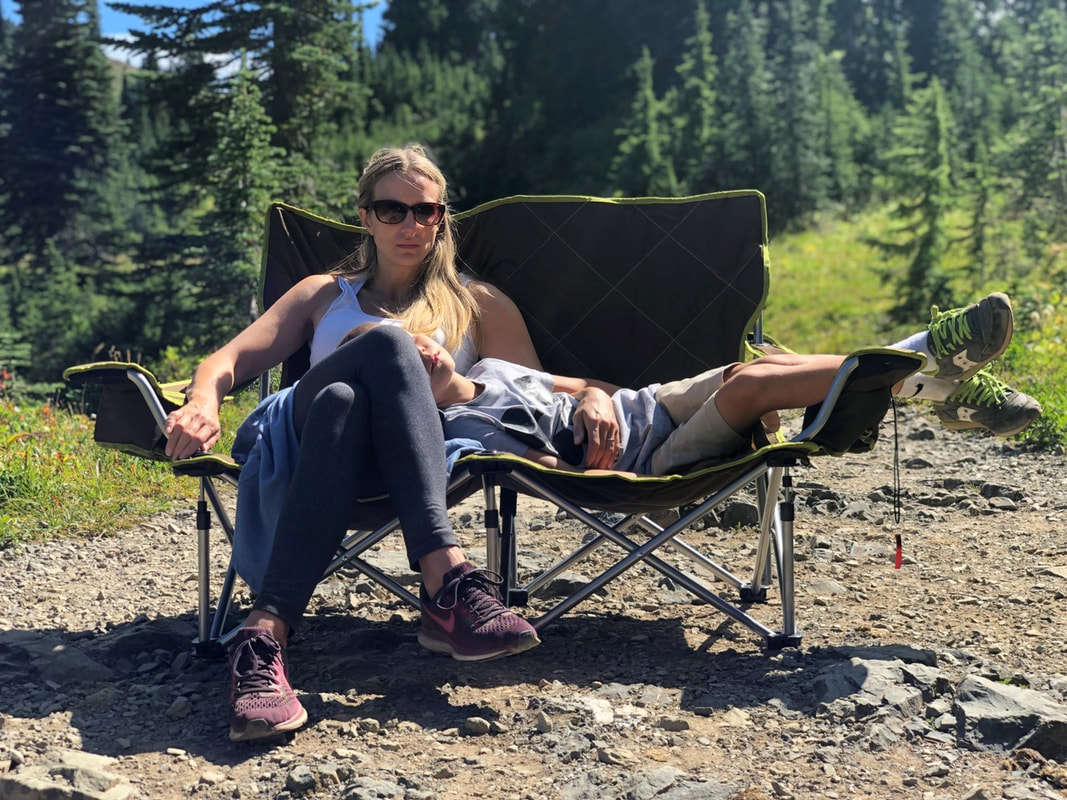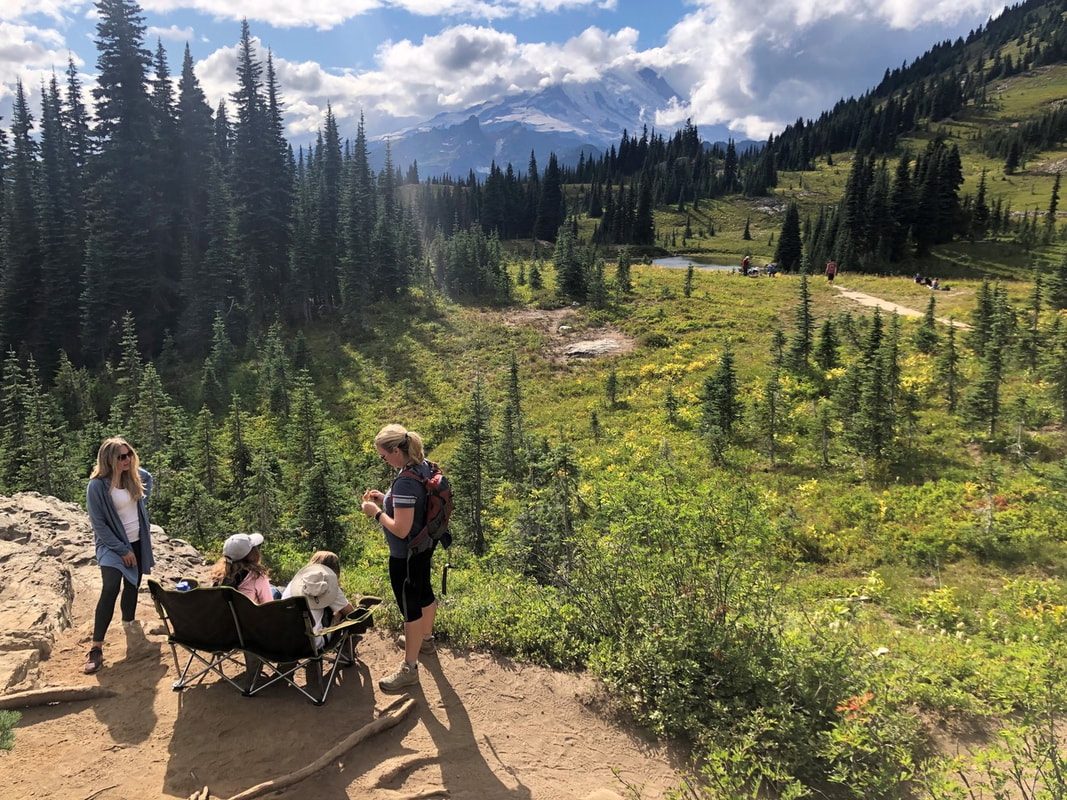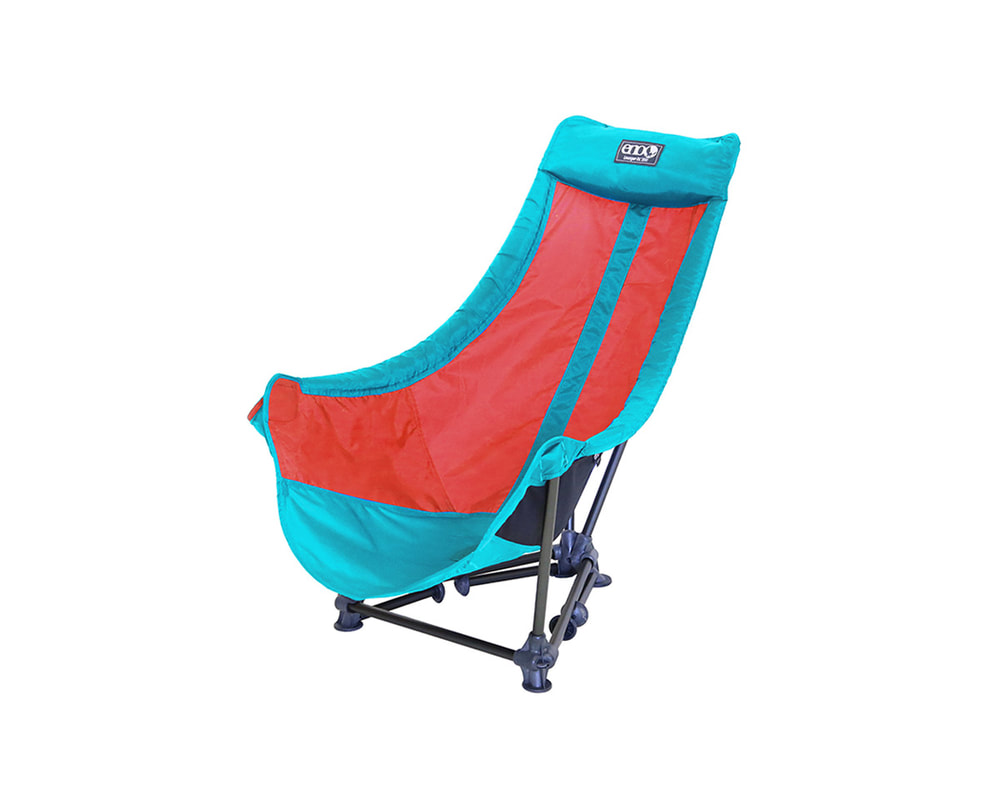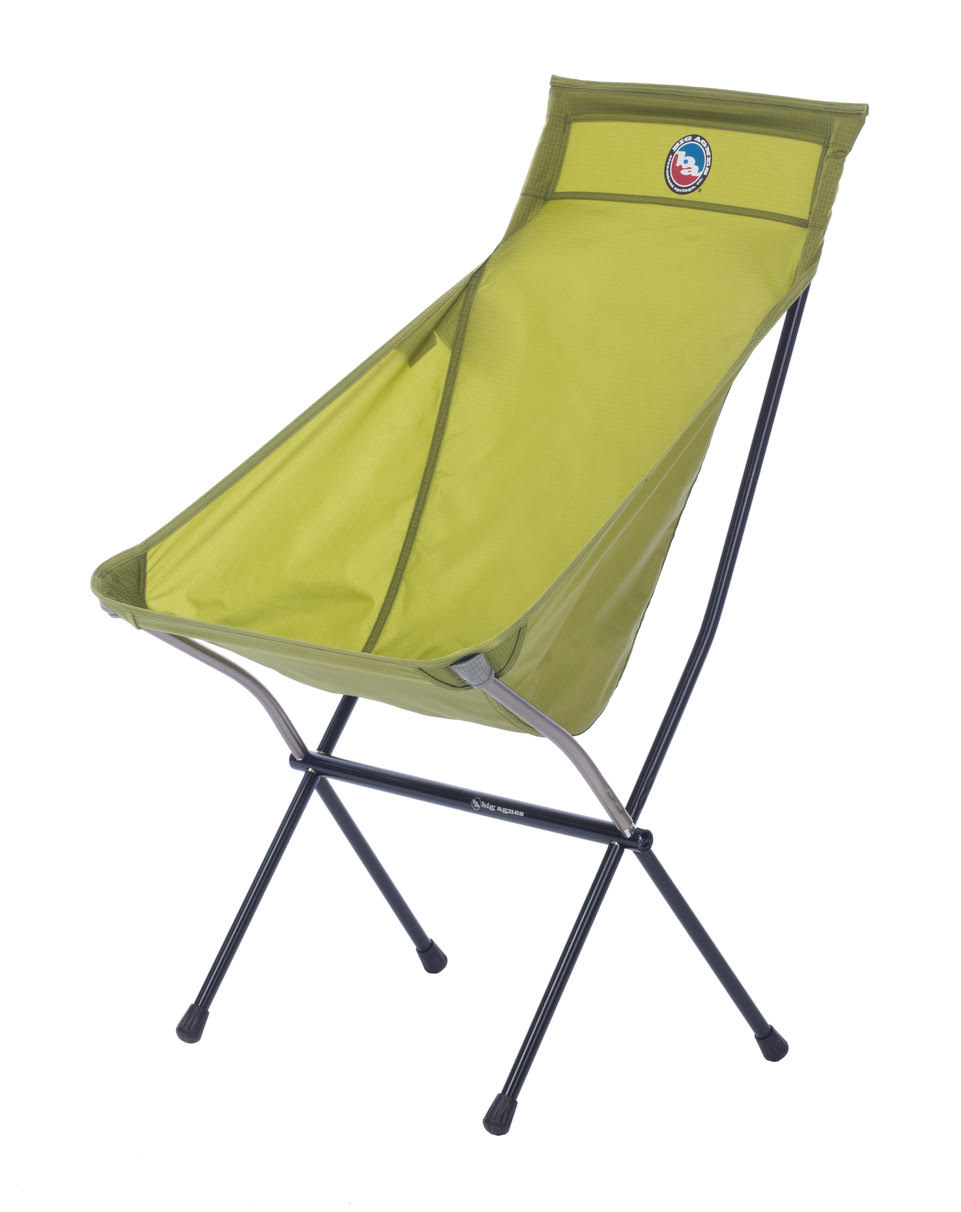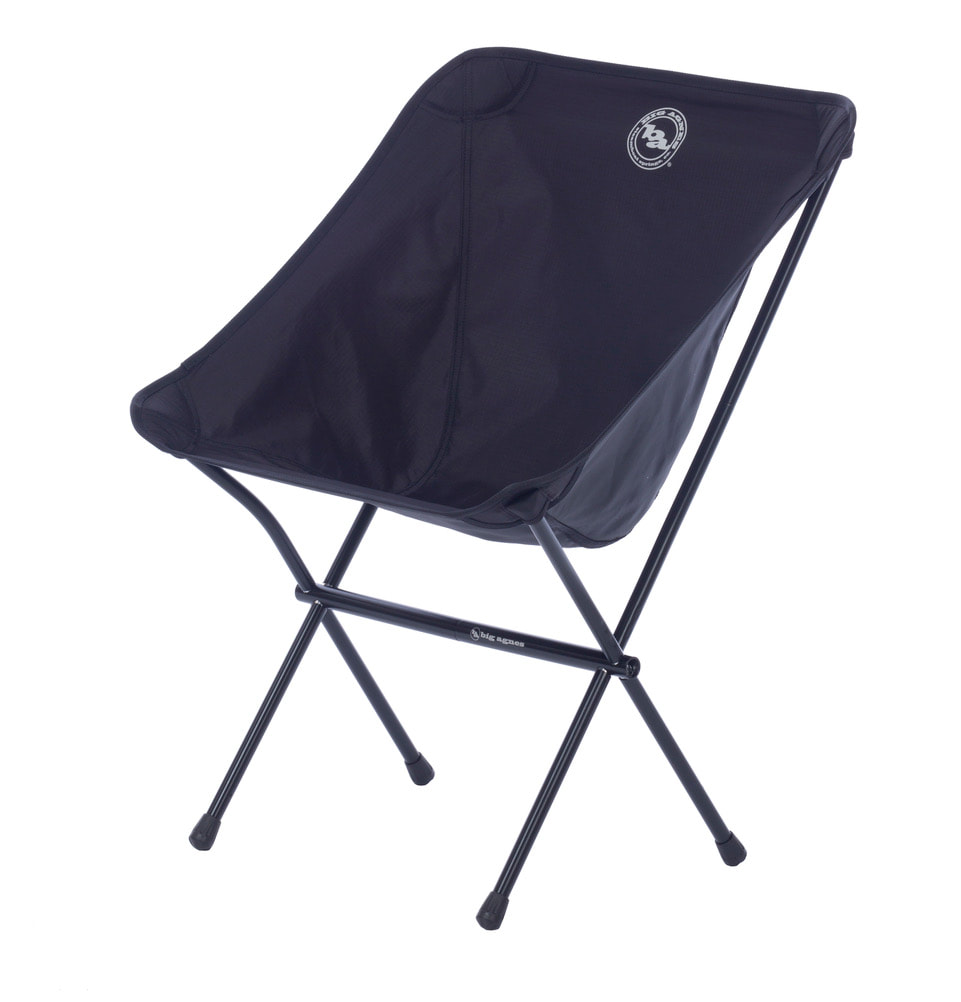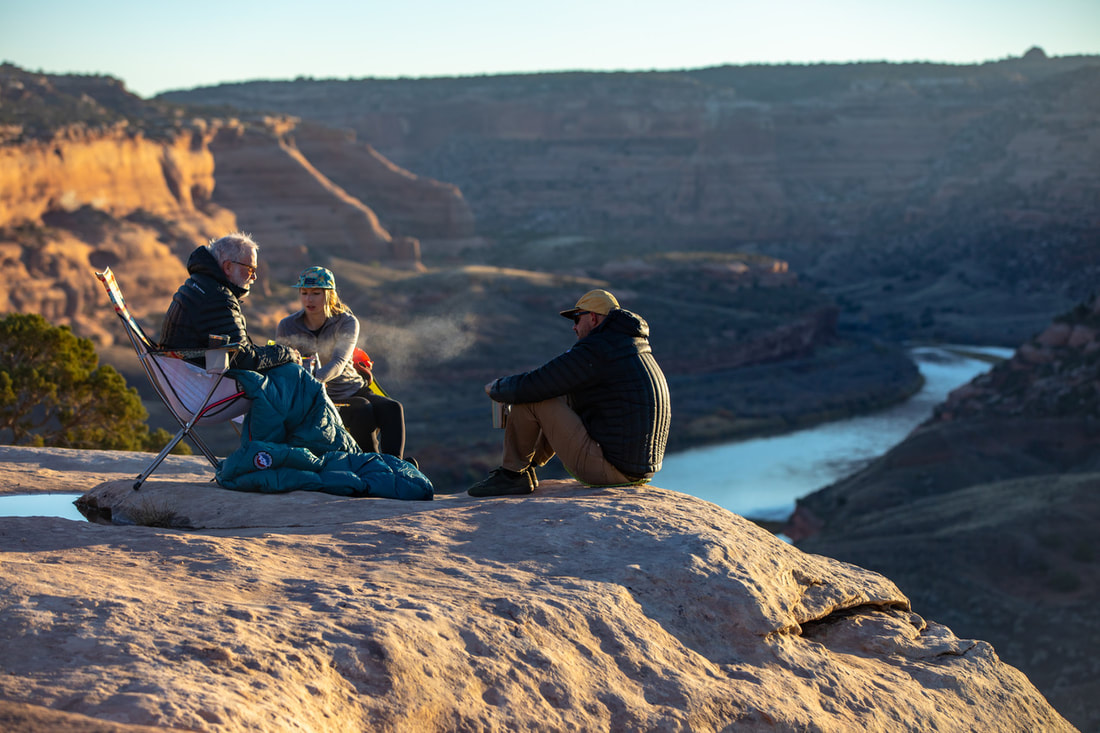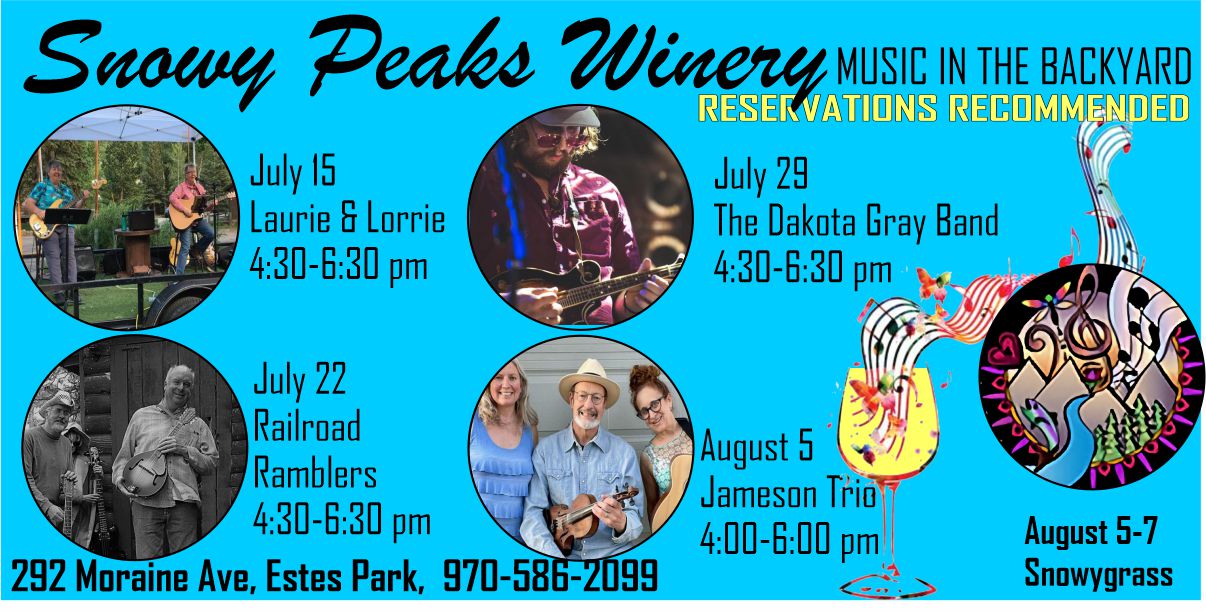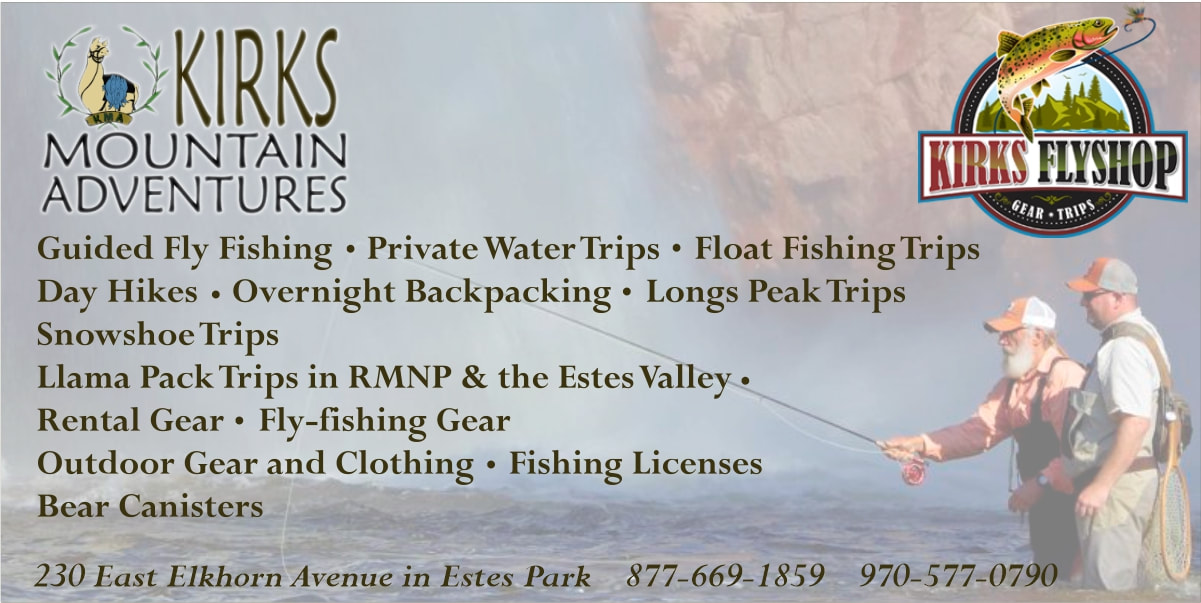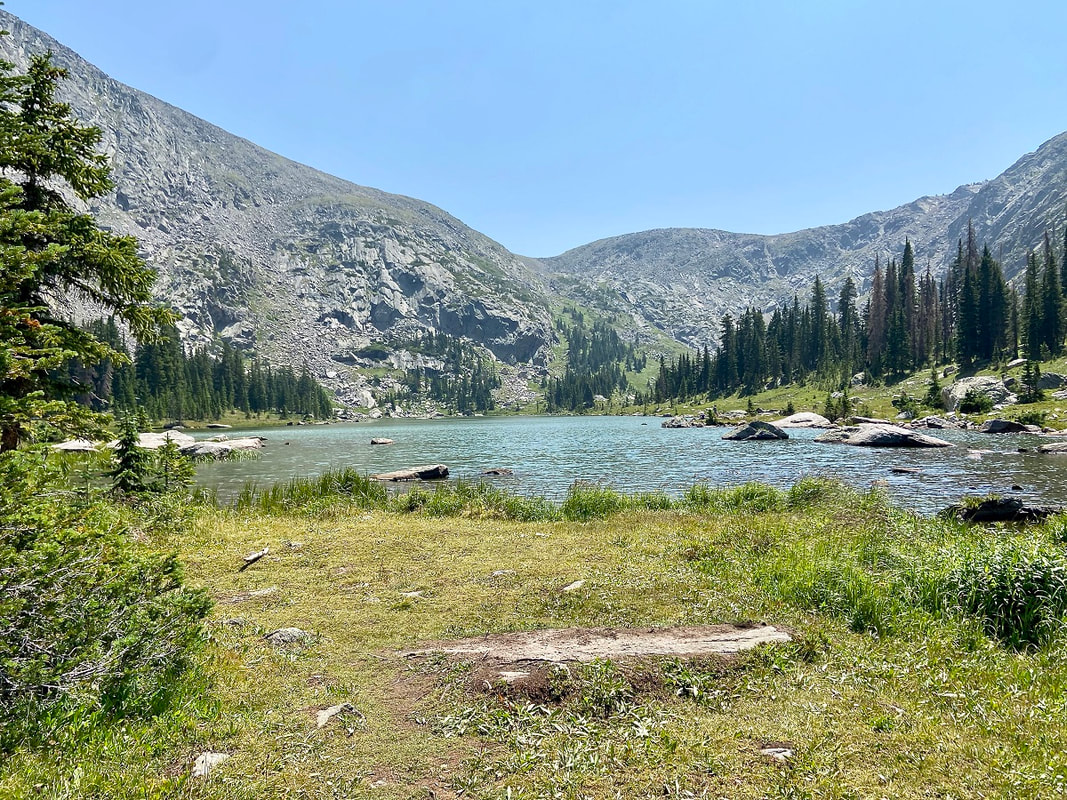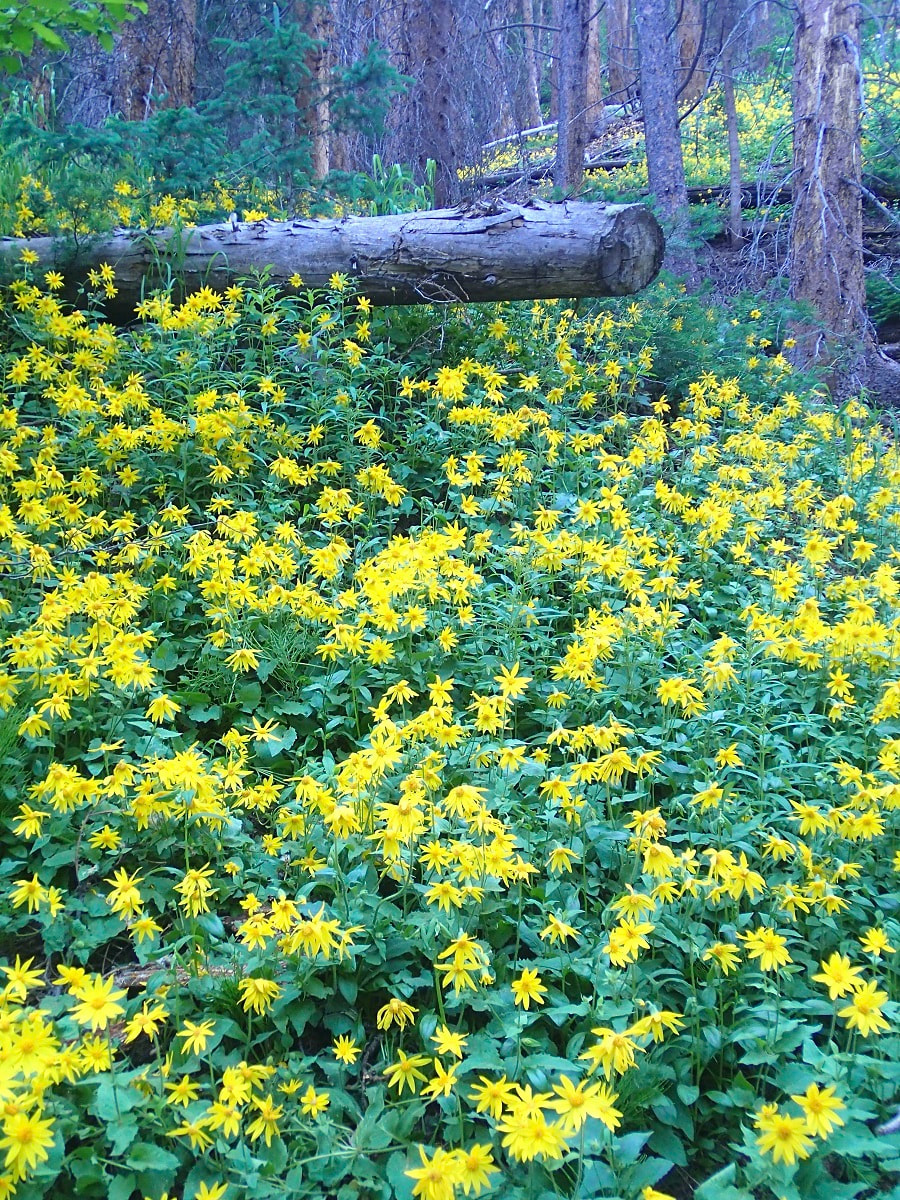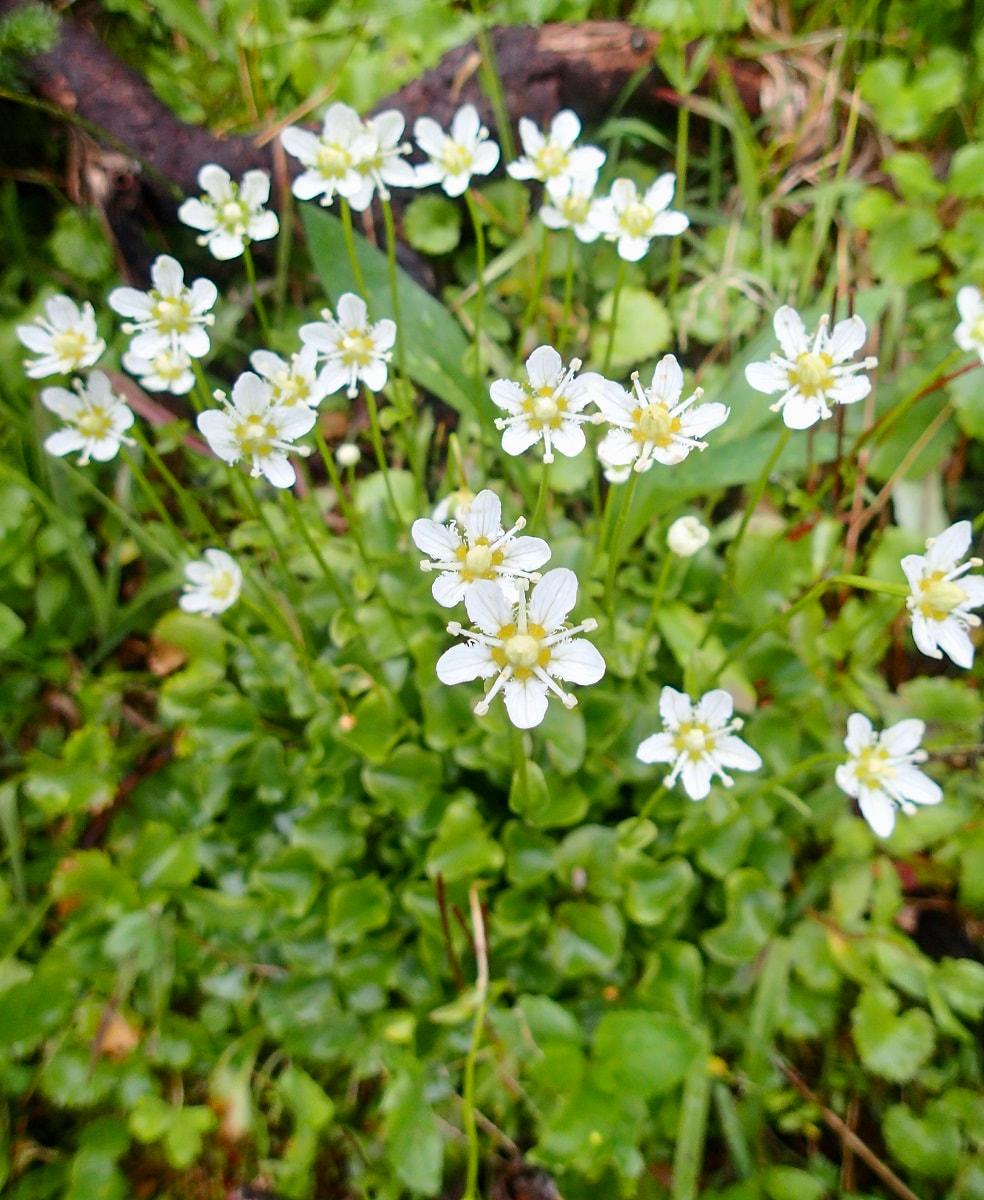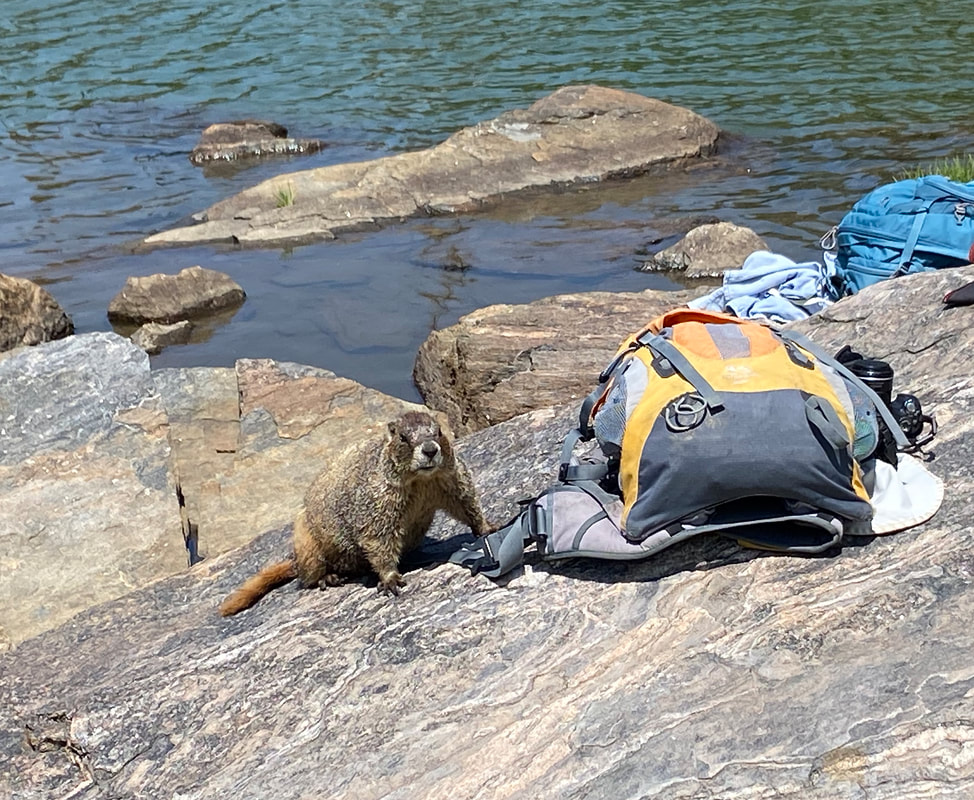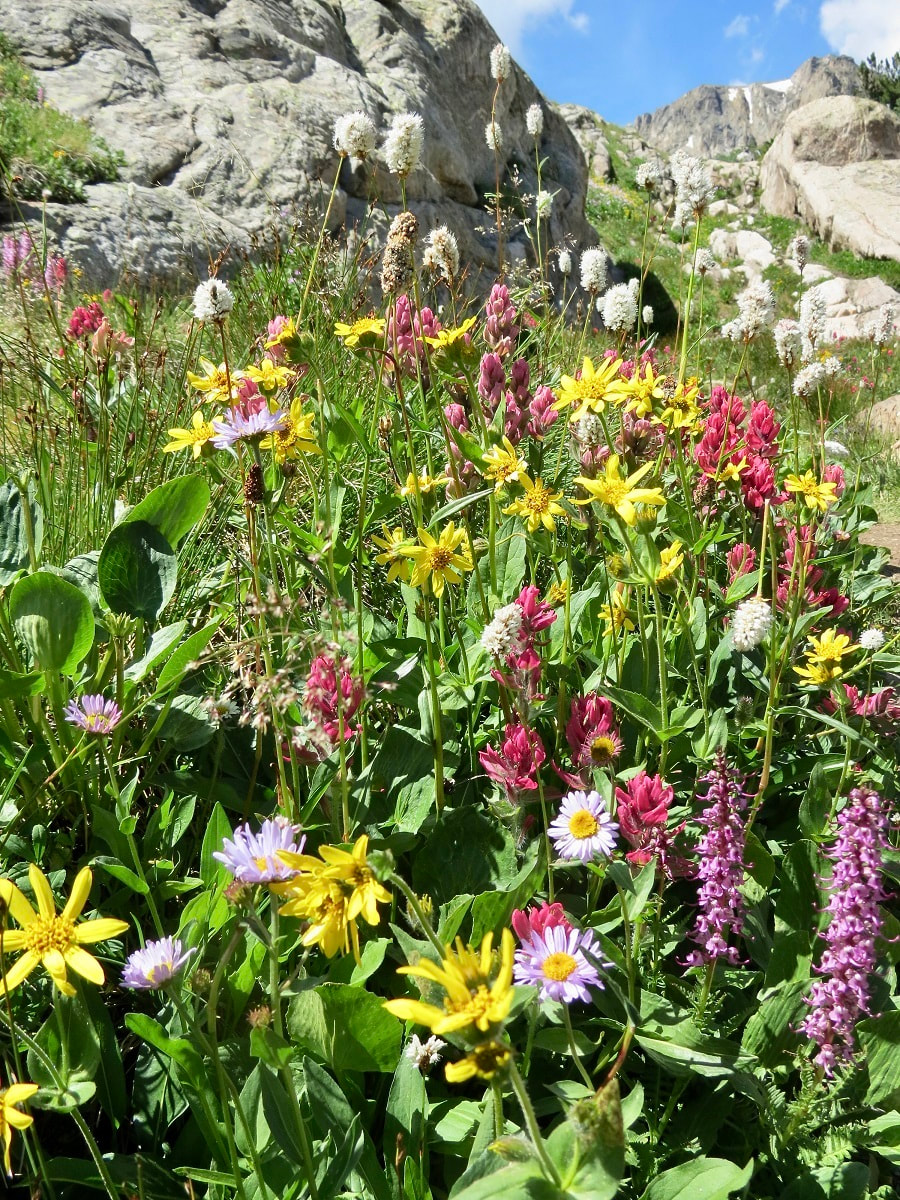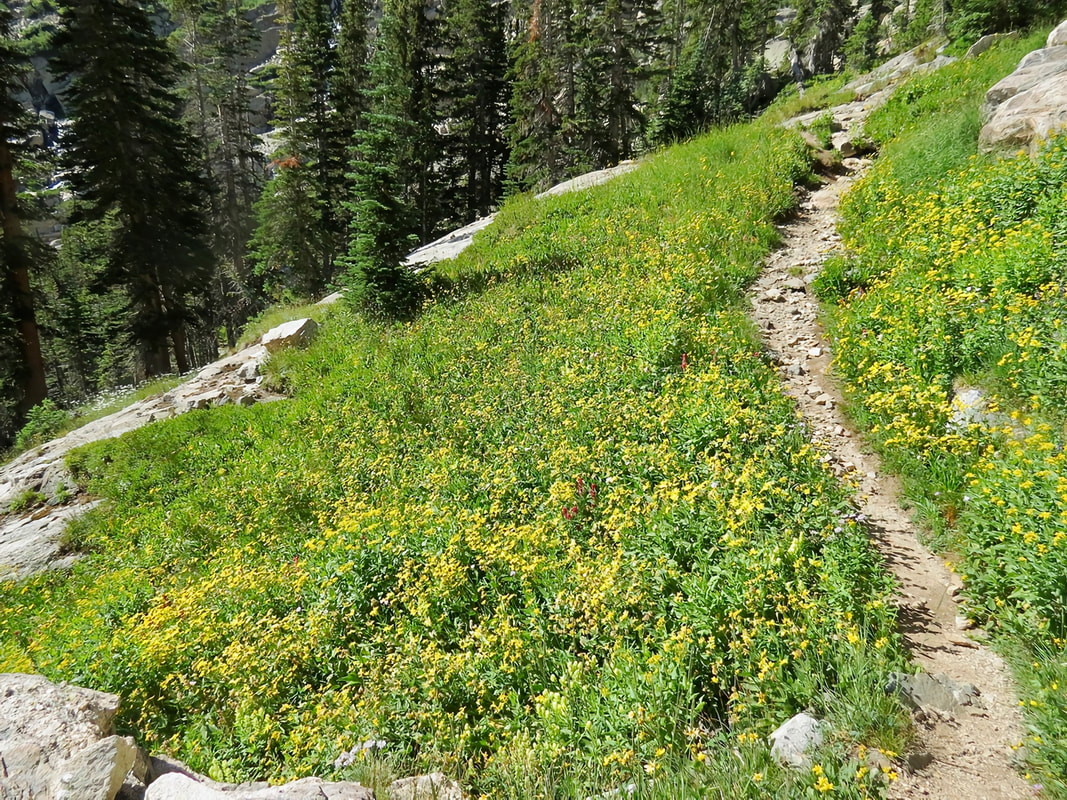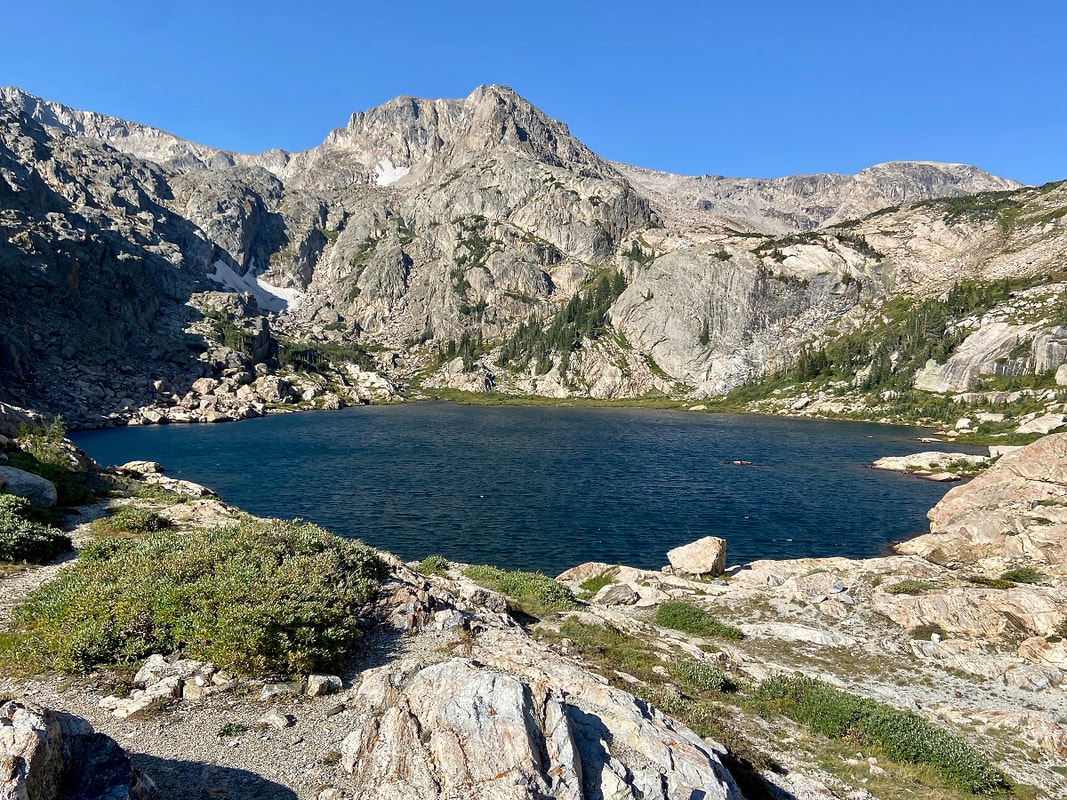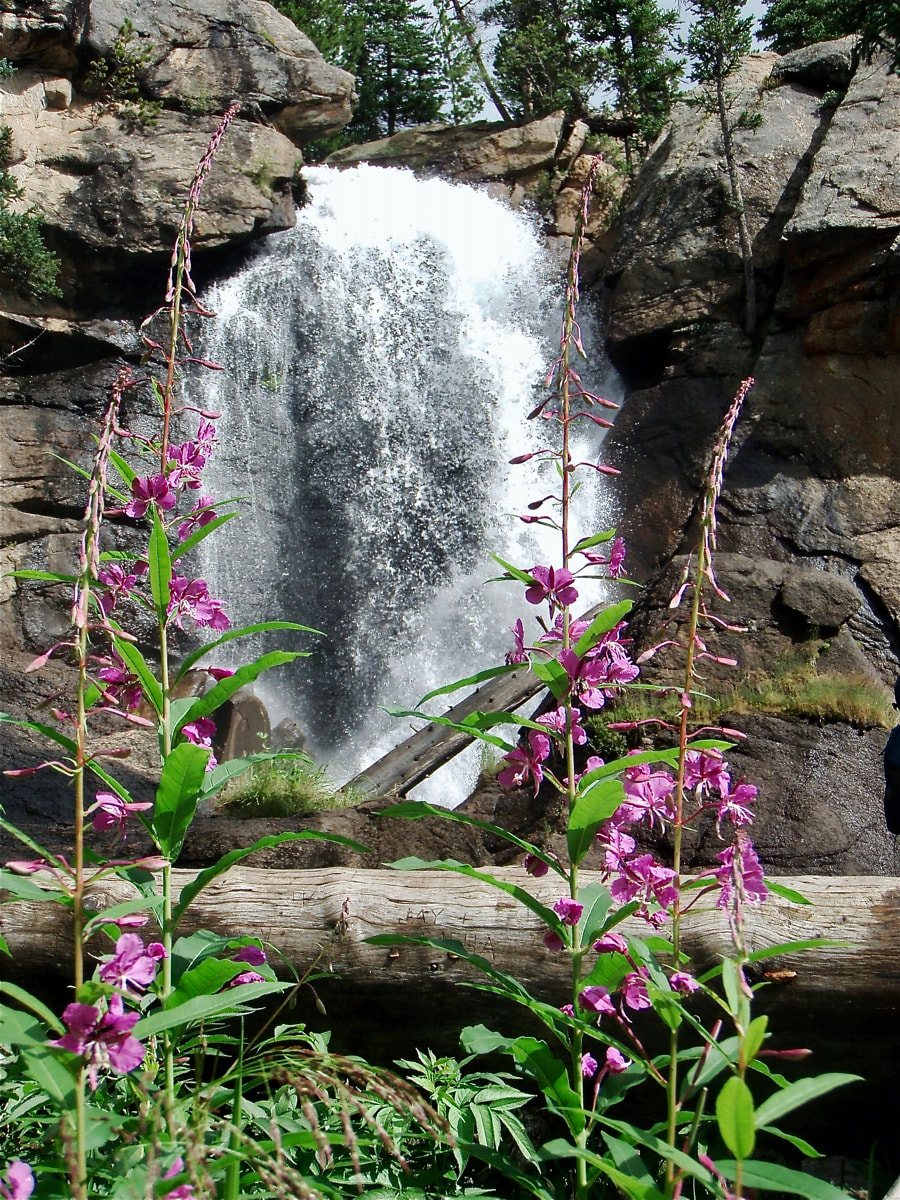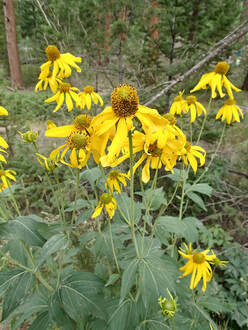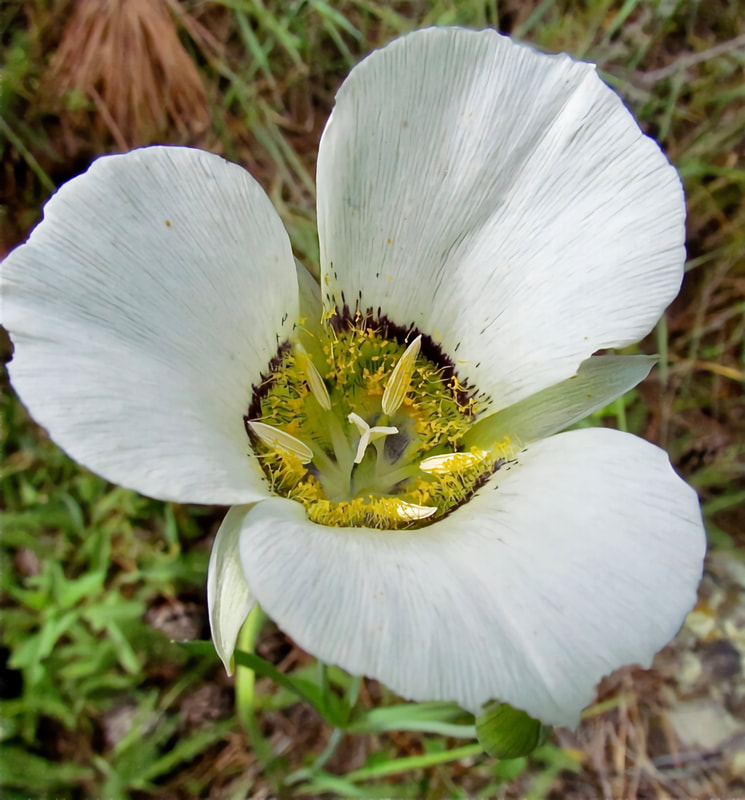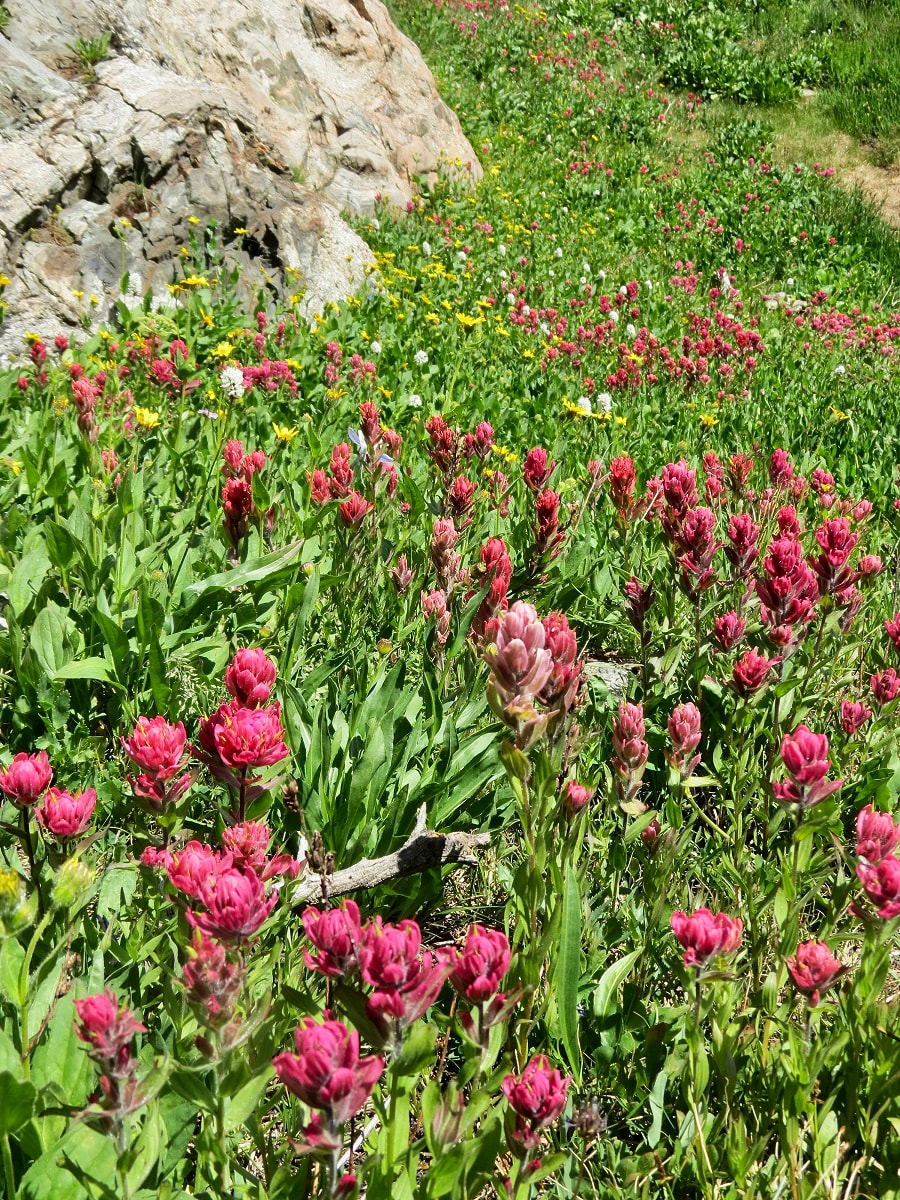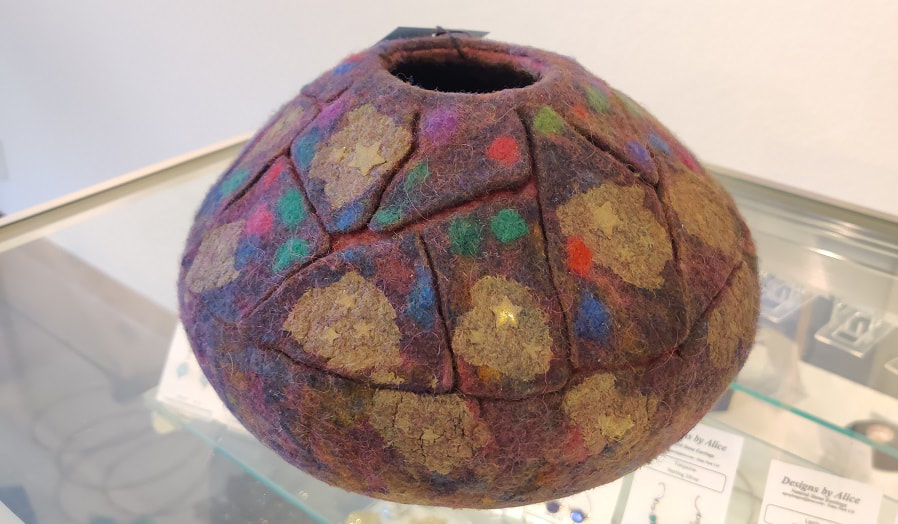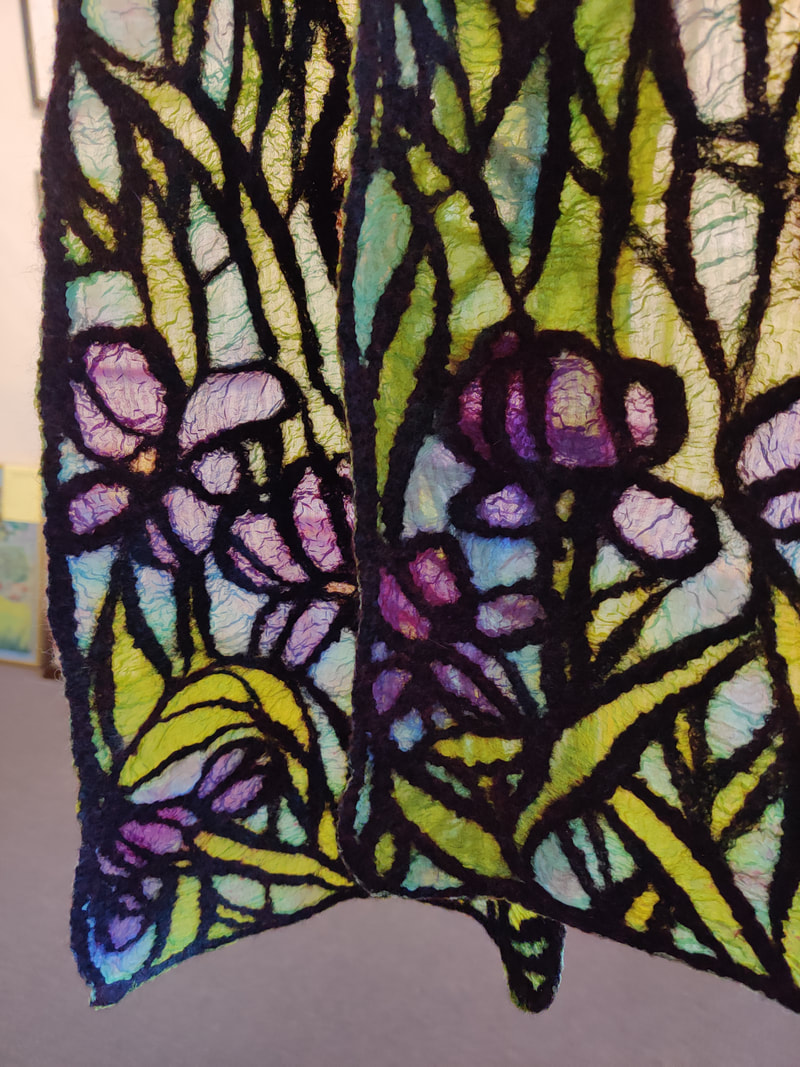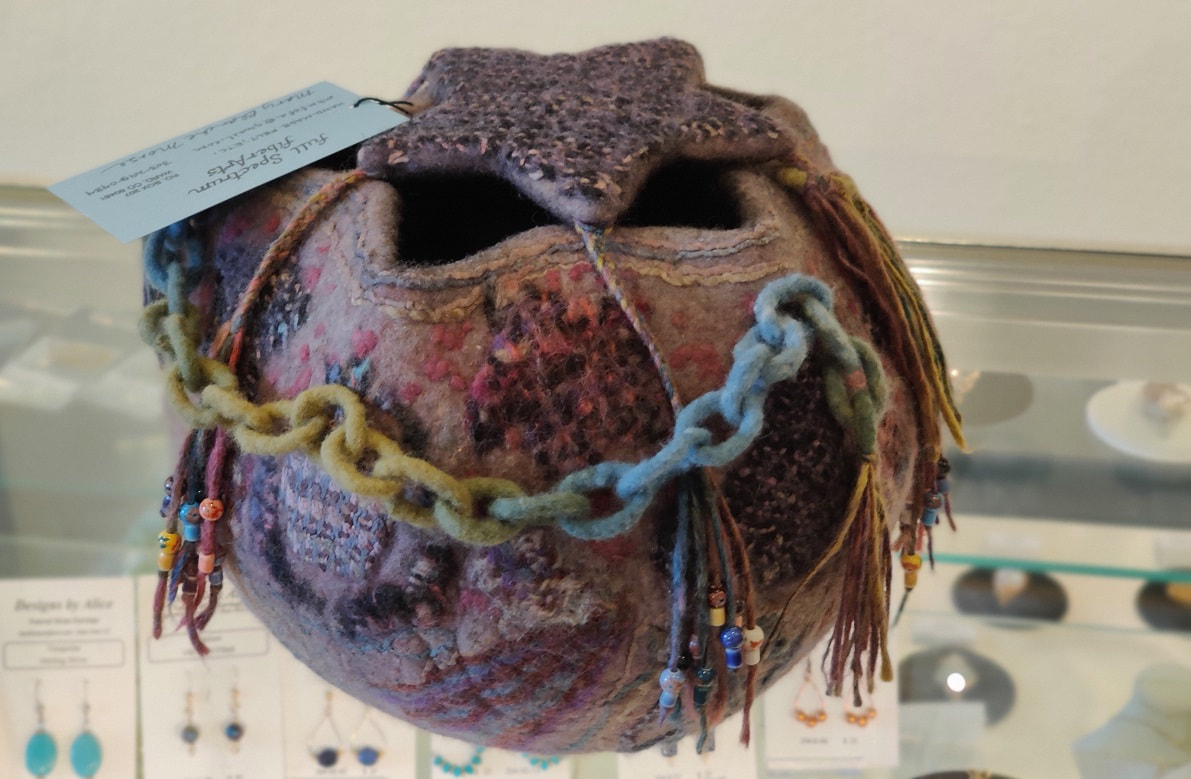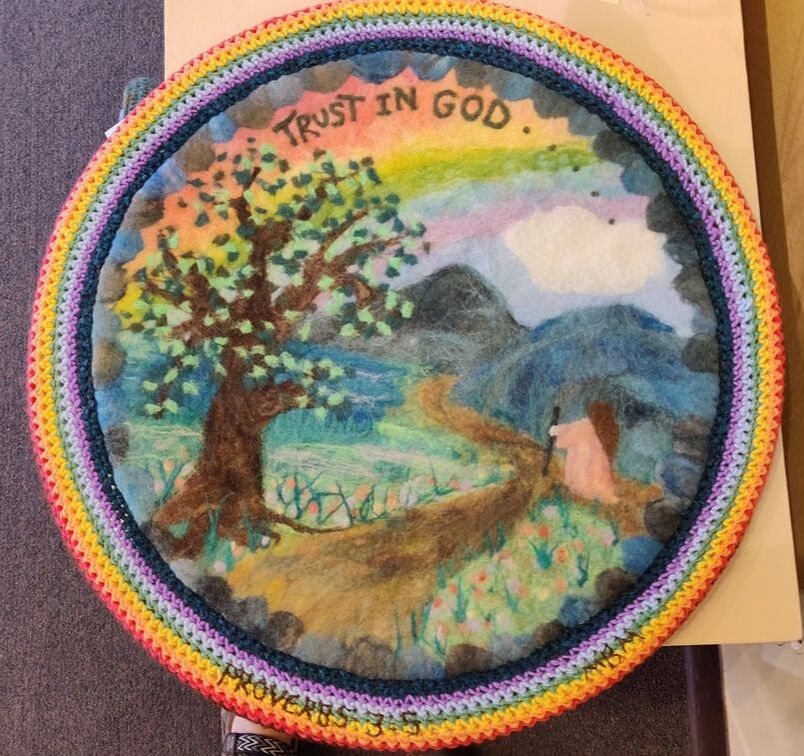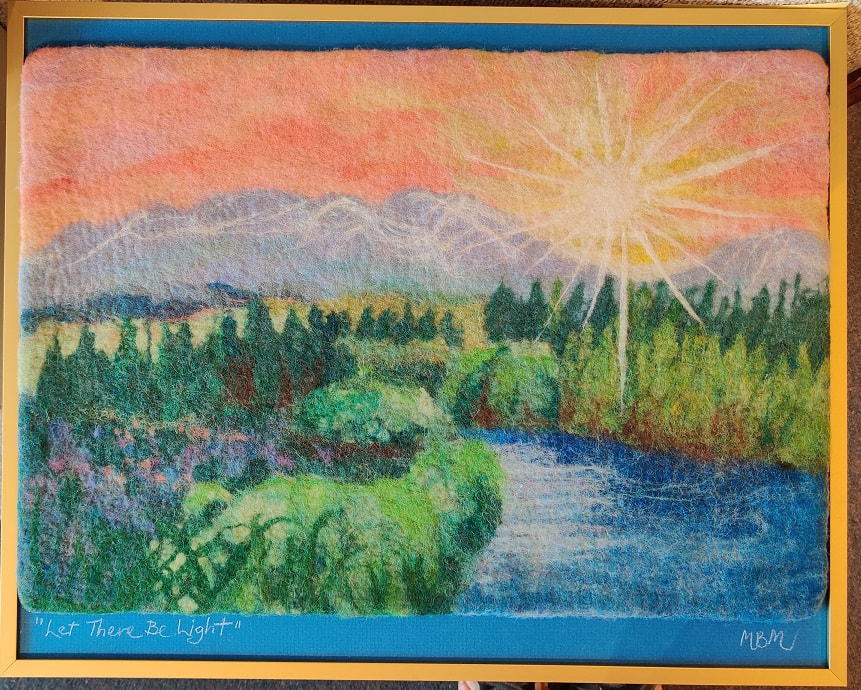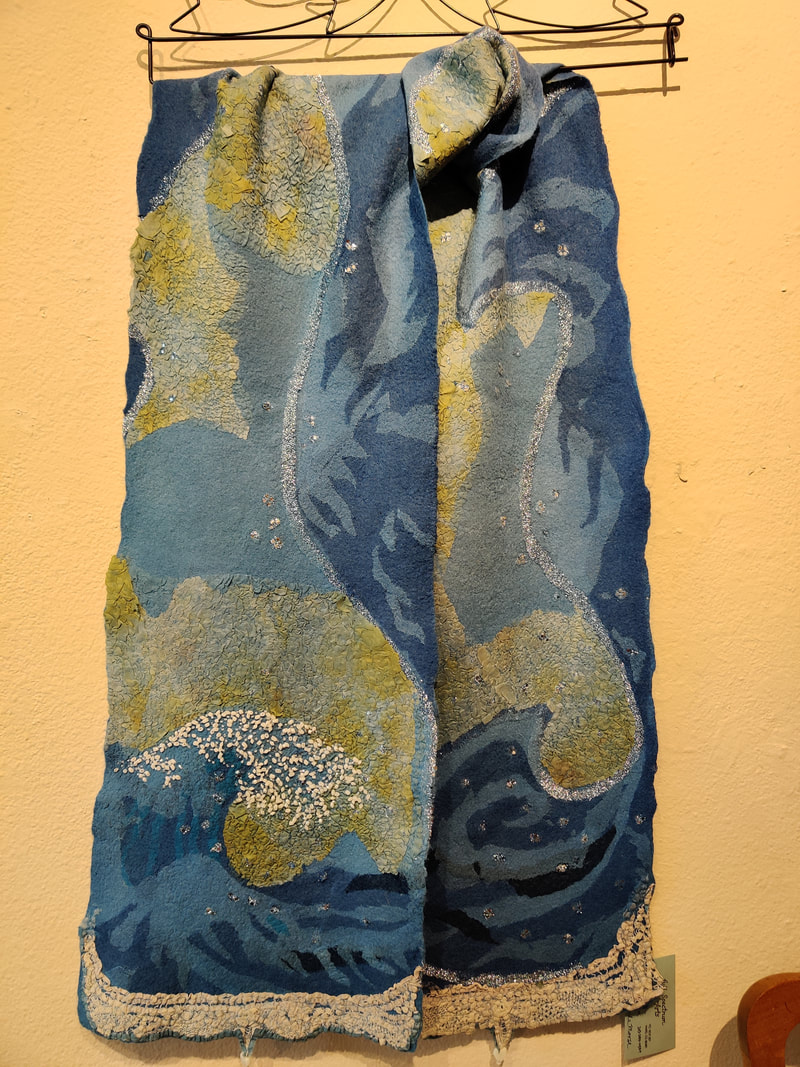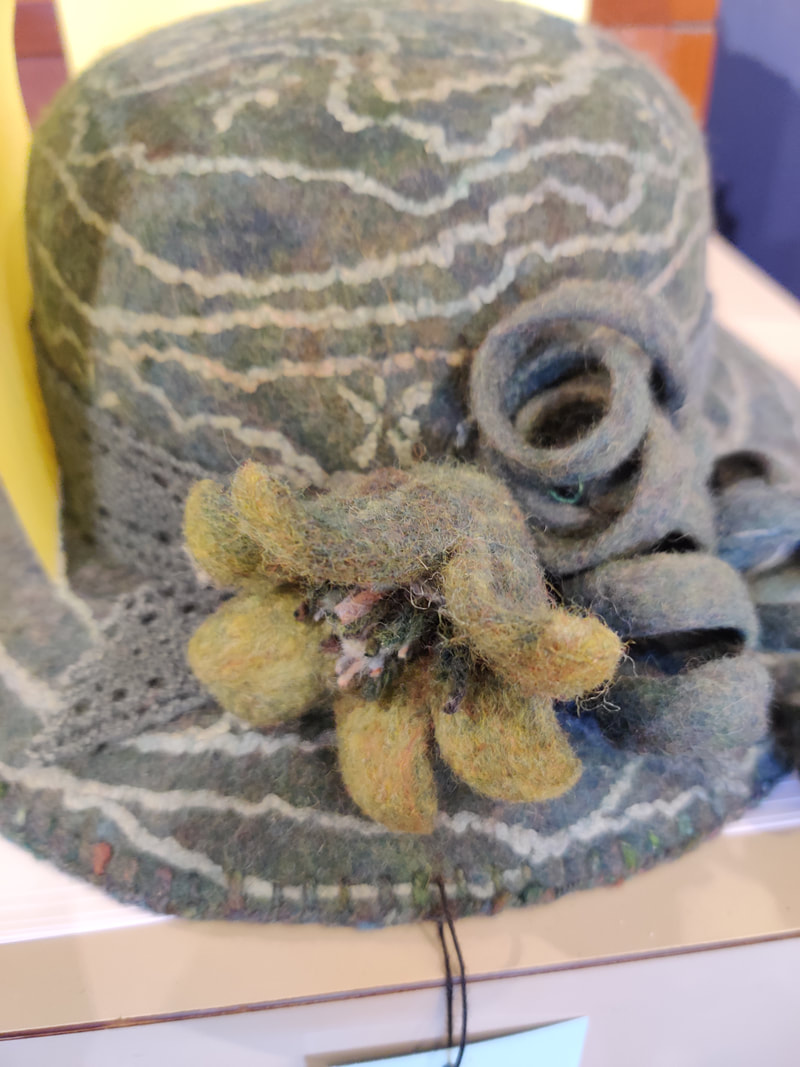|
Story, photos, and video by Murray Selleck, HIKE ROCKY magazine's equipment specialist Editor’s note: HIKE ROCKY receives no compensation from brands reviewed by Murray. Recently, I had the opportunity to carry the Deuter Trail 30 daypack to Lake of the Clouds on the westside of Rocky Mountain National Park. The pack carried great and I highly recommend the Trail 30 for your day hiking adventures. To qualify a few things about my day hiking style, I am not a light packer. I probably carry more than what I need but I'm not about to put Murphy's Law to the test. If I don't pack it I'll probably need it and if I pack it, odds are I won't use it. But, if I have it and use it I'm one happy hiker. That is one convoluted way of saying the weight in my pack can add up quickly. The Deuter Trail 30 carried everything I wanted extremely well. The number 30 refers to liters or the volume of the pack. A 30 liter day pack can hold a lot and may be a bit big for some hikers. Or it can even be a bit small for day hiking depending on who you are and what you like to take. Your pack size depends on where you're going, how long it will take, and if you're carrying additional items for members in your group. Kids anyone? One of my main considerations regarding pack size is how well it supports and carries the weight? For instance, your hiking partner may pack 30 liters of feathers and you carry 30 liters of rock. That is a huge difference in weight. Regardless of what you are carrying, how a pack's harness system handles the weight is just as important as the volume of the pack. For our hike to Lake of the Clouds the Trail 30 was perfect. It offered the volume to load what I wanted to take and a harness system that allowed me to carry that weight comfortably. Favorite Features: Pack Access: One of my most favorite features of the Trail 30 is how you access the inside of the pack. At first glance the Trail 30 is a traditional top loader. But take asecond look and you'll find a zippered front panel access, as well. A clause in Murphy's Law says whatever you want out of your pack it will be at the bottom. With lots of traditional top loaders that means emptying your pack trailside looking for that one elusive item. With Deuter's front panel access you can easily see and find exactly what you are looking for without emptying your entire pack! Brilliant! Benefit: When we had reached Lake of the Clouds strong gusty winds greeted us. The wind was rippin'! It was time to find and put on my windbreaker. With the panel access into the main body of the pack I found my windbreaker easily (at the bottom of the pack). Right after our lunch break a rain squall came over the ridge. Again I was able to grab my rain jacket easily from the pack as we started our way back down. Aircontact Harness System: Another great feature is Deuter's Aircontact harness system. On either side of the back panel are two vertical ventilated pads that create a channel your spine centers between. You feel immediate comfort. The hip belt creates a comfy wrap around your hips. A key here is how the hip belt is attached to the back panel. The two attachment points are pretty close together and that is what helps create this snug, enveloping, wrapping feel around your hips. The hip belt itself is nice and wide which creates a bunch of nice surface area that creates comfort. And with its increased surface area that also helps carry the load of what you are packing. Pull down the perfectly padded shoulder straps (not overly padded and not too thin either), pull in the load stabilizers forward off the top of the straps and suddenly you have a pack that is snug to your body, supporting the weight of what you have packed inside your pack, allowing for all day hiking comfort. Benefit: Besides supporting the weight inside the pack this harness system snugs the pack comfortably against your body. As we worked our way up through the boulder field on the final approach to Lake of the Clouds the pack moved with me smartly with each step. I was able to maintain a steady pace both up and down the boulder field, keeping my balance, maintaining a steady pace, and not really being aware of the pack on my back at all. Pockets and Packing Options: There are many ways to pack a pack and the Deuter Trail 30 gives you plenty of options. The top lid offers two pockets. There is an inside sleeve that can accommodate a water reservoir or use it to divide out contents inside the pack. Outside there is a water bottle holder and another zippered pocket which can be used in any number of ways. I used the zippered outside pocket for a second water bottle, packed my primary water bottle in the other pocket, used the ice axe loop and lash strap for my tripod, and later in the hike attached my hiking poles to the other lash straps outside. A place for everything and everything in its place! Benefit: Not everyone takes the same things or likes to pack their packs the same way. Having lots of options to handle what you like to take is a benefit we can all enjoy. Load Compression Straps: There are two sets of compression straps on the Trail 30. Two external straps at the top and two internal straps near the bottom. Benefit: Compression straps stabilize the load side the pack. When there are more ways to prevent the contents from shifting inside your pack the better. Compression straps also reduce the volume of the pack before you pack it. If you want to take less with you the compression straps allow you to still pack your pack vertically without everything just flopping to the bottom of the pack Rain Cover: Deuter includes a rain cover with the Trail 30. The rain cover is tucked away in its own pocket at the bottom of the pack. This is a great feature that adds value with your purchase. Pack rain covers cost at least $40 so this represents some nice savings for you. Benefit: Keep the contents inside your pack dry during a heavy thunderstorm. Dealing with wet gear is a hassle especially when the stuff that is wet is what you wanted to stay dry! Additional Features: Delrin Internal Pack Frame, Hydration Sleeve, Adjustable Sternum Strap, Pocket on the Hip Belt, Trekking Pole Lash Straps, SOS label under top lid. Price: $140.00 Closing Thoughts: Deuter is a German company and have been making packs since 1898. The USA distribution is located in Longmont, Colorado, that's pretty much right in Rocky Mountain National Park's front yard! And their Longmont location makes Deuter a Colorado company, as well. Deuter's quality is excellent and they offer a huge line of packs from kid's packs to kid carriers to fast and light packs to long haul backpacks. When you are looking for your next pack make the effort to seek out a Deuter pack… quality never disappoints! 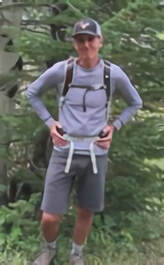 Murray Selleck moved to Colorado in 1978. In the early 80’s he split his time working winters in a ski shop in Steamboat Springs and his summers guiding on the Arkansas River. His career in the specialty outdoor industry has continued for over 30 years. Needless to say, he has witnessed decades of change in outdoor equipment and clothing. Steamboat Springs continues to be home. The publication of this article of independent and local journalism was made possible by the following sponsors.
1 Comment
edited by Barb Boyer Buck, HIKE ROCKY magazine's managing editor in partnership with the Art Center of Estes Park Every August, well-known artists from all over the country converge on Estes Park for the Estes Valley Plein Air competition, exhibition, and sale. These juried and invited artists have a limited amount of time to paint "en plein air," a French term meaning "in open air." They painted on location in Rocky Mountain National Park and within 50 miles of the Estes Valley. Special events in conjunction with EVPA include a poster/postcard and wine label contest, a nocturne paint out opportunity, a miniature contest, a group paint out, an educational program, and a Quick Paint at Riverside Plaza in which artists have a limited amount of time to complete paintings that are then auctioned to the public. Artists were juried into the show based on applications received January 2-April 3, 2022, 11:59 p.m. PST through the website, onlinejuriedshows; 37 artists were selected to participate. They all had between August 19-24 to paint as many pieces as they could and turn in up to six pieces – three for general entry, one nocturne, one miniature, and one piece to held be in reserve. None of the pieces could exceed 18'X24” before framing. Renown plein air artist Margaret Jensen of Estes Park served as the judge for the competition and awards in several categories were presented in the exhibition's opening, held at the host organization's gallery, the Art Center of Estes Park, on August 26. The show will remain up at the Art Center's gallery through September 25, 2022. More than $11,000 in cash prizes were given to the winners (listed below) in this event, which was sponsored by the Art Center of Estes Park, Plein Air Magazine, and Southwest Art Magaine. General Entry Competition Best of Show: Andrea Gabel, for “Patio Lunch” Award of Excellence (2nd Place): Richard Sneary, for “Estes Park Overlook” 3rd place Award of Excellence: Lynn Mehta, for “Under the Sky” Honorable mention: Connie Schmidt, for “Waiting for Moose” Artists' Choice Award: Richie Vios, for “Batman and Sundance” Miniatures: Award of Excellence: Richard Sneary, for “The Barrel” Honorable Mention: Lee McCloud, for “In the Rain” Nocturnes: Award of Excellence: Lorie Merfeld-Batson, for “Back at Camp” Honorable Mention: Ann Salviazu, for “View from Mary's Lake” Gold Award (Art Center of Estes Park Board of Directors): Cliff Austin, for “Family at Lumpy Ridge” Silver Award (Mayor's Award): Connie Schmidt, for “Waiting for Moose” Poster & Wine Label Contest Award: Richard Sneary, for “Copeland Falls” Quick Paint, first place: “Park Theater,” by Richard Sneary Quick Paint, second place: “Stops along the Way,” by James Sampsel Quick Paint, third place: “Anticipating Fall,” by Cecy Turner Visit the Art Center of Estes Park to see this amazing show and pick up a piece of the Rocky Mountains to take home with you! The gallery is open every day from 11 am to 5 pm for this exhibition.
Story and photos by Jason Miller Cascade Falls Trail Location: North Inlet Trailhead Roundtrip Length: 6.8 Miles Trailhead Elevation: 8,510 Feet Total Elevation Gain: 430 Feet Highest Elevation: 8,811Feet Trail Difficulty: Moderate When I was asked to do Cascade Falls for a late-June hike, I was excited to say the least. The last time I had seen the falls was six years ago. My wife and had I hiked from Bear Lake Trailhead up and over Flattop Mountain then down into Grand Lake: 17.5 Miles and 3,050 ft elevation gain. We had camped overnight and had a wild bear experience. This turned out to be a “Grand” adventure of its own, but that story is for another day. We had been so exhausted by the time we went by Cascade Falls that we didn't take the time to enjoy these awesome falls. This time, I am going to enjoy it! In order to beat the crowds, I left my house in Glen Haven at 4:20 a.m. This hike starts at the North Inlet Trailhead located in Grand Lake, CO. It's 48 miles from Estes Park to Grand Lake, but you are lucky enough to traverse Trail Ridge Road. This road was built in 1931 and gets to an elevation of 12,183 ft above sea level. The views of Rocky Mountain National Park are spectacular. It is a beautiful, clear morning with a temperature of 34 degrees at the Alpine Visitor Center. After driving down the mountain towards Grand Lake for a few miles, I was fortunate enough to see five moose and multiple elk alongside the road. I was a little surprised when arriving at the North Inlet Trail: the road access to the trailhead parking was washed out from a previous rain. This added an extra one-mile walk with slightly more of an incline than one likes to endure. Getting to the trailhead sign was a joy because the land ahead looked flatter. Through the large valley littered with pine trees I could see no one. Yes! Not a soul in sight. This hike begins with a very gentle uphill slope for the first mile or so along an old, dirt service road. You will cross private land all along this section of the trail. Please stay on the designated route. The trail eventually narrows into a single-track trail through the burnt conifers and along rocky cliffs. There are remnants of the fire everywhere to be seen: thousands of acres burnt to a crisp and large standing trees with the scars of previous fire battles are all around. The smell is horrifying. The sun glare was so intense that I kept my hat down over my eyes with sunglasses on, looking down at my feet. Please don't do this. I walked right past 3 moose. This could have been tragic. I noticed a couple more moose up ahead and continued walking slowly while trying to capture this epic event. I was able to snap a couple good pictures and a video. Traversing a little farther up the trail turned out to be more of the same. More moose and thousands of beautiful wildflowers peppered the landscape. Now we are getting to the point of the hike that takes a turn. No, not a bad turn. It just gets a little tougher. There is a slight incline for the remainder of the hike to Cascade Falls. Be prepared for an increase in heart rate. As I climbed deeper into the forest, the sounds of the river were growing louder. Was I getting closer to the river? It's getting bigger. I am at the falls! Arriving at Cascade Falls was amazing. The sound coming from the rushing water was lovely and overwhelming at the same time. I scrambled down to the lower falls and snapped a few pics. Next, I climbed back up to the trail to get to the upper falls. The vantage point from here is crazy. I love Rocky Mountain National Park. This seemed like a great spot to rest and have something to eat and drink. I am over 4 miles into this day of hiking and have yet to see any other people. It’s so peaceful. I re-energized and got on my way back. Going downhill tends to be where most of the sprained ankles happen, so go slow and steady when descending. As I was walking back through the charred forest, the smell seemed like it was burning through my nose every step of the way. Through the fire will come lots of new growth. The wildflowers and lush green grass are coming back already. Pine trees take an average of five to ten years to rejuvenate. I will put this hike on my list of "Must Do Every Year" hikes. The changes in the years to come will be nature inspiring. Rocky Mountain National Park has a reservation system again this year. If you do not have a reservation to come through the gates after 9:00 a.m. you will be turned away. “Insider Hack” – Get through the gates before 9 a.m. Take your time hiking and spend the day in Grand Lake. Go back through the gates after 3pm. No reservation needed that way. 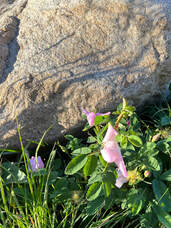 Remember to stop and smell the wild roses! Remember to stop and smell the wild roses! I love hiking early so I can avoid the crowds and have a better chance to see wildlife. By the time I made it back to my truck it was 9:45 a.m. I had seen at least 15 elk, 12 moose, and 6 people. Not bad in my eyes. Overall, this hike is relatively easy, but the difficulty lies in the distance. The roundtrip is over 7 miles from the actual trailhead. Get outside and go see this magnificent water feature! PRO TIPS
- If ya can't beat 'em ... join 'em: recreation.gov for reservations  Jason Miller, 49, is a resident of Glen Haven and is married with two children. Before moving to the area, he used to work as broker for Nestle USA and H.P. Hood milk company. Today, he is the co-owner of Lightbrush Productions, LLC The publication of this piece of local and independent journalism was made possible by Images of RMNP and Snowy Peaks Winery, both located in Estes Park.
Photos and story by Barb Boyer Buck Right around July 4 every year, Old Fall River Road opens for the season. It's a very short season for this “motor nature trail,” so I encourage everyone to try it at least once before it closes in early October. It's my favorite driving tour in Rocky and every visitor I've hosted has accompanied me on this drive. Old Fall River Road starts in Endovalley, just west of the Alluvial Fan. It's 11 miles of gravel road going up a 16% grade with many switchbacks to reach the back parking lot of the Alpine Visitor's Center on Trail Ridge Road. Thus, this is a very slow drive, especially if you take advantage of the many opportunities to pull off the road and explore (which I do). This tour is perfect for those with low mobility who would nevertheless like to see the best of what Rocky Mountain National Park has to offer. Wildlife, waterfalls, wildflowers, and stunning scenery greet you the entire way driving up this road. Since this is a one-way one-lane road, going up (you'll have to come back down via Trail Ridge Road), there are several things to keep in mind. First, be sure you have a full tank of gas. You'll not be able to go any faster than 10 mph (the speed limit is 15, but I've never achieved that), and many times, you will be stuck when motorists in front of you stop to take pictures or view wildlife. Secondly, make sure your vehicle can handle rough terrain during changing weather conditions. The road is maintained, but often has large ruts, can be icy and/or wet, and is quite narrow. Vehicles over 25 feet long and/or those pulling trailers are not allowed to travel this road. I have personally seen very large vehicles have trouble with the winding nature of Old Fall River Road. You'll need to conquer any fear of heights you may have – there are no guardrails on this road and several, very steep drop-offs – the driver needs to pay close attention and not be distracted by the sights and sounds of this beautiful drive. Along the way, you will gain more than 3,000 feet in elevation before you end up at the Alpine Visitor's Center which sits at 11,796 feet above sea level. Doing anything at this elevation may be dangerous for those with heart conditions and everyone needs to be aware of other dangers such as elevation sickness, lightening, sunburn, and dehydration. Be sure to visit RMNP's safety page before heading out with anyone who may be affected by the elevation and conditions. The good news is, with proper preparation most people will be able to see some of the highest reaches and most beautiful mountainous terrain in the entire state!
For avid hikers, this road gives access to the Chapin Creek Trail, 3.9 miles through wetlands and meadows, with stunning views of the Continental Divide. There is also an option to continue on to “all summits”: Chapin, Ypsilon, and Chiquita, which is a much more difficult hike (and one I've yet to attempt!). Soon after the trailhead pullout, Old Fall River Road emerges into alpine tundra. Ahead, you begin to see the back side of the visitor's center and all around you, you see a thriving ecosystem boasting of tiny wildflowers, numerous wildlife, and rolling hills of treeless expanse. This landscape is extremely delicate and walking on the tundra is expressly forbidden. The drop-offs along this stretch are even more steep than what was encountered previously on this road, so don't pull out of traffic unless you are sure it's a designated spot to do so! After reaching the Alpine Visitor’s Center, you have several choices. You can stop and get lunch there (but no gas, but that's OK because you filled up before you left, right?), shop for some souvenirs, and original Native American art, or visit the interpretive center to learn more about Rocky's tundra ecosystem. This is also a popular bathroom stop. When you leave the Alpine Visitor’s Center parking lot to access Trail Ridge Road, you can turn left to descend into the east side of Rocky and back to Estes Park, or, you can turn right to continue to its west side and the remarkable Kawuneeche Valley. Through this valley runs the Colorado River, its headwaters originating in the high reaches of Rocky. Several trails, including handicapped-accessible ones, picnic spots, and pull- outs offer great views of the markedly different landscape on this side of the Park. The west side of the Continental Divide tends to be more lush and boasts of a stunning variety of wildflowers you may not find on the east side. There's also a good chance you will see moose in this habitat, especially in the late afternoon. If you continue on Trail Ridge Road through the Kawuneeche Valley toward Grand Lake, you will witness the devastating destruction caused by the East Troublesome Fire in October, 2020. In places, the soil became activated and wildflowers proliferate. But you will also see areas where the top soil was completely destroyed by the raging inferno and nothing remains except tree trunks, bare of all branches and needles. I always continue into Grand Lake, a quaint small town on the shores of Colorado's largest natural lake. Some reservoirs, like Lake Granby, are much larger, but this was a sacred place for the Native Americans who first traveled up what is now Old Fall River Road to hunt in the area. Old Fall River Road was completed in 1920 and ushered in the motorizing era of visitation. The grand old lodges where people came to spend the summer and recreate in the lower reaches of Rocky were eventually torn down and replaced with parking lots, pull-outs, campsites, and picnic tables. The communities of Estes Park and Grand Lake opted for more motels as Rocky began to cater to the road-trip traveler. Pro tips:
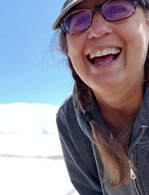 Barb Boyer Buck is the managing editor of HIKE ROCKY magazine. She is a professional journalist, photographer, editor and playwright. In 2014 and 2015, she wrote and directed two original plays about Estes Park and Rocky Mountain National Park, to honor the Park’s 100th anniversary. Barb lives in Estes Park with her cat, Percy. The publication of this work of independent and local journalism was made possible by McGregor Mountain Lodge and Backbone Adventures, both in Estes Park.
The wild requires that we learn the terrain, nod to all the plants and animals and birds, ford the streams and cross the ridges, and tell a good story when we get back home. - Gary Snyder Story, photos, and video by Dave Rusk Ahh yes, my idea of a good day in the mountains! Although, sometimes a good day in the mountains does not always lend itself to a good story. “No, we didn't get lost. Yes, we made it to our destination. It was sunny all day.” If all goes well, it can be a challenge to tell a good tale by simply sharing the joy one experiences of being in the mountains. “Yes, it was a terrific day!” And often, it's left at that. My hiking partner, Jonathan, put it in a different way, “Bad decisions make good stories.” Now, I'm not recommending that anyone go into the mountains with the intention of making bad decisions just so they can have a good yarn to spin at the end of the day. No one would want to slip off a log crossing and splash about in a stream so cold it takes your breath away and then shiver in wet clothes the rest of the day, or cower under flashes of lighting and sonorous thunder so overwhelming you feel certain the surrounding mountains will crash down upon you at any moment, all the while wondering if you will make it out with your life. But they do make good stories at the end of the day. No, when I go into the mountains, I try to avoid bad decisions. But I wondered, as Jonathan and I headed out for an early season hike up Flattop Mtn., what the possibilities were of us making a bad decision on that particular day. Would I have a tall tale to tell upon our return? Only time would tell. Normally when I hike the Flattop Mtn. trail, I'll go sometime in July when I know the trail is mostly free of snow and the alpine flowers are putting on a grand show. But I promised my editor a story on hiking Flattop, and possibly Hallett, and while I have done this hike many times over the years, I've never hiked it in early June. I do remember the first time I hiked this trail. It was a warmish July day, perhaps 80 degrees in Estes, and I was huffing my way up above the treeline, hiking in shorts and a t-shirt and feeling the warmth of the sun at these high elevations. Sweat had started to soak into my t-shirt under my day pack. But I kept noticing all these hikers that were coming down bundled up in jackets and warm hats, some even with gloves on. Odd, I thought. But once I got to the top, it made sense. Soon after I sat down to rest and have a snack, a cool alpine breeze began evaporating my sweat and I felt chilled. I was glad I hauled up extra layers of clothes in my day pack. One summer as I was hopping my way down the trail, I came across a friend from Boulder who was running up the trail. He's a head taller than everyone else with thick wavy blond hair and I recognized him right off as he side-stepped by people, keeping up a pretty steady uphill pace. As he approached I said hi and his momentum that was pushing him up the 2,874 feet of elevation gain at 11,000 ft, brought him to a halt. We talked briefly, but I realized he was in training for the Leadville 100; he's a mountain runner, and I didn't keep him long. He pushed on, regaining his momentum and leaving me to wonder how he could run up the mountain like that. On another day I was heading up, not yet breaking out above treeline, and I passed another friend (Michelle) who was already heading down and only a few miles from finishing the nearly 9 mile round trip hike. I realized, as we said our goodbyes, that she may have started early enough to watch the sun rise from the top. On many of my hikes up the Flattop trail, I encountered enumerable marmots with their bodies spread flat, soaking up the summer sun and pikas calling their high-pitched warning while in their never- ending pursuit of gathering nesting material. But mostly I remember the alpine wildflowers: moss campion, alpine bluebells, the old man of the mountain sunflowers (with the wings of checkerspot butterfly spread wide in the morning sun.) My favorite is the the deep rich blue of the Sky Pilot with its golden yellow anthers dotting the center, mixed together with golden yellow alpine avens. But this was the earliest I have ever hiked up Flattop and with all the very late May snow fall (a winter weather advisory had even been issued on the last day of May), I wondered if going was the best decision, or was I just asking for a story? Having obtained a last-minute early morning reservation the night before, we were able to get to the Bear Lake parking lot at a leisurely 7 am. We strapped snowshoes on our packs not knowing what the snow conditions might be like. Around Bear Lake, the trail started off snow-free, but then became snow covered before we got to the Flattop Mountain cutoff. The snow trail remained packed but was slippery, and after a short time we stopped to put on our shoe spikes to improve our upward traction. After visiting with some hikers already on the way down, we determined that the snow conditions would remain firm enough and enough. We found a tree well to ditch the snow shoes; we just had to remember where that spot was on the way back down! Would this be a bad decision? Most of the pack snow trail was easy to follow, but we also used a GPS tracking device (like GPSMyHike) to ensure we didn't lose the summer trail hidden below the snow. We steadily made our way up crossing through treeline. But once onto the open alpine, we were greeted by a stiff wind and we put on our wind jackets. The wind was not a biting cold and my bare hands, gripping poles to keep me steady, never got too cold. At one point, we stopped for a breather at a bare patch of tundra and I saw movement on the ground. There, not more than 10 feet from us were a pair of ptarmigan, their plumage transitioning from a winter white to a mottled summer brown, but blending perfectly with the transitioning tundra. Believing themselves invisible, they slowly strutted away from us until we finally moved on. The trail switchbacks roughly a dozen times as it works its way up the east ridge coming finally to the Emerald Lake overlook with its gaping view down into the Tyndall Gorge and across the Front Range to Longs Peak. After that, it cuts back in a northerly direction across an open slope, with views to the Mummy Range, before bending around onto a northwestern slope that looks across to Notchtop and down into the Odessa Gorge. It was along this stretch that I started to feel some exhaustion. Some people are active all winter, snowshoeing here and there, embracing the strong winter winds. I'm more like a pika. Pikas do not hibernate during the winter months, they stay active, but also they stay sheltered in their rocky burrows grazing on the haystacks they gathered the previous summer and emerging now and then when the weather is favorable. So for me coming out of the winter months, I like to start off with some lower elevation moderate hikes to regain my summer legs. We were pushing against a steady and relentless head wind. I had pulled the hood of my wind jacket up and the steady roar of the wind with the constant flapping of the hood was starting to get to me. But I knew the horse tie-ups’ area was ahead and that is typically a good area to catch a snack break before the final push to the Flattop summit, so I used that as my goal to press on. But as Jonathan up ahead approached the spot, he continued on heading up, making clear his intention to continue. He had stayed pretty active all winter and was already hiking well. He kept hiking a little ways farther up before stopping and waiting while I chugged my way up to him. I halted and glanced up. “Beautiful day!” he declared with a big grin. I had to agree. The sun was out and the scenery was spectacular. I nodded my head in agreement, wondering when we would take a break. He described a spot between Flattop and Hallett Peak at the head of the Tyndall Gorge where we could take a wind shelter break behind a giant boulder. That became my new goal. We plodded our way up the snowfield and then rolled over the rounded summit of Flattop. A trail sign indicating the direction of two trails that head for Grand Lake is the only thing that serves as a summit marker. We took a brief pause in the flapping wind to take pictures, looking off to the west toward the Never Summer Range. We had not seen anybody else for the last mile. Pushing our way in a southward direction, we fought staunch westerly winds pushing us east. As we approached the top edge of the Tyndall Gorge, the winds gusted, roared, and became even stronger as the air flow began to funnel its way down toward Emerald Lake. I stumbled from rock to rock, following Jonathan when he stepped down into a wind eddy of a giant boulder, and just like that the conditions changed. No more push from the wind. No more rattling from my hood. I felt tremendous relief as I dropped my pack and adjusted a flat rock to sitting on. Pulling out our water and food stuffs, we had a perfect view of the west slope leading to the summit of Hallett Peak. The winter winds are so relentless during the winter months on the divide that they had not allowed for any snow to accumulate and we could see we had an unobstructed approach to the top. There was no reason not to continue our trek to the summit of Hallett, if we wanted to. But as I sat there resting, I could feel a drowsiness settling in and my eyelids felt heavy. I was quite sure that I could push myself to the top, but then there was still the descent back to the car to be considered. I settled in a little more on my rocky chair. I was at a decision point. Suddenly, Jonathan hopped up and started preparing his pack. He was ready to take it on and I almost followed suit. But then I said he should go ahead; I needed a rest. Both of us knew that splitting a group is not always a good decision, but I assured him from where I was that I could watch his progress and would be ready to go when he got back. He took off like a raven catching a strong tail wind. I took off my wet shoes and socks and laid them in the sun, then rummaged in my pack for a pair of dry socks. That felt good. I nestled back into my rocky aerie and soon dozed off for maybe 10 mins while Jonathan made his way up. I awoke and found him topping out and then watched his descent. It only took him 23 minutes to get up and 20 minutes to get back down. As I got myself ready to meet him on the divide, I knew I had made the right decision. I felt ready if not refreshed. I popped out of the eddy and back into the gush of wind. Then, we began our hike out. 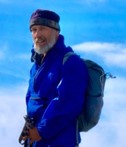 Dave Rusk has been sauntering and taking photographs through Rocky Mountain National Park for decades. He is the author publisher of Rocky Mountain Day Hikes, a book of 24 hikes in Rocky, and the website of the same name. He is the publisher of HIKE ROCKY Magazine and an important content contributor to all of these endeavors. The publication of this piece of independent and local journalism was made possible by Rambo's Longhorn Liquor and the Country Market of Estes Park.
Story and photos by Marlene Borneman Editor's note: this piece is included in the article, "Three of the Best Wildflower Hikes in Rocky," by Marlene Borneman, published in the June/July edition of Hike ROCKY magazine. WEST UTE TRAIL Mileage: 9 miles round-trip (one way 4.5 miles) Elevation gain: 1,038 elevation loss one-way; 1,038 elevation gain round trip Rating: Easy one-way and Moderate round-trip Life Zones: Alpine/subalpine Peak Bloom: July-August The hike begins across from the Alpine Visitor Center (AVC) at 11,796 feet and ends at Milner Pass 10,758 feet smack on the Continental Divide! It is an approximate 23-mile drive from the Beaver Meadows entrance station to the Alpine Visitor Center. From the Grand Lake park entrance, go north on US 34 for 20.2 miles to the AVC. Milner Pass is 4.3 miles west from the AVC on Trail Ridge Road. There are restrooms at the AVC and at Milner Pass. A pleasant way to do this excursion is with a car shuttle making this a one-way trip. This avoids uphill gains and retracing steps. Place a car(s) at the Milner Pass Trailhead. One car brings the driver(s) back up to the AVC to begin the hike. This is one of my choice hikes to view a variety of exquisite alpine and subalpine wildflowers. In addition to wildflowers, marmots, pikas, snowshoe hares, and elk are often seen. Another bonus is spectacular views of the Never Summer Range. I never tire of this hike. 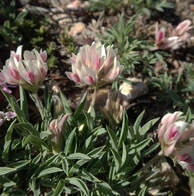 Alpine clover Alpine clover Start hiking by crossing Trail Ridge Road at the AVC parking lot to the obvious trail southwest. The trail crosses the expansive alpine tundra taking in alpine clover, dwarf clover, Parry's clover, blackhead daisy, alpine sunflower, American bistort, mountain dryad, spotted saxifrage, alpine stitchwort, alpine parsley and loads more. In July, the petite elegant snowlover can be abundant and a treasure to find. Cushion plants, champions of the tundra, are at home here boasting their fortitude against the elements. Moss campion, alpine forget-me-not, and alpine phlox are a few of these sturdy plants to be seen on this trail. 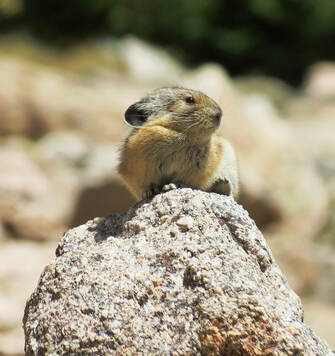 Pika Pika There is a short uphill section within the first mile reaching a rocky depression on the left (east) side of the trail. These large rocks shelter pikas and marmots. The pika's favorite food, alpine avens, is plentiful on the tundra. Pikas do not hibernate so they must gather food all summer to store in their hay piles to sustain them in the winter. Just beyond this spot the uncommon gold bloom saxifrage forms a bright gold carpet. I enjoy taking time with these flowers, getting down low with my hand lens to see the tiny golden spots on each petal. Arctic gentians add to the mix anywhere from mid- august through October. Many species of paintbrush flaunt the tundra with various shades of red, magenta and pale yellow. An often overlooked plant on the tundra is sibbaldia. The common name is cloverleaf rose. Sibbaldia has tiny yellow flowers and leaflets that resemble a three-leaf clover. Also often passed by are two ground hugging willows, the alpine willow and snow willow. They often grow side by side. One way to tell them apart is by their leaves. The alpine willow has broad bright green leaves with pointed tips and a deep mid-vein, whereas the snow willow leaves are rounded on the tips with a prominent netted vein pattern. The tiny flowers (catkins) lie within the leaves. Farther on to the east, three pristine tarns create peaceful spots for burnt-orange false dandelion, pinnateleaf daisy, dwarf goldenrod, subalpine daisy, dwarf chiming bell, Whipple's penstemon, starwort, mountain laurel, rose crown and king's crown. In August, start looking for several species of gentians in this area. Arctic gentians add to the mix anywhere from mid- august through October. Many species of paintbrush flaunt the tundra with various shades of red, magenta and pale yellow. After hiking approximately 2.3 miles you come to Forest Canyon Overlook. This marks approximately a halfway mark for the hike. In this area you may see Parry's lousewort, pale agoseris and Coulter's daisy. Heading down, the trail often becomes muddy from melting snow. Striking pink elephanthead fills the moist meadows. Before mid-July you may even find snow along this part of the trail. As the trail levels out, remaining muddy from the snow melting above and the many rivulets of water coming down the steep slopes above, watch for gray angelica, brook saxifrage, alpine speedwell, Hornemann's willowherb, marsh marigold, and globeflower that enjoy this damp habitat to the fullest. A strange appearance in wet areas is the bishops cap. Another find here in late July-August is the fringed grass-of-Parnassus. If you are there at the right time, waves of brilliant yellow come into view with the arrowleaf ragwort. There are a few stream-crossings to negotiate along here, too. As the trail drops farther into subalpine forest, look closely for the tiny plants in the Heath family; one- sided wintergreen, pyrolas, and wood nymphs sheltering under foliage. After 3.8 miles at the signed Mount Ida Trail junction, swing right for approximately 1.0 mile down to Milner Pass. Along the switchbacks, robust masses of heartleaf bittercress show off brilliant white petals. Jacob's ladder, hooked mountain violet, spotted coral root orchid and the more elusive wood nymph grace the forest floor. At this juncture, columbines, bracted alumroot, strawberry blight, and alpine sorrel can also be seen among the crevices. In August, blacktip senecio will be seen in abundance along the stretch of trail following the Poudre Lake shore all the way to the trail head. Take time to look under the flower head and see the black tips on the phyllaries. Purple fringe and paintbrushes are also in the assortment of flowers along Poudre Lake shores down to Milner Pass. 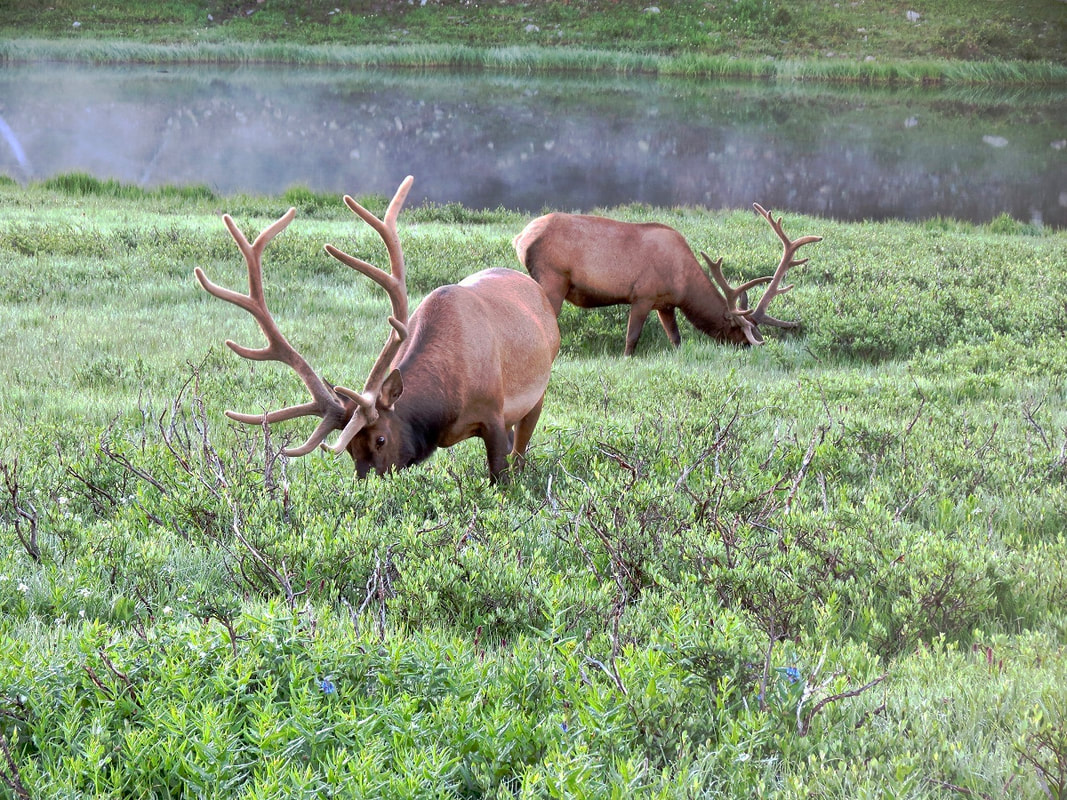 Massive bull elk near Poudre Lake (near Milner Pass). Massive bull elk near Poudre Lake (near Milner Pass). 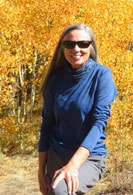 Marlene has been photographing Colorado's wildflowers while on her hiking and climbing adventures since 1979. Marlene has climbed Colorado's 54 14ers and the 126 USGS named peaks in Rocky. She is the author of Rocky Mountain Wildflowers 2nd Edition, The Best Front Range Wildflower Hikes , and Rocky Mountain Alpine Flowers. The publication of this article was made possible by Rock Creek Pizza of Allenspark and Castle Mountain Lodge of Estes Park, supporting local and independent journalism.
Video and story by Murray Selleck, HIKE ROCKY magazine's equipment specialist Editor’s note: HIKE ROCKY receives no compensation from brands reviewed by Murray. At any point in human history, whatever tools or conveniences we had at our disposal to make our lives more comfortable were close to perfect, for the time. Thankfully, design evolved to help us along our way. A drafty cave evolved into a cozy cabin. A smoky campfire became an easy-to-control kitchen stove. And perhaps most importantly, cold rocks and lumpy logs evolved into incredibly comfortable and portable camp chairs! Thank goodness for designers and engineers who can see both the limitations of a current design and the potential for something better. Depending on how you think of them, camp chairs are a relatively new phenomenon. However, I do remember being a youngster, sitting in my grandparents’ back yard in the 1960’s. The classic lawn chairs with their cheap webbed fabric and folding aluminum frames might be considered the first portable camp chairs. The only thing excellent that I remember about them are the memories of watching lightning bugs, fireworks, and the stars during those warm Texas summer nights. For many years of my camping and backpacking experience, the well-placed rock, log, or lumpy tundra sufficed as my backcountry chair. The mountain and ocean scenery always made up for my sore backside or legs that went to sleep because of an awkward position. Oof, sometimes standing up was an adventure of dizzying head rushes along with sore muscle stretches enhanced with dramatic, out loud, groans. The sound effects did help… As I recall, the venerable Crazy Creek Chair company took the initial steps to adding sitting comfort to our campsites. They were based in Montana along with several other companies that produced accessories that would convert sleeping pads into camp chairs. Helinox came out with their original Camp One chair not that many years ago. Taking the tent-pole concept of shock-corded aluminum poles and and then adding a sling of fabric to complete the chair, Helinox created a truly easy-to -carry, lightweight, and portable sit-up-off-the-ground camp chair. Once the Helinox chairs hit the market, it took only minutes for the outdoor industry to create an intense battle of manufacturers who added their own take on similarly-designed camp chairs. Today the number of choices of backpacking festival, and camp chairs is pretty overwhelming. Where do you begin and how do you choose? As always, let your intended use and, in this case, comfort, be your guide. Here are five excellent choices to help you sit, relax, and lounge your day or evening away in comfort. Nemo Stargazer Lounger Deluxe The Stargazer is perhaps one of the most unique and misunderstood chairs. It’s a chair, a lounger, and it swings! It is incredibly comfortable if you give your initial sitting test a reasonable chance. Often folks sit in this chair all too briefly and miss out on its features and special capabilities. The key here is its adjustability. Sit back. Put your feet up on a cooler. Stay awhile! The set-up is incredibly simple. Fix the shock-corded aluminum sections together in the appropriate slots of the hubs to form the frame. Attach the two side clips to the two most upright vertical sections, fix into position the back rest supports (optional), and that’s it. Three easy steps and you’re ready to enjoy a relaxing time in the mountains. The unique thing about this chair is that there are no straps for you to adjust to manage your sitting position. Just by leaning forward or back the chair’s straps do all the work for you, automatically. You can sit tall and upright. Or, simply lean back and the self adjusting webbing allows you to recline and lounge. Lean all the way back and you have the most comfortable view to stargaze the night away. When I’ve used this lounger and reclined all the way back, I like to have my feet up on a cooler, or a stump, or some other kind of way to prop my feet up. This little enhancement takes the comfort level way over the top. Talk about total relaxation! And the fact that this chair also swings is particularly unique to the outdoor industry. Sure, there are rocking chair options out there but if you don’t have the perfect surface to set it up on you’re left with a rocking chair that doesn’t rock or it feels like it has the hiccups! With the Nemo Stargazer you can rock smoothly to your heart’s own beat. Now, here is chair with rhythm! A convenient spill-free cup/bottle holder, adjustable headrest/pillow, stash pocket, and padded carrying case round out the feature list for this combo chair/lounger. The specs: $249.95. Dimensions 27x36x44 in. 7lbs 2 oz. Another great chair to check out from Nemo is their Moonlight Reclining Chair. Travel Chair Shorty Camp Couch When it comes to the ultimate simple set-up, the Travel Chair Shorty Camp Couch is it. Take the couch out of its storage bag and spread the frame out. The couch material is already attached. Spread the frame and legs out and it’s completely set up with nothing left to do but relax. This two-seater is very comfortable whether you share it with a friend or you spread out solo-couch potato style. The only complaint I’ve heard about the Shorty Camp Couch is, for some people, it sits too low. (Did they check out the Shorty Camp Couch’s name?). They say it is too hard to get up from. I understand that but any effort is a good effort and if it takes a little effort to get up from the couch I think that can be a good thing. Engage those muscles! I find the height of the couch to be really nice. Not too high that it reduces comfort and not too low that you feel you’re sitting on the ground. At this height, you can extend your legs out with comfort. The Travel Chair Camp Couch offers the perfect compromise of campsite sitting elevation. Sharing this couch with a friend or sitting close to your partner as daylight fades is really nice. Single-seating chairs are nice and all but a couch? Snuggling in close to your spouse rather than being separated with two chairs is a wonderful thing… especially as the temperature drops and the stars begin to shine! Adjustable arm rests, insulated cup holders, and an easy-to-carry storage bag round out the features. The Specs: $150.00. 44” wide. 31.5” tall. 13.5” off the ground. 16.5 pounds. 600lbs. capacity or 300lbs per seat. Another great Travel Chair to check out is the ABC Buffalo Plaid Chair. What’s not to love about red and black buffalo plaid? (super cool) Eno Lounger DL - There is a love/hate relationship between campers and their choice of camp chairs. What you may find really comfortable and the perfect height from the ground your best friend may be thinking, “Are you kidding me?” And so I say this: splitting the comfort test by the slimmest of margins I find the Eno (Eagles Nest Outfitters) Lounger to be one of the most comfortable and relaxing chairs to end the day with. It feels like you are sitting in a cocoon of comfort. It practically feels like you’re snugged into an upright hammock. This makes sense since ENO specializes in hammocks. The Lounger is just an incredible extension of their hammock designs. The tall back of the Lounger DL allows for safe napping (or just resting my eyes, as I like to say), by eliminating the dangers of the head bobbing, neck cracking, and whiplashing when falling asleep sitting up. Why ruin a perfectly good nap with a painful bobble-head impersonation? Set-up is a simple task. Fix the shock-corded aluminum poles into their appropriate hubs, attach the chair fabric, and voila! You’re done. I like to attach the chair fabric to the lower pole sections at the bottom of the chair first. Attach the top of the chair to the back poles second. You can use the leverage of the two longer poles that form the back to push them together to attach the chair’s fabric with ease. The lounger has adjustable legs to lower or increase your seating height from 3” to 10” off the ground. You can sit a little closer to the ground (important at festivals where chair height restrictions might be a consideration) or extend the additional pole sections to elevate yourself a bit higher up. If the chair height is the only camp decision you have to make at the end of the day count yourself lucky and lazy! A cup holder, two storage pockets, and an integrated, very comfortable pillow round out the feature list. The Specs: $139.95. 74 ounces. 250 lbs capacity. Dimensions 32x23x37. Another great chair to check out from Eno is the lightweight Lounger SL. Big Agnes Big Six Big Agnes was the former USA distributor of Helinox chairs. Their business relationship ended, so logically Big Agnes came out with their own design of camp chairs. While the concept is similar there is a durability and design difference that makes the Big Agnes Big Six worth a look … er, I mean, a sit-down. Big Agnes doesn’t use hubs to form the frame that supports the chair once it’s set up. Instead the shock-corded aluminum pole sections have a groove in them that only let the poles nest together in a specific way. The poles all slot through each other without the use of hubs. The groove or key design not only locks the poles together effectively but the groove also creates more surface area so the poles and the holes they slot through won’t “volcano” out. The shape of the poles won’t deform over time, the attachments make the connections stronger. And since there are no hubs, which can prove bulky, the chair packs into its stuff sack easier, and is lighter. The Big Six offers a more upright sitting position and the seating height is higher than the other chairs mentioned earlier. So if you prefer not to slouch and like a more upright position, this chair will be a nice choice. The seat is nice and wide (24”) ‘cause we know not all seats are the same. The tall upright back still offers the safe napping feature that I find to be critical when choosing a camp chair! One more integrated clever design is the self-equalizing center pole which levels the chair on uneven ground. No more endless searches with your construction level to find the perfect spot to set up your chair. Assemble it, set it, and sit in it! The Specs: $189.95. 3lbs 3 oz. 300 lbs capacity. Another excellent chair to check out from Big Agnes is the Skyline UL chair. If you want to backpack with a chair and save weight and space this one can do it all. Big Agnes Mica Basin The Mica Basin offers the same features as the Big Six but it is a low-back chair. Its back rest is not as tall or as nap friendly. The design offers a more compact chair both in its overall size but in its packed size as well. If your pack, truck, camper, or trailer is tight for packing space the Mica Basin will be a good option. Ready to dayhike, camp, or backpack? Pull up a chair, relax, put your feet up, and stay while! 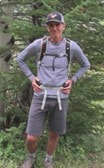 Murray Selleck moved to Colorado in 1978. In the early 80’s he split his time working winters in a ski shop in Steamboat Springs and his summers guiding on the Arkansas River. His career in the specialty outdoor industry has continued for over 30 years. Needless to say, he has witnessed decades of change in outdoor equipment and clothing. Steamboat Springs continues to be home. Story and photos by Marlene Borneman Editor's note: the hike to Timber Lake is just one of three of the best wildflower hikes in Rocky Mountain National Park included in the June/July issue of HIKE ROCKY magazine. Become a member today to read about the other two! TIMBER LAKE Mileage: 10.9 miles Round Trip Elevation gain: 2,000 feet Rating: Moderate - Strenuous Life Zones: Montane, subalpine Peak Bloom: July – mid- August COMPLETE TRAIL PROFILE This is terrific wildflower hike on the west side of the park through a broad range of habitats. The East Troublesome fire forever changed the landscape in some areas of the park's west side, however this trail was spared. Be aware, moose, elk and deer frequent this trail. The hike begins at the Timber Lake Trailhead approximately 32 miles from the Beaver Meadows entrance and 10 miles from the Grand Lake entrance. There are restrooms at the trailhead. A well-defined trail leads through a small meadow for a short distance. The trail then heads southeast through both dry and moist lodgepole pine and aspen forest where small-leaf pussy toes, Parry's milkvetch, showy locoweed, Richardson's and wild geranium, cinquefoil, and kinnikinnick are scattered. The tiny one-sided wintergreen, green-flowered wintergreen and pink pyrola are found here too under the shady canopies. 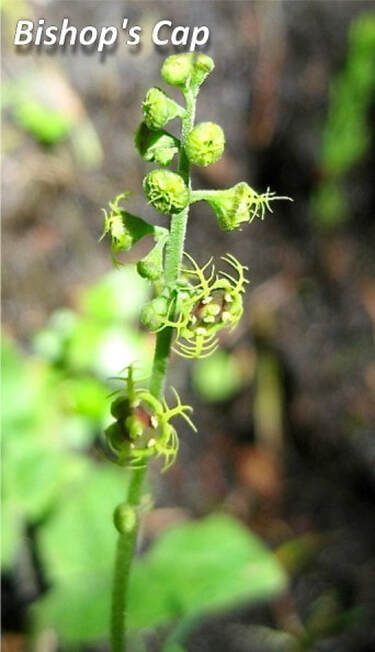 Heartleaf arnicas thickly fill in the hillsides with their bright yellow faces. In the moist forest you may see a flower that has a rather peculiar appearance. That is the bishops cap, also known as five-star miterwort. This flower often goes unnoticed even though it grows in clusters of a dozen plants or more. This is likely because it is very tiny and green in color. I take a hand lens just to gaze upon its amazing art work. Soon a bridge crosses Beaver Creek where the trail becomes steeper and switchbacks up southeast through a conifer forest. Plants that prefer a drier habitat can be found here such as pinedrops, white hawkweed, and Fendler's ragwort. 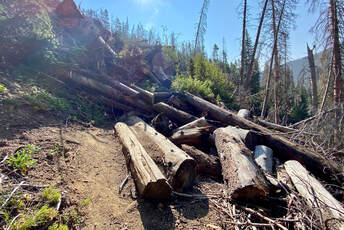 Landslide on the Timber Lake Trail. Landslide on the Timber Lake Trail. Within two miles there is a large landslide area that can be difficult to cross. There are large boulders and large downed trees to climb over and around. The stretch is about 70 feet wide before connecting back to the established trail. 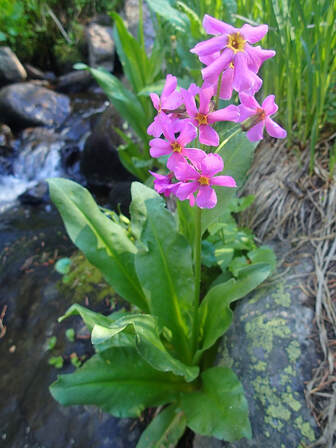 Parry's Primrose Parry's Primrose There are several small tributary streams and many seeps along this trail which provide the perfect spot for Hornemann's willowherb, twinflower, Parry's primrose and American alpine speedwell. Fringed grass of Parnassuss is the big prize to see in these wet shady areas. The hike continues along the lower slopes of Jackstraw mountain where mountain death camas, sickletop lousewort, fern leaf lousewort, red paintbrush, and fireweed prosper. Heading southeast the view soon opens out along a boggy area where white and green bog orchids maybe found along with star gentian, fringed gentian and elephanthead. After a short steep climb the trail comes to a beautiful meadow where subalpine daisies and saffron ragwort gather in masses. Heading southeast the trail steepens following the outlet stream to the lake. Tall chiming bells and heart-leaf bittercress fill in around the flowing waters. The meadows surrounding Timber Lake lakes outlet stream are very marshy. The soggy ground is loaded with marsh marigolds, globeflowers, and alpine laurel, also called mountain bog laurel. Timber Lake makes an idyllic setting for lunch taking in the view of the west side of Mount Ida. Marmots are part of the scenery at the lake so take care not to leave your pack unattended. 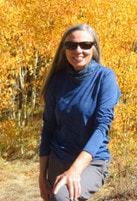 Marlene has been photographing Colorado's wildflowers while on her hiking and climbing adventures since 1979. Marlene has climbed Colorado's 54 14ers and the 126 USGS named peaks in Rocky. She is the author of Rocky Mountain Wildflowers 2nd Ed, The Best Front Range Wildflower Hikes, and Rocky Mountain Alpine Flowers. Click here to purchase Marlene's books Story and photos by Marlene M. Borneman Editor's note: the hike to Bluebird Lake in Wild Basin is just one of three of the best wildflower hikes in Rocky Mountain National Park included in the June/July issue of HIKE ROCKY magazine. Become a member today to read about the other two! Whether you are looking to broaden your skills to identify flowers, find a rare plant, photograph a unique flower, or just to soak in the sheer beauty of an eye- popping field of color, wildflower hikes are a gratifying adventure for both body and mind. Whatever trail you decide to explore, simply delight in this world filled with wildflowers! What makes a good wildflower hike? Trails that weave through life zones provide many opportunities to view and identify a wide range of wildflowers. I feel so fortunate that Rocky Mountain National Park encompasses four life zones: foothills, montane, subalpine, and alpine where over a thousand species of wildflowers call home. I look for trails with a diversity of habitats that will in turn provide a diversity of flower species. Hike in peak bloom. “Peak bloom” refers to the most likely time to view a wide range of flowers with the greatest numbers in bloom. Keep in mind that there will always be early and late blooming flowers before and after peak bloom. There are seasons within seasons so expected appearances sometimes vary by weeks from year to year. Nature strictly controls blooming times with current temperatures and moisture levels. These variables fluctuate year to year making the ever-changing blooming times new and challenging. They determine a generous season or a sparing one. I want wildflowers hikes that offer a “wow” factor, making for a memorable moment whether it is a rare wildflower or an endless multi-colored meadow. An extra bonus are the many pollinators that visit these flowers. Interactions between wildflowers and pollinators are a wonder to observe. As with any hike, be prepared for ever-changing weather in the mountains. Dogs are not allowed on the trails. Plan to pay an entrance fee and have a timed- entry pass depending on your start time. Protecting Colorado's flora is an essential element to the enjoyment. Never pick wildflowers! Do not attempt to transplant wild plants. Be aware it is illegal to collect plants in the national parks and national forests. Please be mindful of the restoration signs in designated areas. Al Schneider, creator of www.swcoloradowildflowers.com, says it best: “Admire them in the wild and let them live.” Don't forget a hand lens and a wildflower guidebook to enhance your enjoyment. BLUEBIRD LAKE Mileage: 12.8 miles Elevation gain: 2,478 feet Rating: Strenuous Life Zones: Montane, subalpine, and alpine Peak Bloom: Late July-August COMPLETE TRAIL PROFILE This is spectacular hike in Wild Basin takes you from a moist montane forest to alpine terrain. Waterfalls, fast flowing streams, and a small pond are features along the way with the finale of a stunning alpine lake surrounded by high peaks on the Continental Divide—graced by magnificent wildflowers. Begin at the Wild Basin trailhead following the Thunder Lake trail. Along the first section, mariposa lily, wild geranium, sulphur flower, mountain harebell, wild rose shrub, Solomon's seal, Nuttall's larkspur, pinedrop, penstemon, and many more species line the fringes of the trail. 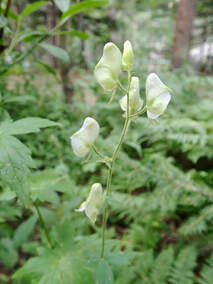 White Monkshood White Monkshood Following North St. Vrain Creek, Copeland Falls, Calypso Cascades are passed before Ouzel Falls is reached. Sections close to the creek are home for monkshood and cutleaf coneflower lining both the south and north sides of the trail. You may even spot the uncommon white monkshood. Delicate small plants can be found along here, too: wood nymph, pyrolas, spotted coralroot orchid, violets, one-sided wintergreen and pipsissewa. As Ouzel Falls is reached, cross a substantial bridge. Along the falls see sprinkles of Parry's primrose, columbines, cowparsnip, diamond-leaf saxifrage, and lovage. 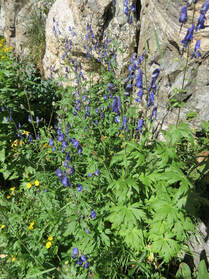 Columbian Monkshood Columbian Monkshood At 3.4 miles you will come to the junction with the Bluebird Lake trail. The trail takes a southwest direction and within 1.2 miles arrives at the junction with Ouzel Lake trail. Stay on the Bluebird Lake trail following a stretch along a ridge. The 1979 Ouzel fire is still evident here with old snags and small tree growth but lots of other vegetation has filled in. There are many red elderberry shrubs, wild raspberry, mountain strawberry and twin berry shrubs along this stretch. Soon you will look down on Chickadee Pond. It is worth going down to the pond watching your steps over wet, loose rocks. Chickadee Pond hosts yellow pond lilies and in the shallow water near the shoreline buckbean is noticeable. Just 1.75 miles and right under 1,000 feet of elevation gain to go. In late-July, mid-August get ready for a breathtaking display of wildflowers ahead. The high meadows below Bluebird Lake explode with a mass of brilliant hues of white, yellow, golds, reds, pinks, purples, and blues. Many shades of paintbrushes mixed in with elephanthead, subalpine daisy, American bistort, hairy arnica, nodding ragwort, arrowleaf ragwort, Colorado Blue Columbine steal the scene. The trail climbs steeply here with switchbacks coming to a short narrow canyon. Take your time watching for small cairns that will lead to the top with the overpowering view of the lake! Mount Copeland, Ouzel Peak, and Mahana Peak provide a grand backdrop. Arctic gentian scatter around the lake in mid-august- September. My eye always seems to catch more wildflower sightings on the way down so keep alert.  Marlene has been photographing Colorado's wildflowers while on her hiking and climbing adventures since 1974. Marlene has climbed Colorado's 54 14ers and the 126 USGS named peaks in Rocky. She is the author of Rocky Mountain Wildflowers 2nd Ed, The Best Front Range Wildflower Hikes, and Rocky Mountain Alpine Flowers. In partnership with the Art Center of Estes Park Mary Morse has been working with fiber for most of her life. She learned to knit in the first grade and has been felting her own materials for more than two decades. She is the current featured artist at the Art Center of Estes Park, in conjunction with the FACE OF FIBER in the Rockies annual show. She delights in creating designs inspired by nature and coloring her raw materials with natural dyes, including aspen leaves. One of her specialties is making felt hats. In the video above, Mary demonstrates how to felt a flower adornment on one of the hats featured in her show, “From the Creation: Natural Inspirations.” Mary is hosting Cari Cook as a guest artist in this vibrant exhibition. The show runs through July 19 and thereafter, photographer Scott Dorman of Estes Park will be featured July 22-August 3, 2022. To see the entire schedule, visit the Art Center of Estes Park’s website. "The classroom crafts got her started with natural dyeing and working with wool and silk. She had the idea that she needed to learn feltmaking. She signed up for a hat making class with Anne Sneary, who was the famous feltmaker in Boulder at that time. She made her first felt hat, wore it, and became a hat person. Soon she started making felt full time and her little business “full Spectrum fiber Arts” was born. For the next 10 years, she and her husband Fred traveled all over the country to art and fiber festivals. She marketed her handmade felt hats, tapestries, scarves, and other fun stuff. She taught classes, and got some cool awards. She had a mail order catalog of felt items. She kept experimenting and innovating with many techniques and goals. In 2004, she and her husband acquired the general store in Ward, and 'full Spectrum fiber Arts' was based out of there for 14 years in a gallery in the back. "When they sold the store and “retired,” she started showing her work at The Glass Tipi, the wonderful little gallery across the street from the store in Ward. After she was invited back to the Winners Circle in the FACE of Fiber Show at the Art Center of Estes Park, she joined and began showing there too. Her fiber art is also at The Old Gallery in Allenspark. These three galleries keep her plenty busy in her off grid studio back in the woods at 9000 feet where she and her husband live in small cabin. Years ago, she started a “round alphabet series” of tapestries with one-word titles. She got to the letter M for music. Now she is continuing her series with N- Nature, O – Owlets, and P – Proverbs 5:3-5. Stay tuned! She also creates stained glass felt and art inspired felt scarves. She works with fibers dyed with aspen leaves, flowers, and plants. These natural materials get her going, and the possibilities are endless
|
Categories
All
|
© Copyright 2025 Barefoot Publications, All Rights Reserved


